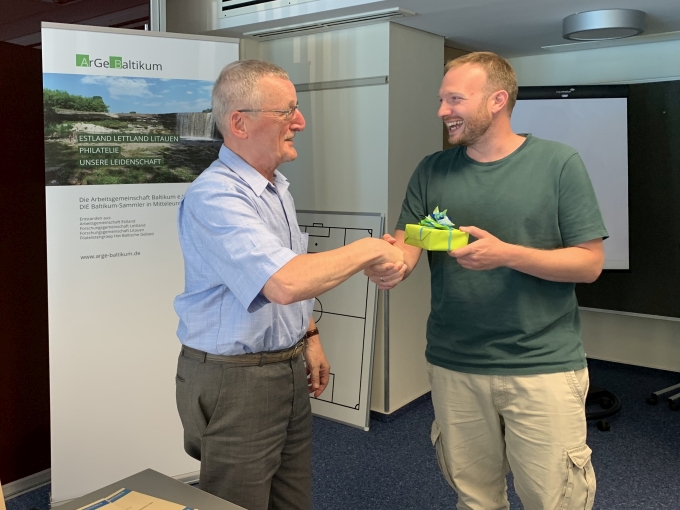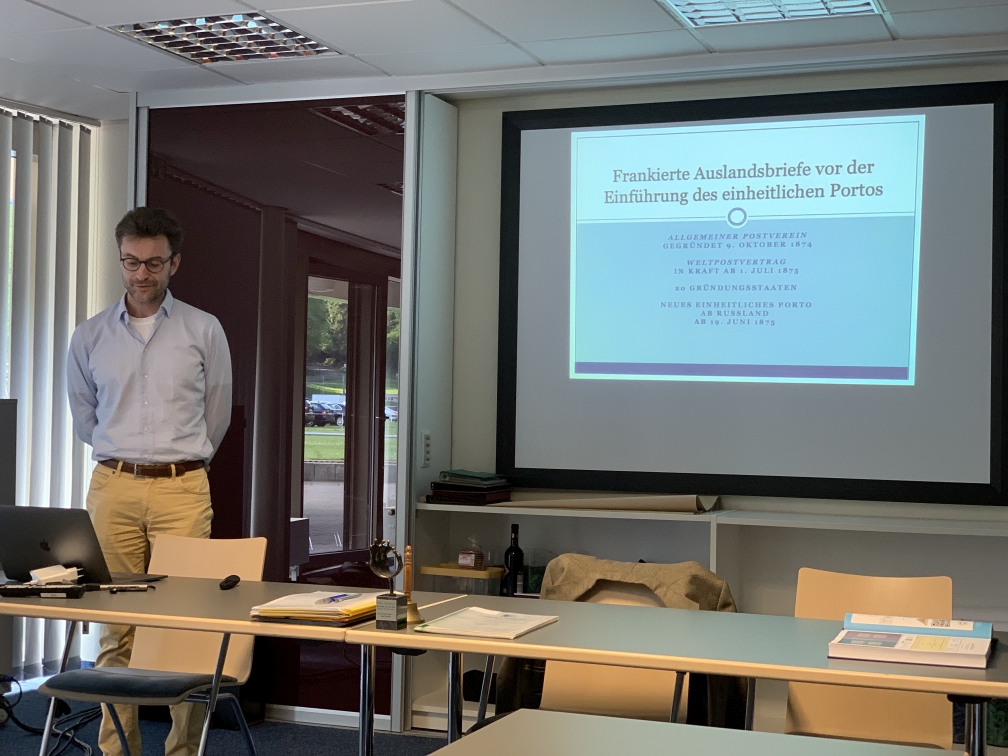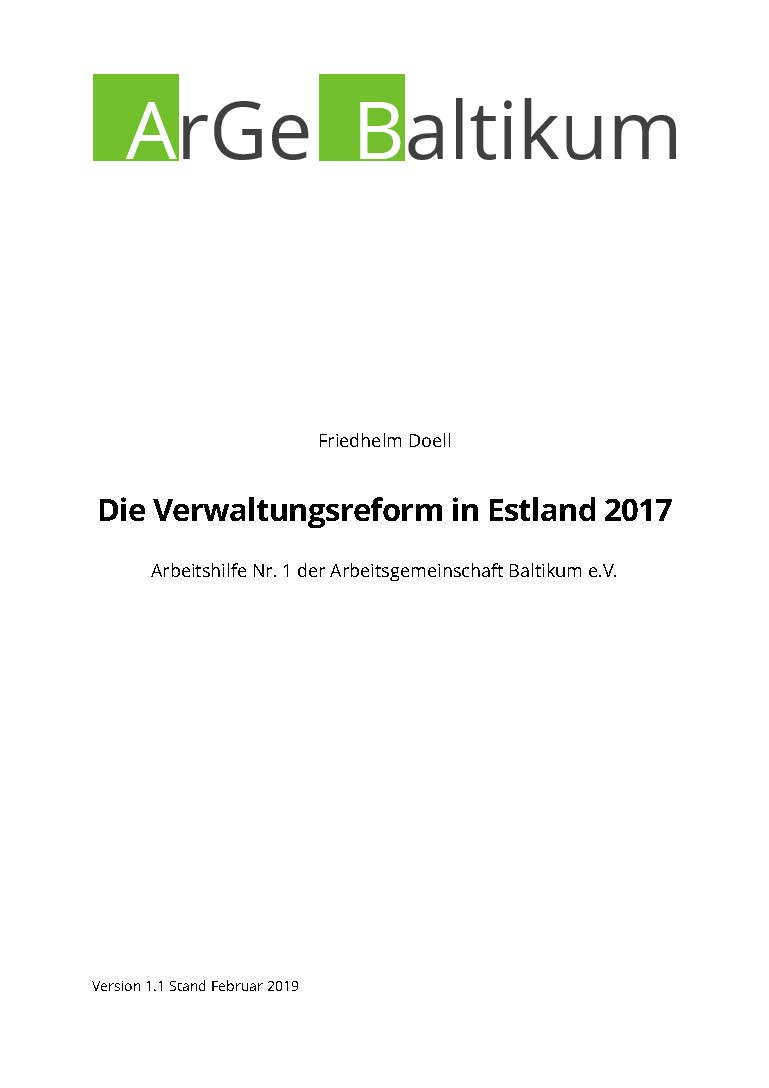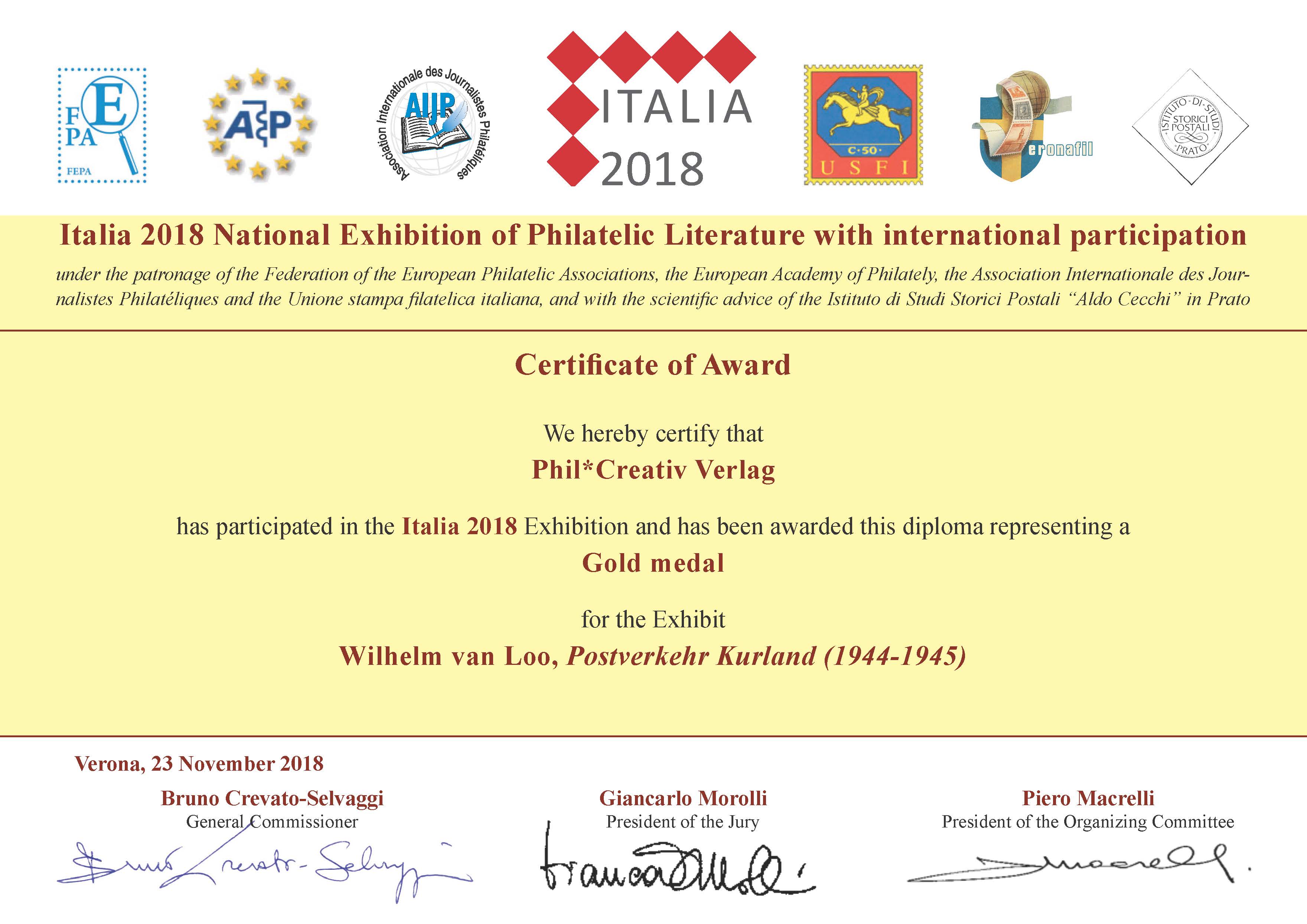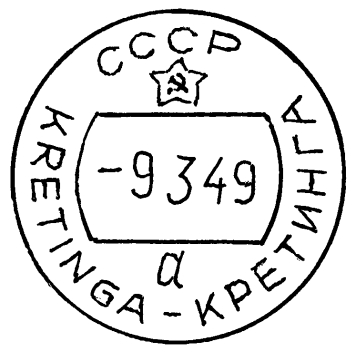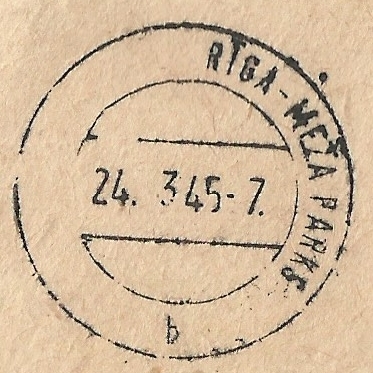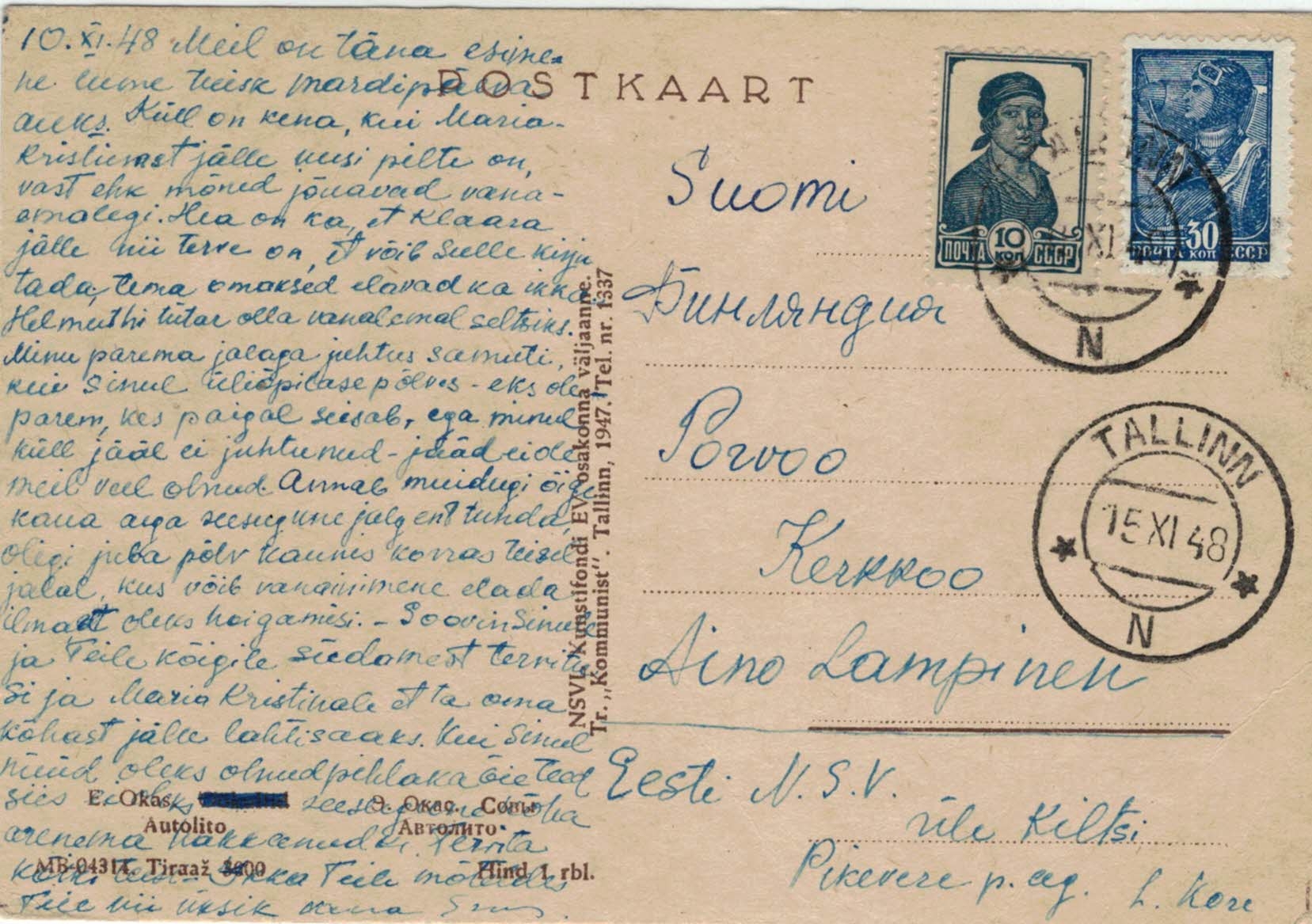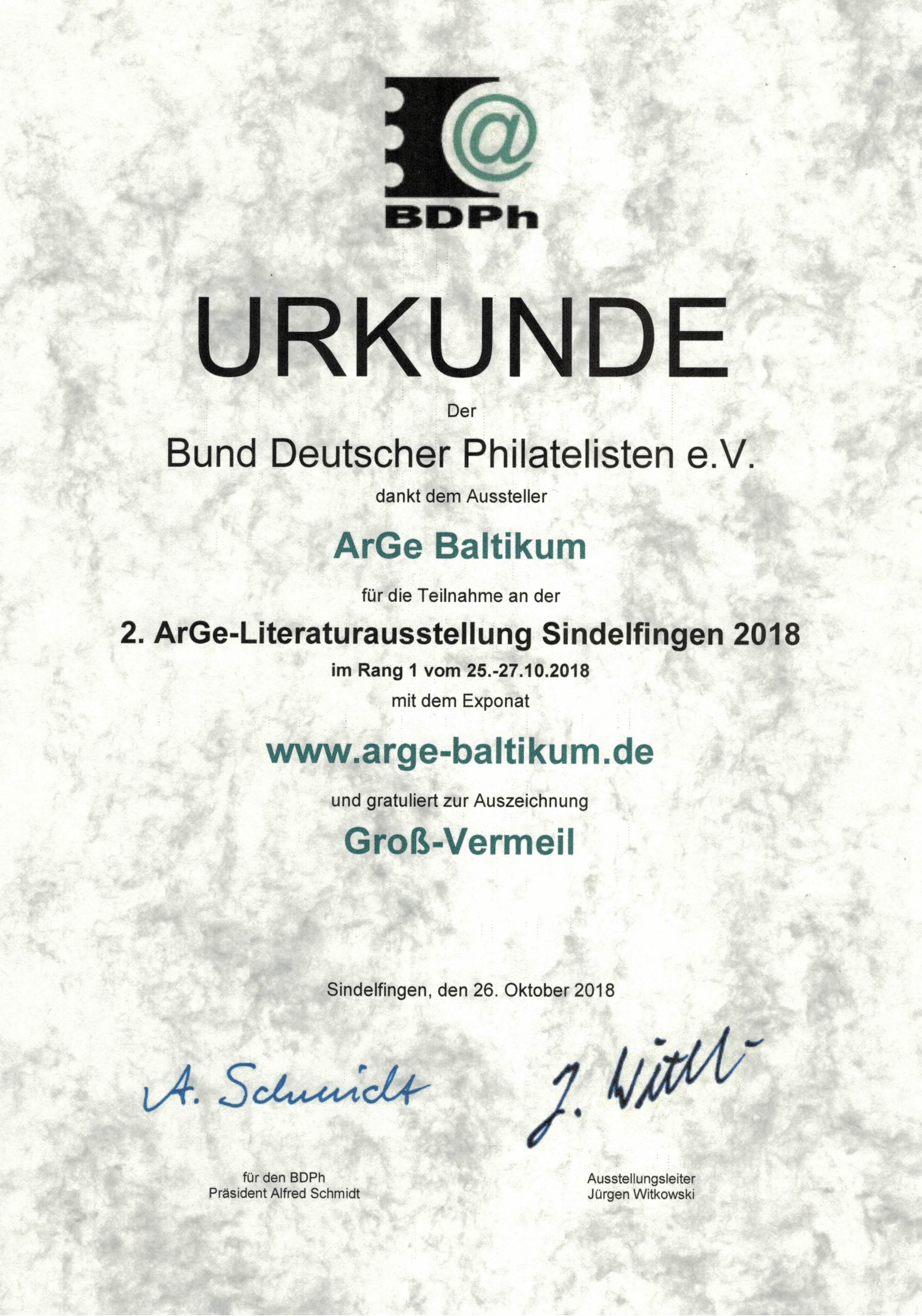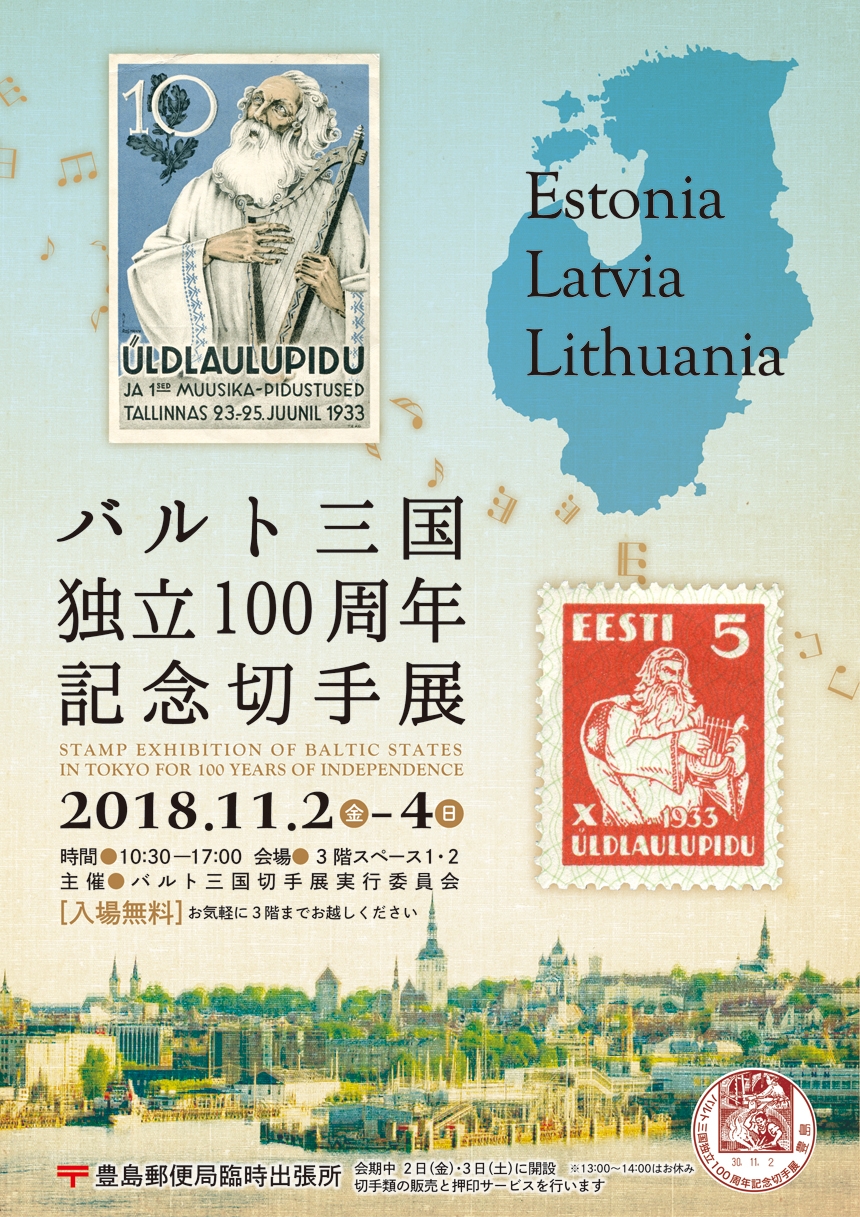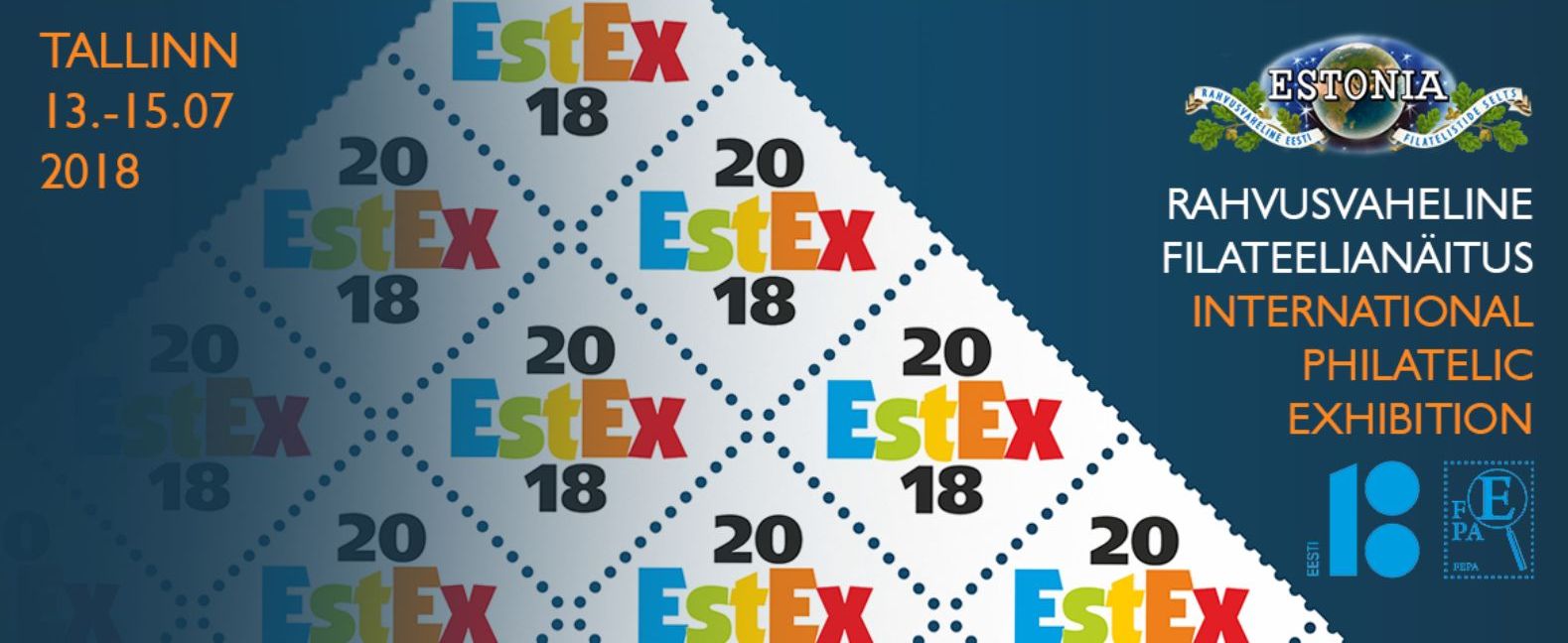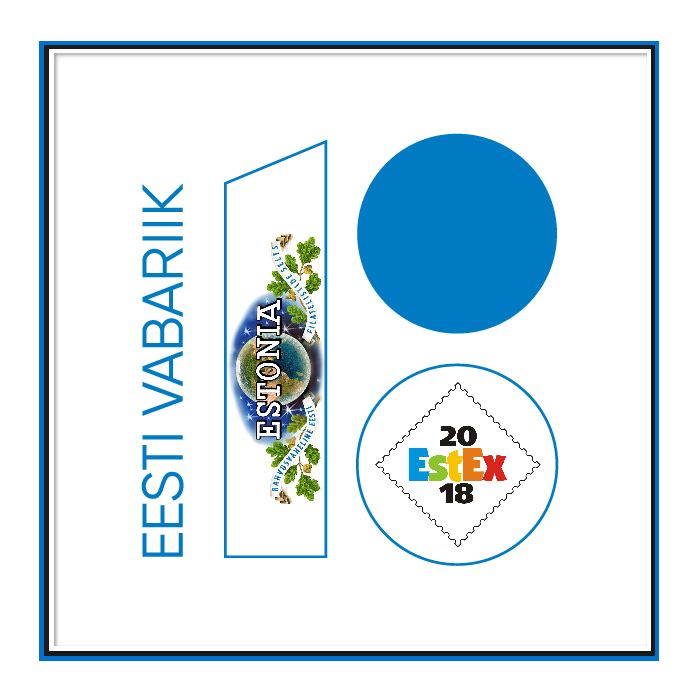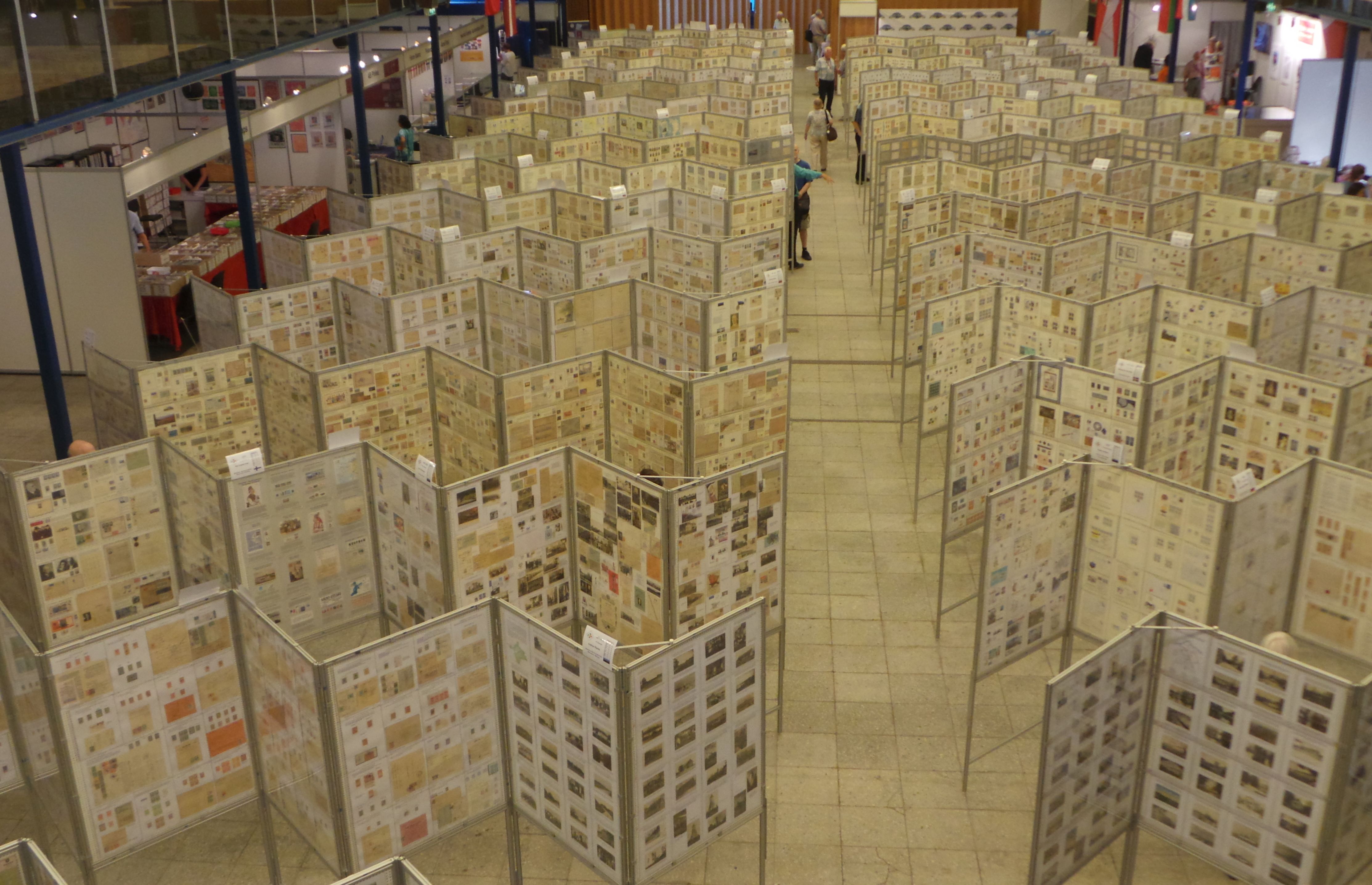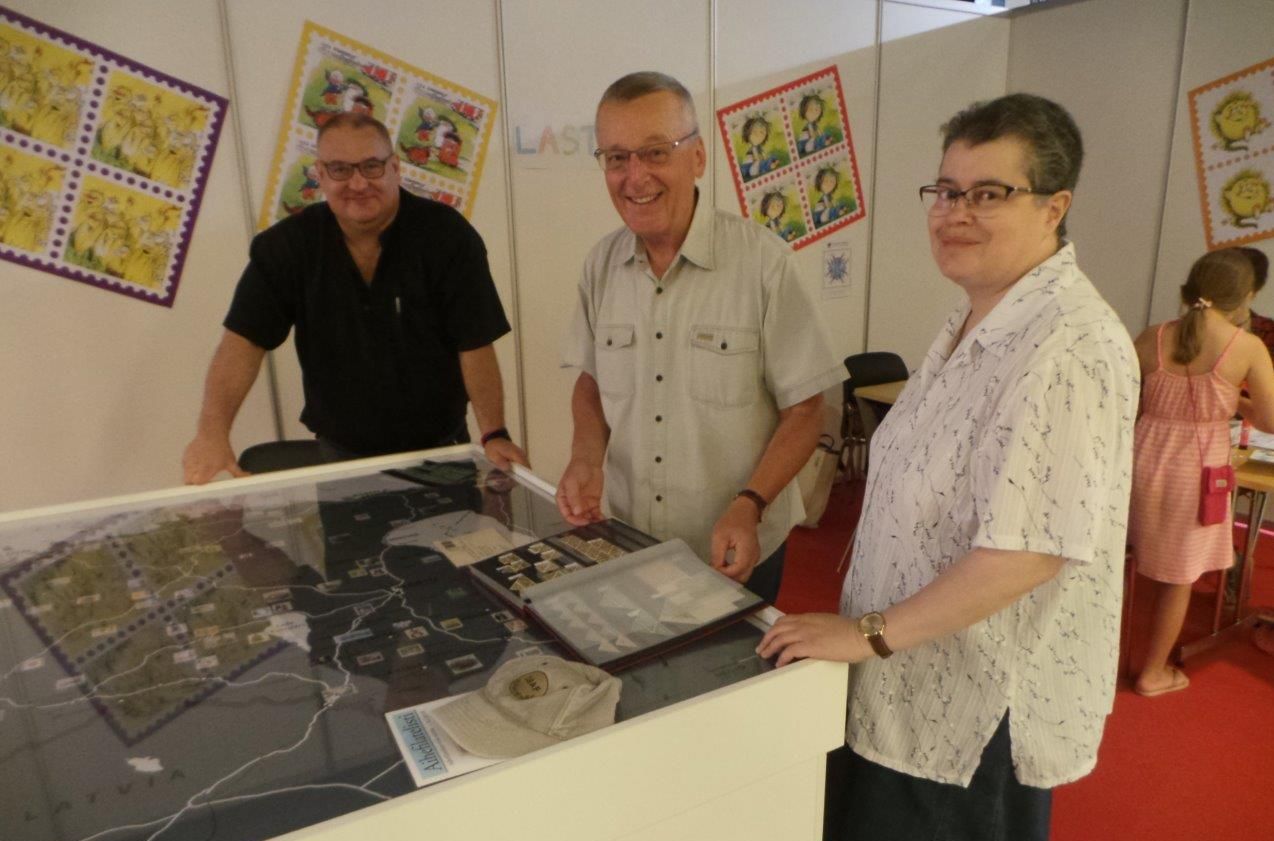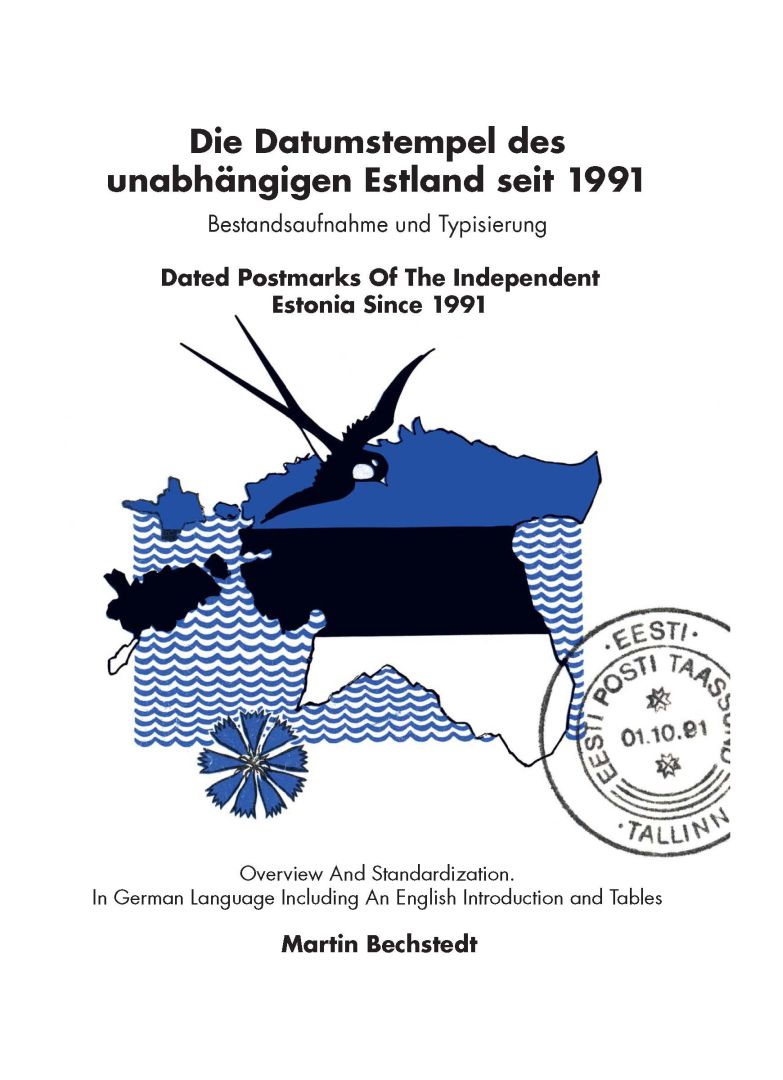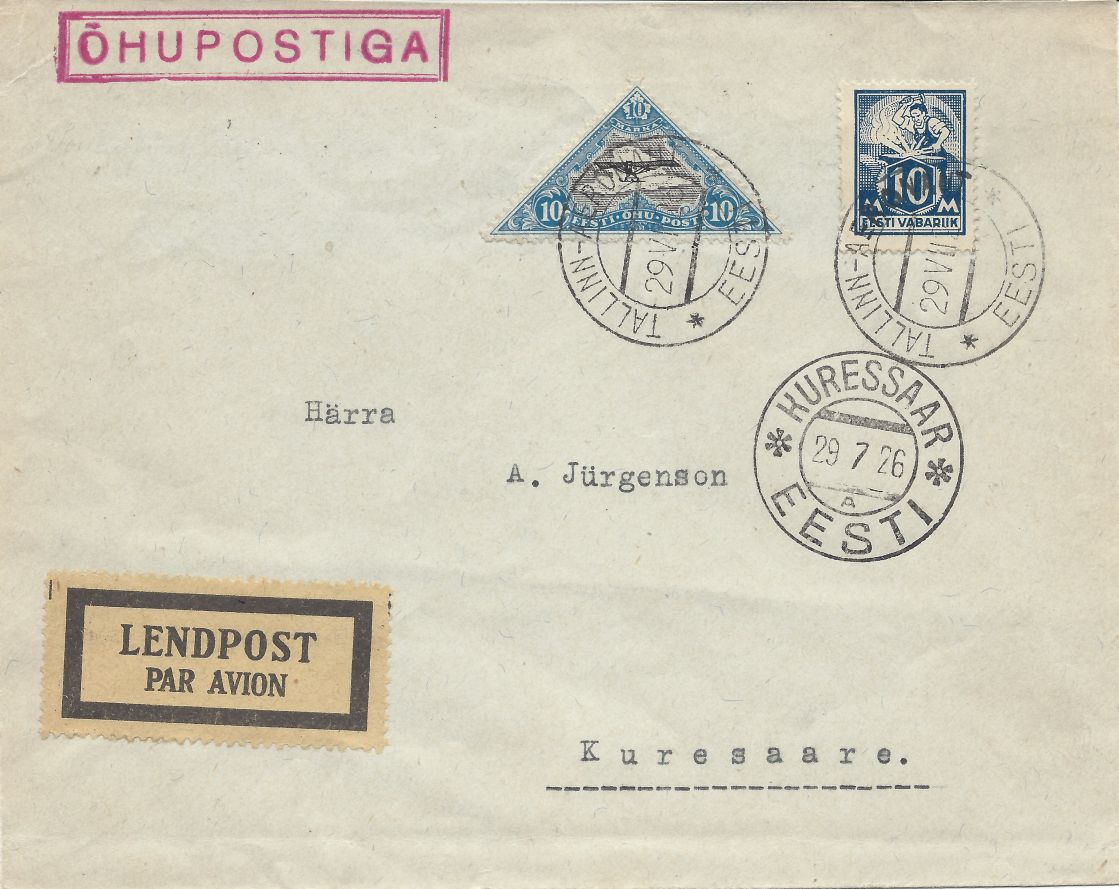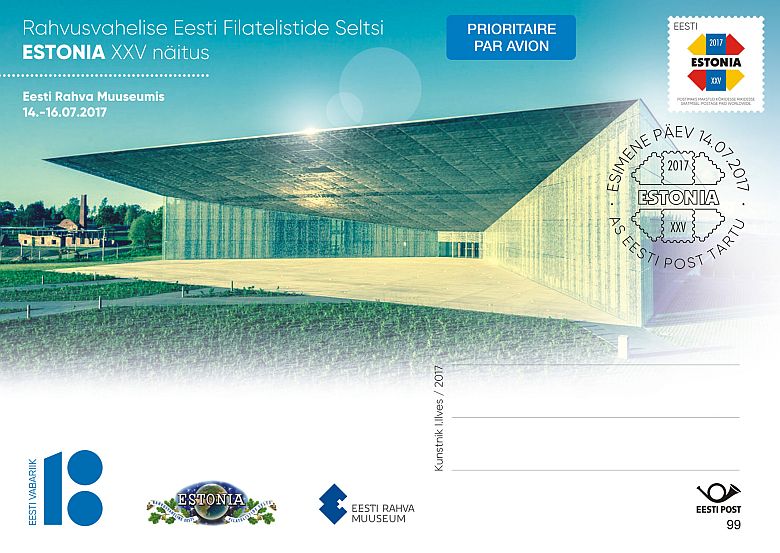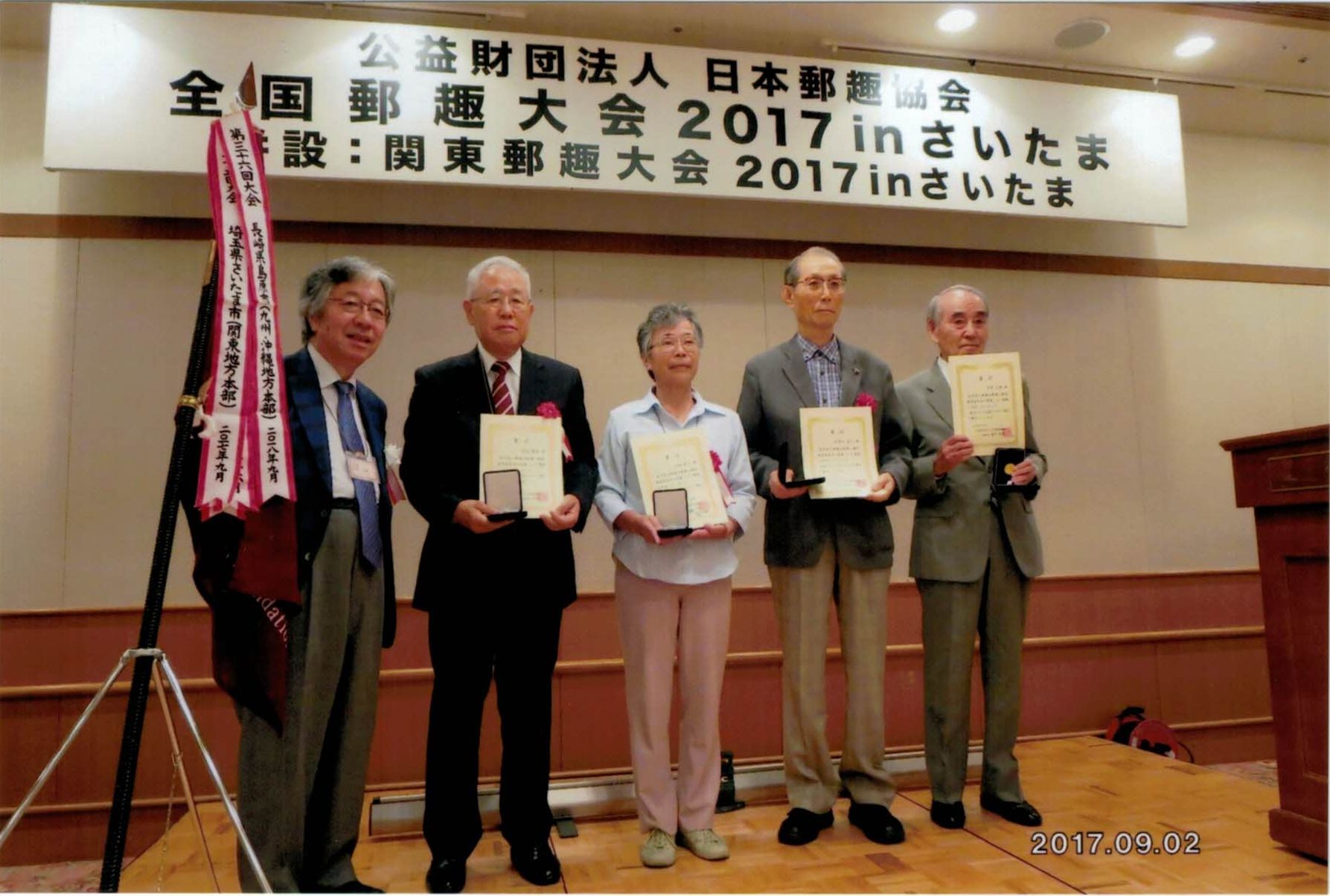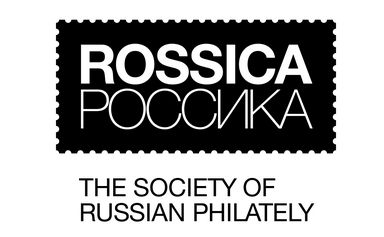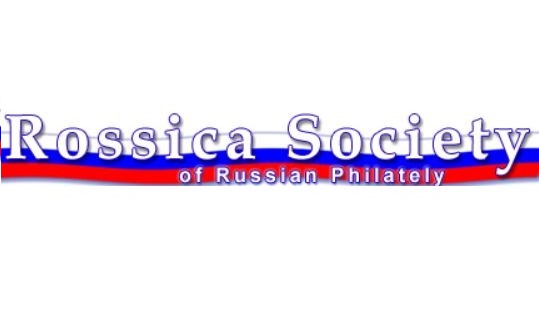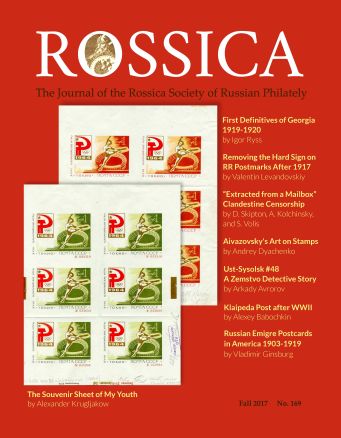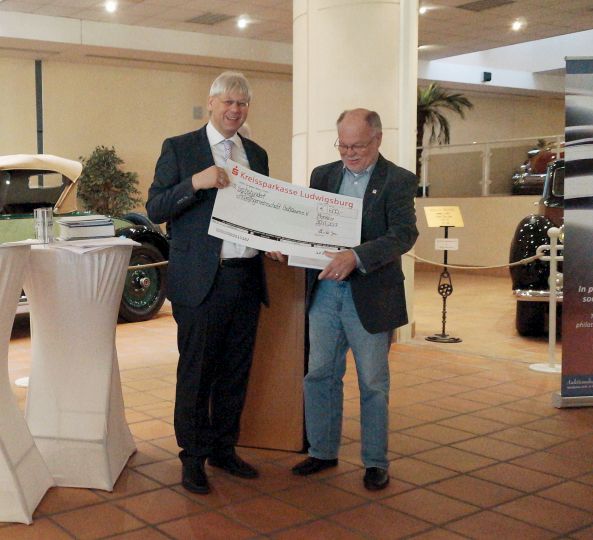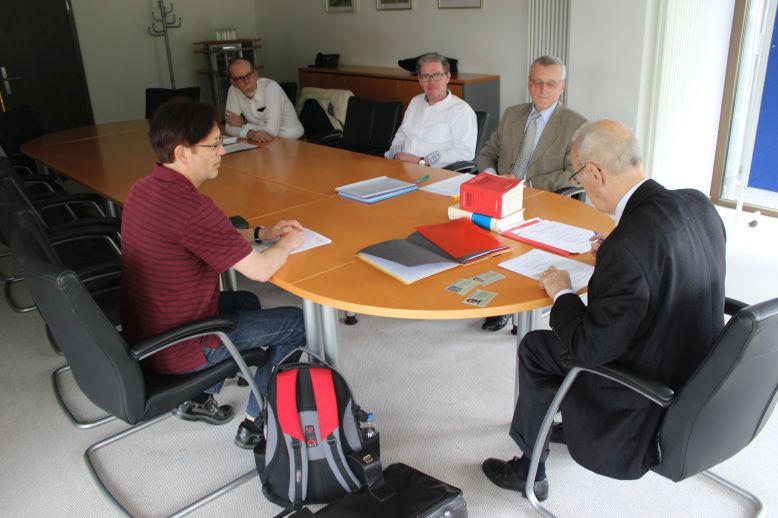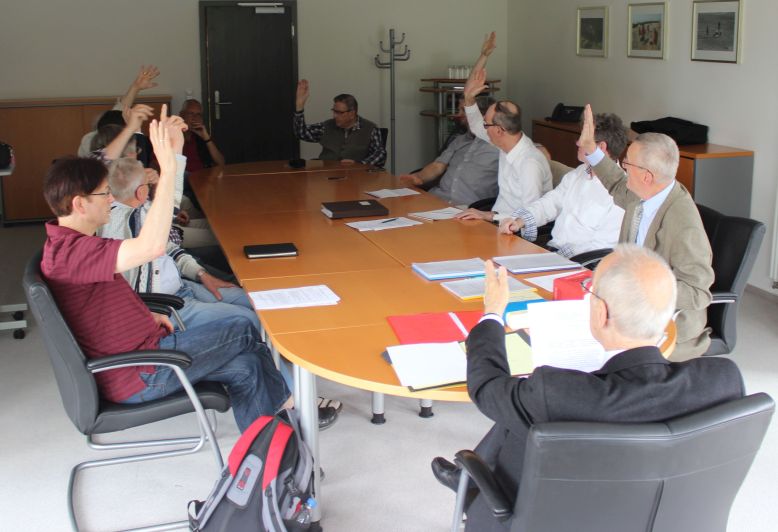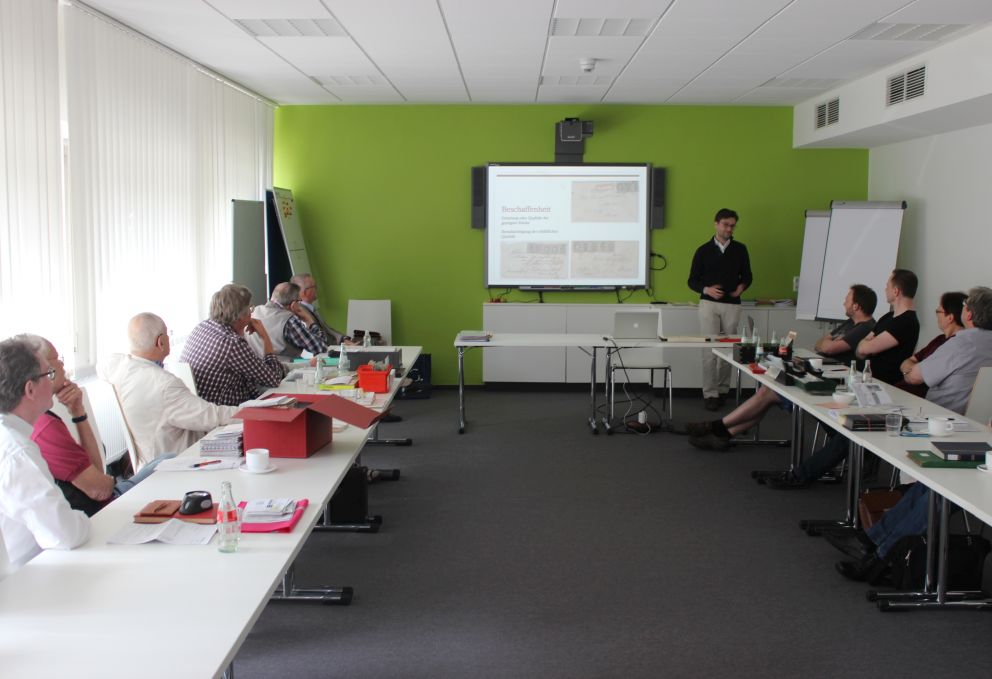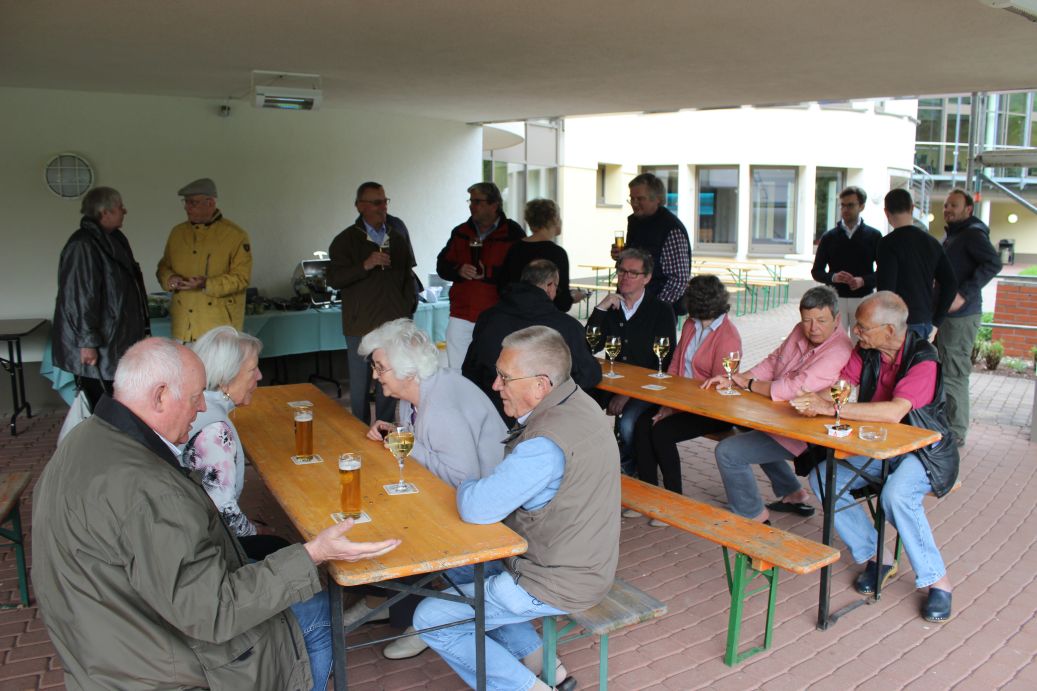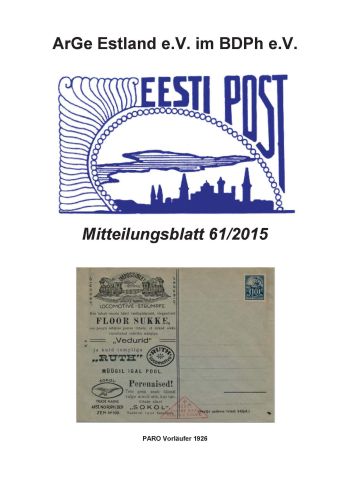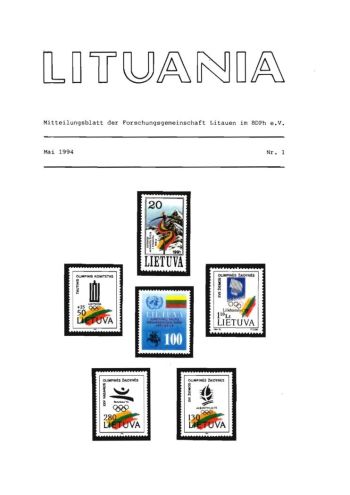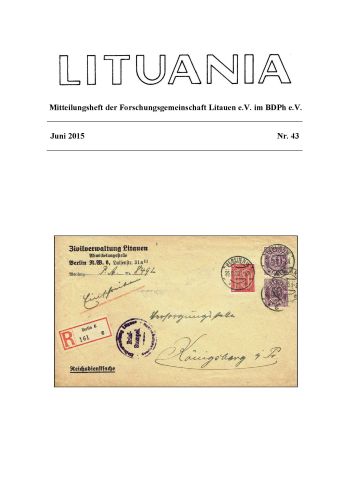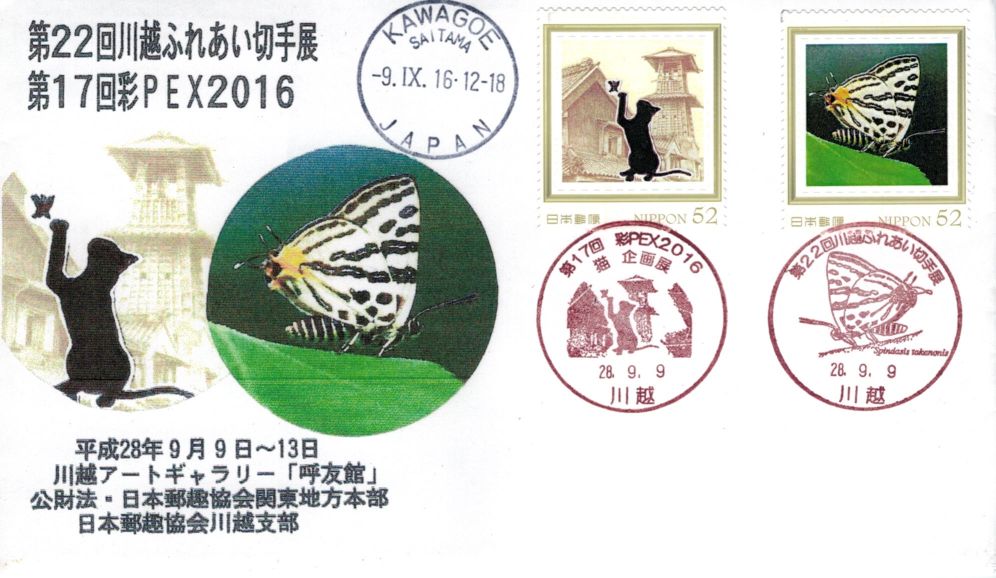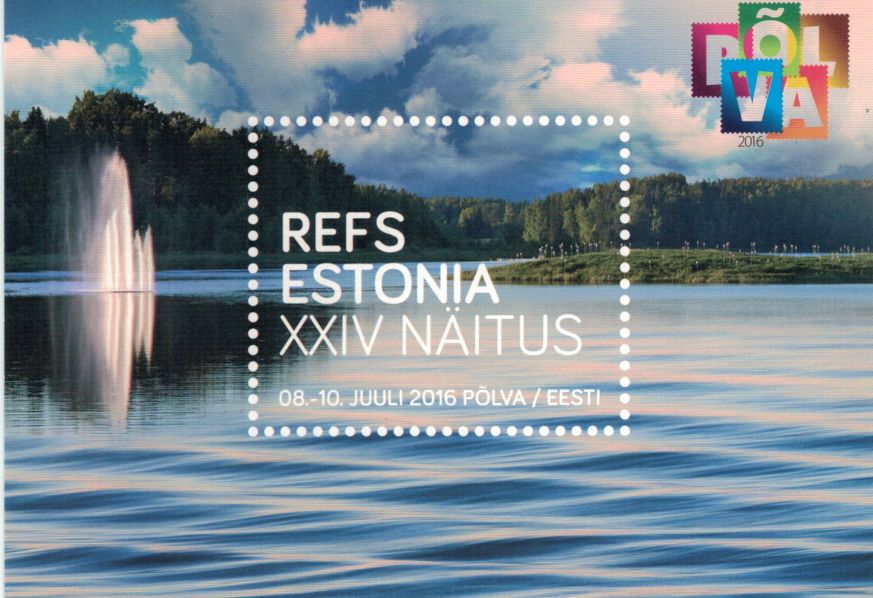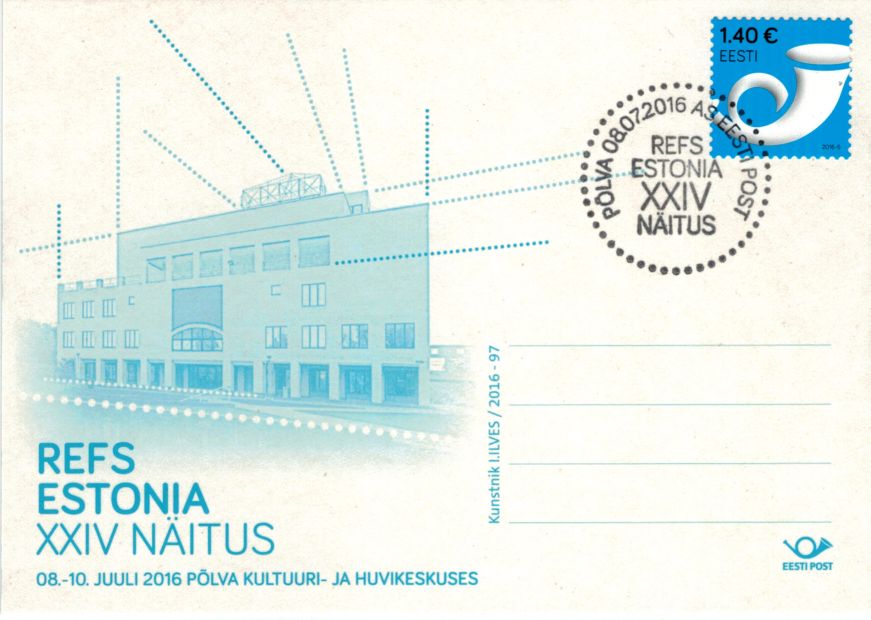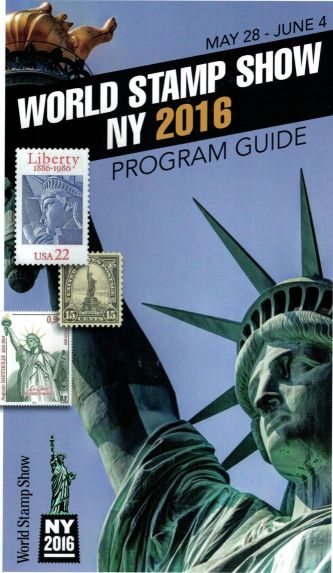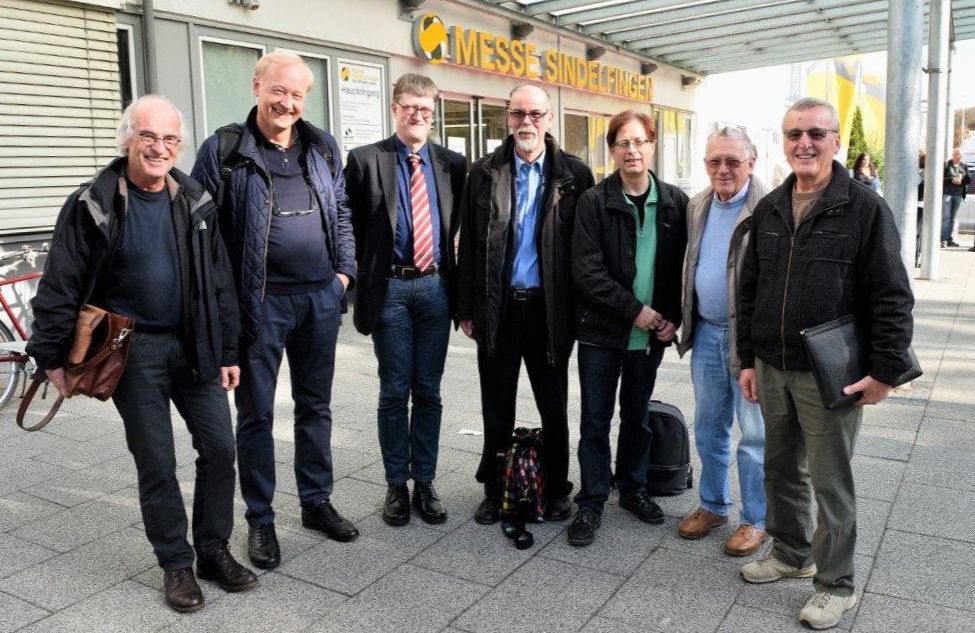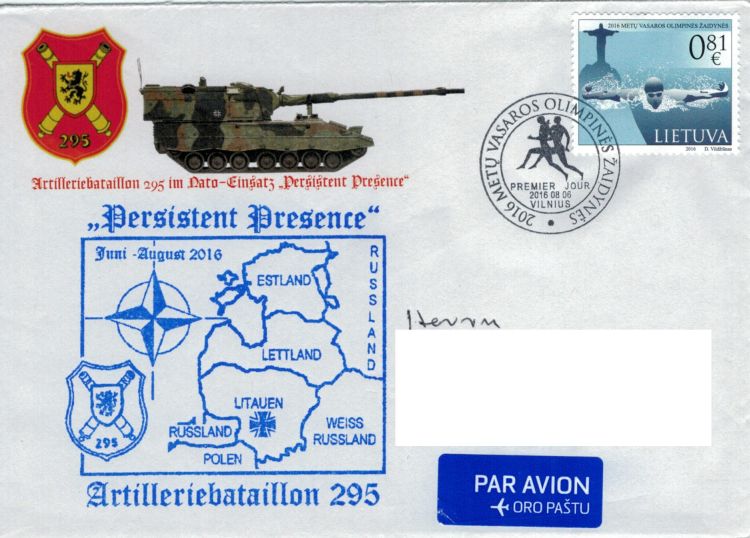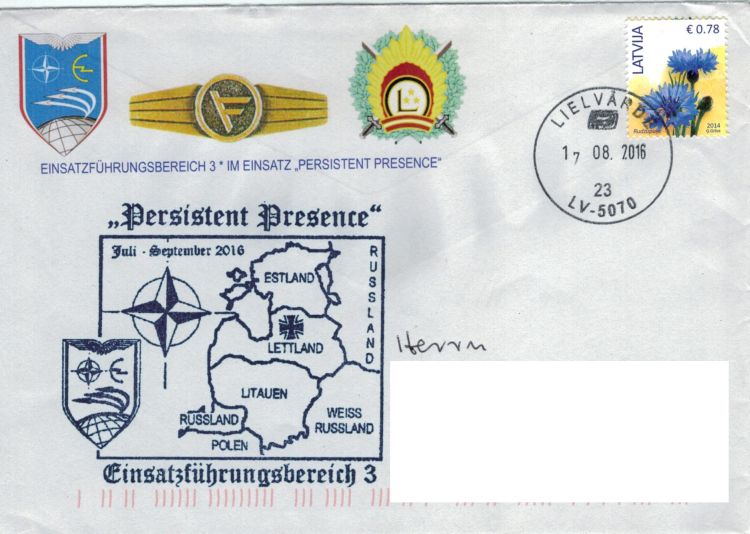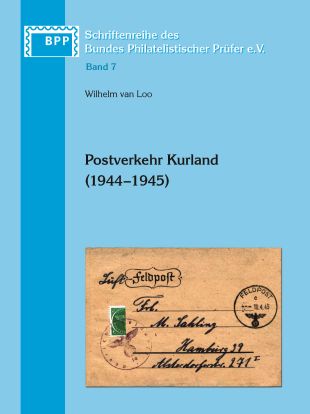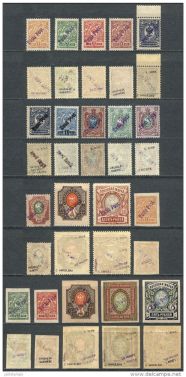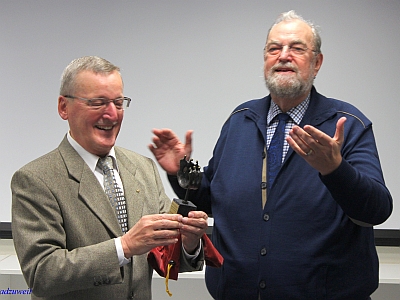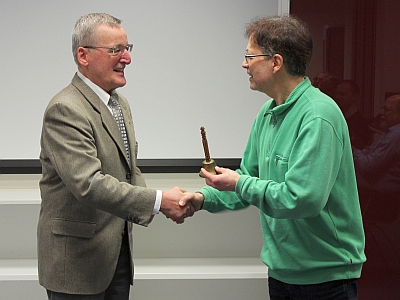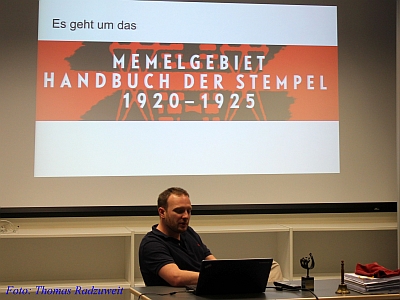News Archive
44. monthly video chat
Members of the Baltic States Study Group can look forward to some special philatelic issues from the group to mark its 10th anniversary! We don't want to give away too much yet, but these special issues will be sent out with BALTIKUM No. 19, which will be published in May. If you want to benefit from this, become a member before then!
Martin Bechstedt presented a number of innovations related to mail from Estonia and Lithuania, such as a new "postage paid" stamp from Tallinn, a date stamp from Rapla that does not have a distinguishing letter but a distinguishing number "1" (there are also some with "2"), or letters from Lithuania that have been reused, some with forged stamps to the detriment of the postal service.
A curiosity is a postmark from the Nurmenuku post office in Estonia, which opened in 2017: For a few days they used "AS NURMENUKU" (a–d) date stamps (i.e. for a joint-stock company), which were then quickly replaced by the usual "NURMENUKU" (a–d) date stamps. Another date stamp 'AS NURMENUKU e' will (according to filateelia.ee since 2019) be in use until 2024, as shown by an existing document! The reason for this is not yet known.
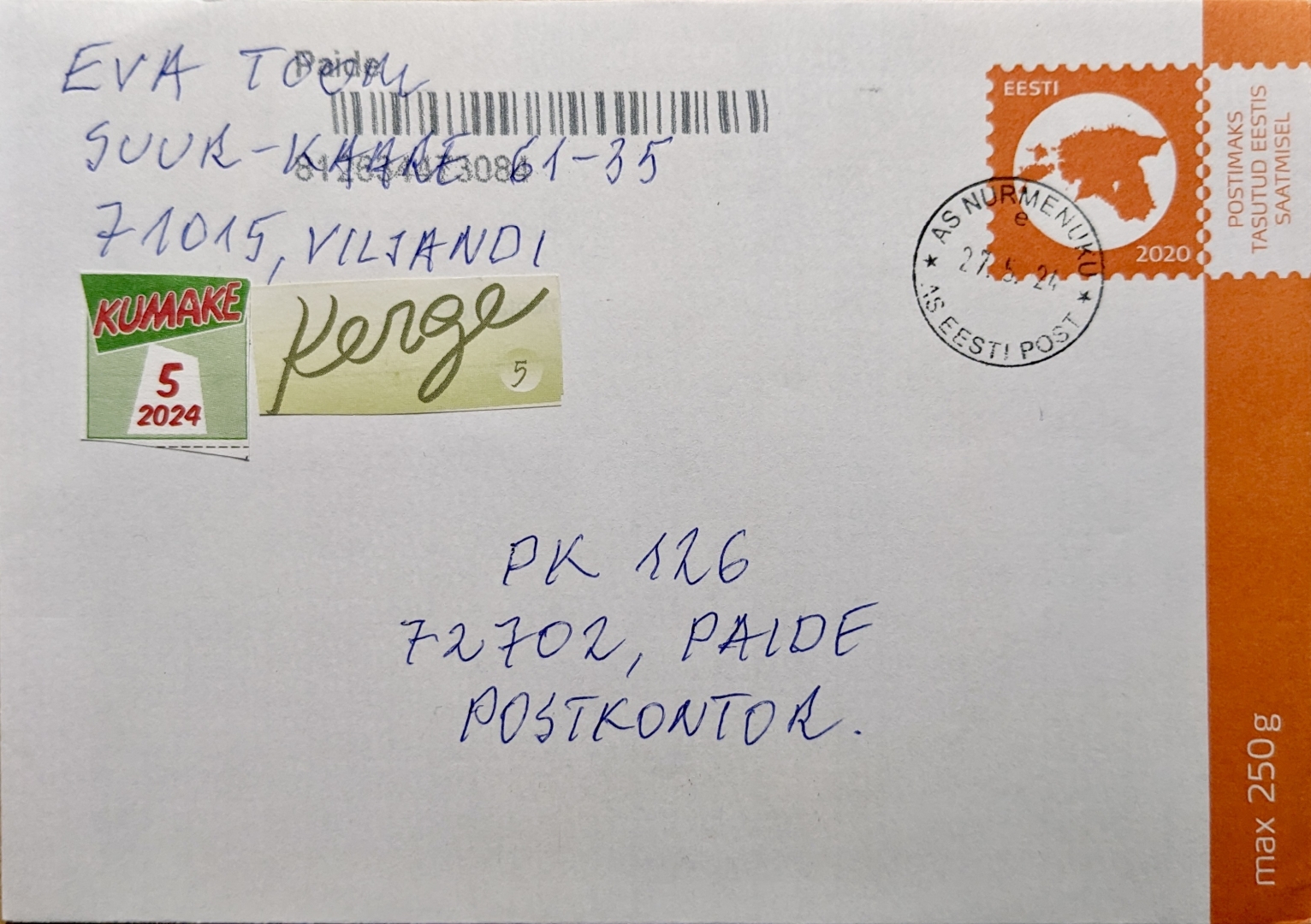
"AS NURMENUKU e" "false" postmark in use for 5 years for a normal Omniva post office that is not an independent joint-stock company = aktsia selts (AS)!
Our monthly video chat, where anyone with an interest in Baltic philately is welcome, takes place on every first Saturday of the month at 17 h CET (more technical information on this here).
Next date: January 4, 2025
Special theme: none so far This email address is being protected from spambots. JavaScript must be activated in order for it to be displayed.
Join the Zoom meeting with:
https://us02web.zoom.us/j/85338222428?pwd=WGpZRXJTZVpnSnB6eHg4Ukx2aFVHdz09
43. monthly video chat
The first topic of the meeting, which was attended by nine people this time, was the trade fair in Ulm, the results achieved and the results of the survey of the working groups by the BDPh, above all the (current) impossibility of organising a stamp fair in northern Germany similar to those in Ulm or Munich.
Initial ideas for giveaways or items to be purchased to mark the 10th anniversary of the ArGe Baltikum in 2025 were discussed. In addition to motif postcards, individualised stamps were also discussed. Please send any further suggestions to the board!
Thanks to a small dealer at HAFNIA in Copenhagen, the list of rare Estonian 8 centi leopard stamps as single frankings has now been extended to over 10 items.
Finally, Thomas Löbbering reported on the testing of a Rakvere counterfeit using state-of-the-art equipment.
Our monthly video chat, where anyone with an interest in Baltic philately is welcome, takes place on every first Saturday of the month at 17 h CET (more technical information on this here).
Next date: December 7, 2024
Special theme: none so far This email address is being protected from spambots. JavaScript must be activated in order for it to be displayed.
Join the Zoom meeting with:
https://us02web.zoom.us/j/85338222428?pwd=WGpZRXJTZVpnSnB6eHg4Ukx2aFVHdz09
Two gold medals and the Rauhut Literature Prize
87 points and thus (national) gold for the ArGe web (third place out of 13 in the category "Websites") and 86 points and thus also gold for the BALTIKUM (seventh place out of 26 in the category "Newsletters, Magazines") - this is the result of the 5th BDPh ArGe Literature Competition 2024 for the ArGe Baltikum.
We were also successful with third place in the Rauhut Prize for Literature 2024 in the "Websites" category. This is endowed with 100 €, which will go to the association's treasury.
This is a great overall success and a fitting tribute to our active team!
The results were announced at the third International Stamp Fair in Ulm, which - as in the two previous years - took place in the Donauhalle:

Exhibition stand and staffing
With 44 working groups present at the trade fair, it was to be expected that the small rented conference room would not be sufficient for a meeting with the BDPh board. Frank Blechschmidt announced the results of the ArGe survey (see the latest issue of "Philatelie"). Spontaneous wishes were expressed by those present: annual face-to-face meetings of this kind for 2 hours in Ulm (plus virtual meetings in between). Otherwise, there was a lot of talk about the fairness of contributions and representation options for working groups in the BDPh. BDPh President Alfred Schmidt could imagine participation options, but would need people from the working groups who are willing to actively participate in the BDPh.
As a result, Ulm was once again as diverse as every philatelist is unique - there is almost nothing that does not exist!
The ArGe Baltikum had travelled to the event with a five-man stand (from left to right): Reinhard Heinrich, Olaf Hoffmann, Thomas Löbbering and Torsten Berndt; not in the picture: Friedhelm Doell (who took the photos).
In addition to more or less material, which individuals were able to purchase from the dealers for their own collections, the greatest benefit for our visitors was the expert information and for the stand staff, as always, the conversations and exchanges with many old and new acquaintances, friends and each other.
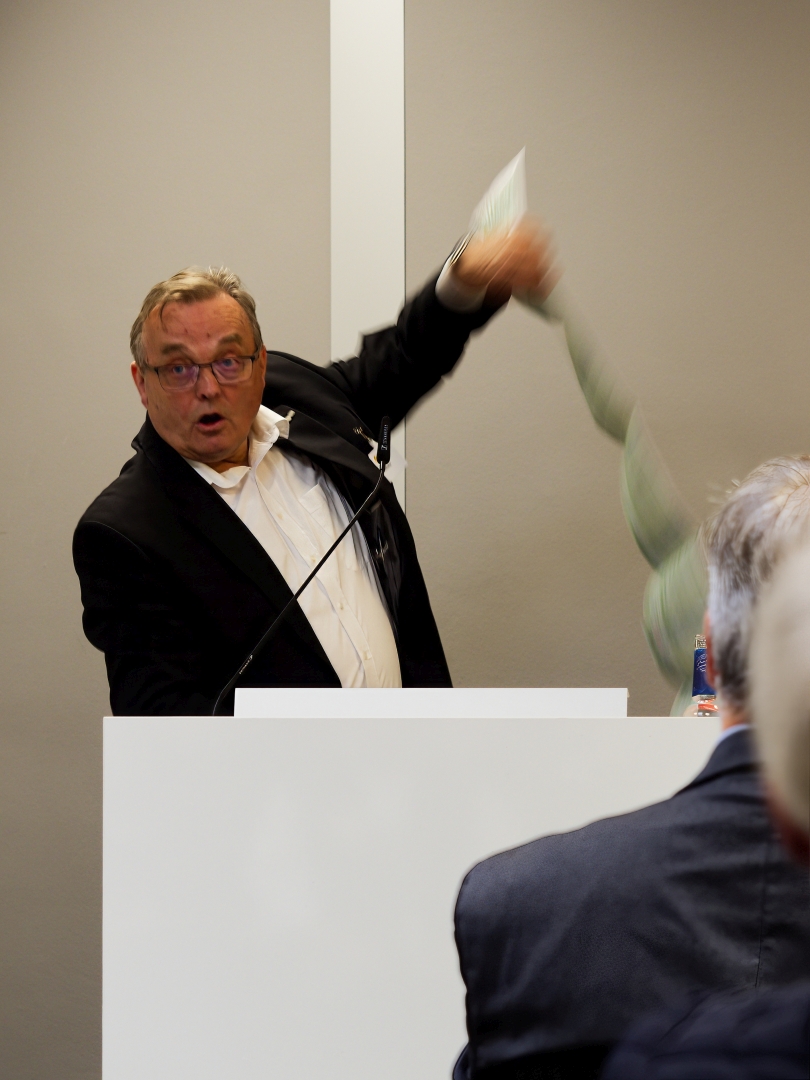
Soooo long was the list of wishes from the working groups that Frank Blechschmidt from the BDPh board presented
Estonian Post is moving letterboxes to parcel machines
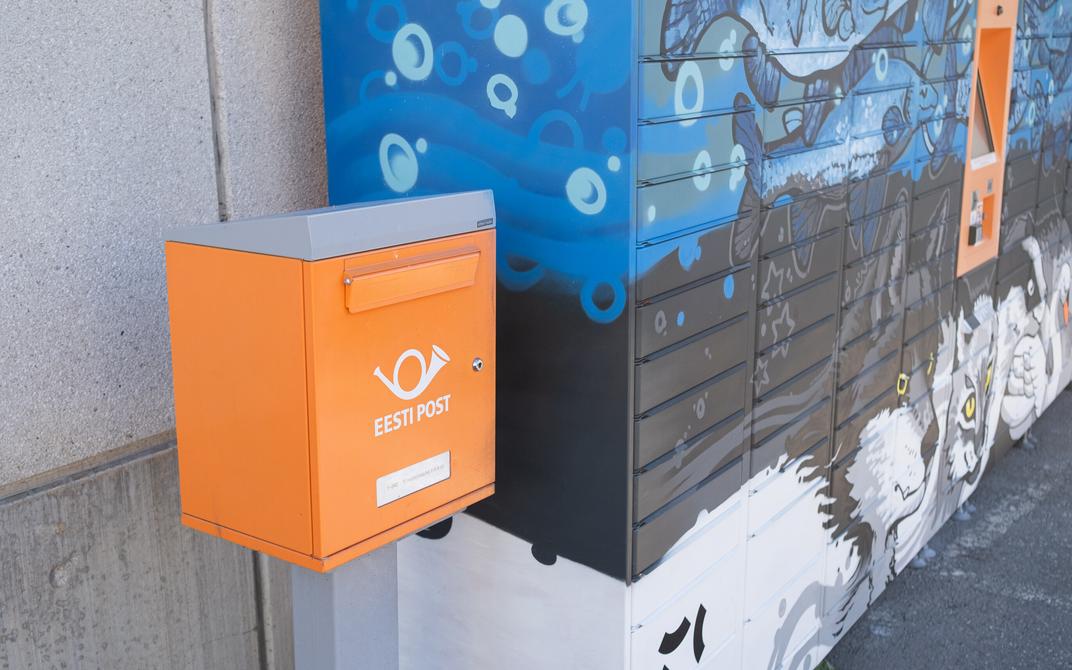
Foto: Siim Lõvi/ERR
Source of information: Estonian State Broadcasting Corporation (ERR) www.err.ee/1609490329/tulevikus-saab-omniva-pakiautomaadiga-ka-kirju-saata
We have already reported on the removal of letterboxes due to reduced usage and the expansion of the parcel machine network in Estonia. Omniva announced current developments in mid-October:
There are actually 369 parcel machines in Estonia (or about one for every 3,650 inhabitants) with around 30 devices added each year. On the other hand, around 50 letterboxes, which are hardly used anymore, were removed each year. There are currently still 970 letterboxes in Estonia (which is about one per 1,450 inhabitants – by way of comparison, at the end of 2023, there were about 5,650 people per packing station and about 780 per letterbox in Germany).
For those who are interested: the exact location of Omniva parcel machines and letterboxes in Estonia, Latvia and Lithuania can be found on this continuously updated map: www.omniva.ee/abi/kaart, where you have to click on "Pakiautomadid" for parcel machines and "Kirjakastid" for letterboxes at the bottom left.
In recent years, letterboxes have been moved ever closer to parcel machines. The addition of a letterbox flap to parcel machines is also currently being tested. "If we find a suitable prototype, we can immediately use it on a larger scale in Estonia," Kristi Unt, head of Omniva's logistics and delivery network in the Baltic States, told ERR.
42. monthly video chat
The current state of planning for the PhilLat26 exhibition was presented (see separate announcement).
Friedhelm Doell reported in detail on the presentation of Antanas Jankauskas' Lithuania catalogue, which took place the previous Saturday at the Lithuanian Philatelic Society. The catalogue not only includes the new issues since the first edition of 2012, but has also been fundamentally expanded in many areas. Incidentally, it complements the catalogue by Martin Bechstedt, which has a different focus, perfectly. The 2012 catalogue should not be given away either – a number of illustrations were not included in the 2024 edition due to lack of space!
The conversation then turned to the pricing of this catalogue, to book production in general and to the tax treatment of such activities in particular – three of the participants had already had different experiences with this.
The new Michel catalogue for the Baltic States and Finland 2024/2025 was also briefly mentioned – it is good in regards to Lithuania, but contains minor errors for Estonia, which, like every year, will be reported to the Schwaneberger publishing house by our specialists.
Our monthly video chat, where anyone with an interest in Baltic philately is welcome, takes place on every first Saturday of the month at 17 h CET (more technical information on this here).
Next date: November 2, 2024
Special theme: none so far This email address is being protected from spambots. JavaScript must be activated in order for it to be displayed.
Join the Zoom meeting with:
https://us02web.zoom.us/j/85338222428?pwd=WGpZRXJTZVpnSnB6eHg4Ukx2aFVHdz09
Advance notice: PhilLat26 in Rīga, June 26–29, 2026 – Cancelled!
Our member Aija Pince has announced an international exhibition in Riga, Latvia, for the end of June 2026.
In addition to a FIP or FEPA competitive exhibition with a focus on Latvia and the Baltic States and international dealers, lectures, activities for children (to specifically promote young people in philately) as well as guided excursions to tourist destinations in the area around Riga are planned.
They are even planning an entry in the Guinness Book of Records – but we won't reveal what it's for just yet! For now, all we can say is: mark the date in your calendar!
Update Sept. 2025: PhilLat26 has been cancelled! The organisation did not receive sufficient support. An exhibition may take place in Rīga in 2027.
41. monthly video chat
This time we had plenty of topics to discuss:
Martin Bechstedt reported on the financing problems of the Hamburg Philatelic Library following a drastic rent increase.
Friedhelm Doell presented his small collection of mail from Displaced Persons (DP) camps in Germany after the Second World War. Our new member Ed Ambros from Ohio/USA contributed with the experiences of a contemporary witness – his mother-in-law was the head translator in the Augsburg DP camp. It was also possible to provide him with contacts for a professional exchange about the 'Memelland ist frei' ('Memelland is free') overprints from 1939.
Oliver Hanschmidt informed us that a third example of the imperforate 1 Marka Smith-and-Weaver stamp from Estonia has turned up as a single franking on a letter and is now in his possession.
Finally, Michael Wienecke presented a cover that was to be sent from Estonia to Denmark on December 18, 1918, but due to the civil war in Latvia could not reach its destination by land and because of the sea blockade of Estonian harbours by British warships (to prevent the Soviet navy from entering) only in February 1919.
Our monthly video chat, where anyone with an interest in Baltic philately is welcome, takes place on every first Saturday of the month at 17 h CET (more technical information on this here).
Next date: October 5, 2024
Special theme: none so far This email address is being protected from spambots. JavaScript must be activated in order for it to be displayed.
Join the Zoom meeting with:
https://us02web.zoom.us/j/85338222428?pwd=WGpZRXJTZVpnSnB6eHg4Ukx2aFVHdz09
40. monthly video chat
The topic of our monthly meeting was, of course, the MARE BALTICUM 2024 exhibition in Tartu (see article below), which many of us also attended.
With a week's distance, it was possible to see more clearly what was good and what was less good, what was a fair assessment of exhibits and where the limits were.
The bottom line is that some participants felt this exhibition was the best they had ever visited (we are talking about philatelists who have been active for decades).
We also discussed a special document from Estonia: sending a letter from parcel station to parcel station. This costs just 3.18 € as a parcel within Estonia (up to 30 kg!), whereas a registered letter costs 6.00 €. More about this in the next BALTIKUM!
Our monthly video chat, where anyone with an interest in Baltic philately is welcome, takes place on every first Saturday of the month at 17 h CET (more technical information on this here).
Next date: September 7, 2024
Special theme: none so far This email address is being protected from spambots. JavaScript must be activated in order for it to be displayed.
Join the Zoom meeting with:
https://us02web.zoom.us/j/85338222428?pwd=WGpZRXJTZVpnSnB6eHg4Ukx2aFVHdz09
The ArGe Baltikum is truly international
Video with subtitles. Press  after the start of the Youtube video to turn on and off (with mobile phones only visible in landscape mode), on Android mobile devices choose
after the start of the Youtube video to turn on and off (with mobile phones only visible in landscape mode), on Android mobile devices choose  and
and  . Switch German and English via Settings – Subtitles.
. Switch German and English via Settings – Subtitles.
Festive evening at the Palmarès of MARE BALTICUM 2024 in Tartu, Estonia. In addition to two members from the USA, one of our Japanese members also traveled to the event.
The ArGe Baltikum has members from a total of 23 countries on 4 continents, making it one of the world's most active working groups dealing with the philately of the Baltic states!
We therefore operate this website and have also been publishing our publications in English since 2022 and have gained over 20 new members since then.
You too can become a part of this community! Further information is available at here!
Baltic States Philately at it's best in Tartu
What a magnificent exhibition!
What Oliver Hanschmidt (who was virtually taking care of major and minor problems himself on the days of the exhibition) and his helpers in Tartu had put together surpassed much of what visitors to competition exhibitions had seen before. Whether it was the sheer number of exhibition frames (over 560) and exhibits (153), the large number of artists, musical and other artistic interludes or the beauty of the medals, almost everything was just right (apart from a few details that were not ideal, but that probably exist everywhere).
All Baltic philatelists were invited to meet and get to know each other personally on Saturday, in particular to connect familiar names with a face, to hear what the other attendees collect and what they are specialists in and to make new contacts in Tartu and beyond – one of the highlights for all attendees!
| Class | Description | No. | Name | Country | ArGe member | Exhibit | Points | Award |
|---|---|---|---|---|---|---|---|---|
| 2.1 | Traditional Philately | 1 | Tuomo Koskiaho | Finland | Estonia 1918–1941 | 92 | Gold, Special Prize (Material) | |
| 2 | Yuki Itabashi | Japan | • | Estonia Seagull Issue 1918–1920 | 80 | (One Frame Exhibit) | ||
| 3 | Jukka Sairanen | Finland | Otepää 1941 | 88 | (One Frame Exhibit) | |||
| 4 | Keijo Savelainen | Finland | Estonian Stamps and Mailings from 1918–1941 | 82 | Vermeil | |||
| 5 | Kaido Andres | Estonia | • | Reconstruction Fund Issue 1941 | 80 | Vermeil | ||
| 6 | Jaan Roots | Norway | • | Estonia Regular Issues 1928–1940 | 90 | Gold, Special Prize (Knowledge) | ||
| 7 | Villu Roosa | Estonia | Estonian Stamps 1928–1940, The Gold Standard Period | 75 | Large Silver | |||
| 9 | Ants Linnard | Estonia | Postage Payment Instructions as a Reflection of Estonia's Development in 1918–1940 | 83 | Vermeil | |||
| 11 | Frederick Lutt | USA | Estonia Stamp Centenary Commemorative 1940–1941 | 83 | (One Frame Exhibit) | |||
| 14 | Gatis Poišs | Latvia | Latvian Stamps printed on the Banknote Paper | 81 | Vermeil | |||
| 2.2 | Postal History | 32 | Jaan Roots | Norway | • | Mail in Estonia during WWI 1914–1917 | 86 | Large Vermeil |
| 33 | Randy Tuuri | USA | Estonia – Postal rates 1918–1941 | 83 | Vermeil | |||
| 34 | Ahto Tanner | Estonia | Eesti 1940–1944 / Kahe tule vahel (Estonia 1940–1944 / Between two fronts) | 87 | Large Vermeil | |||
| 35 | Ago Papp | Estonia | • | Valik postivagunite templeid Eesti NSV raudteedel 1945–1970 (Selection of Stagecoach Cancellations on the Estonian SSR Railways 1945–1970) | 70 | Silver | ||
| 36 | Juozas Urbonas | Lithuania | Baltic States People's Deportation Mail | 82 | Vermeil | |||
| 37 | Vesma Grinfelds | USA | • | Postmarks of Mail Routes Within the Latvian Territory of Russia 1767–1858 (old name was: Pre-Stamp Postmarks Along Postal Routes Within Latvia) | 88 | Large Vermeil, Special Prize (Material) | ||
| 38 | Dzintars Grinfelds | USA | Imperial Russian Machine Cancels of Latvia 1908–1917 | 81 | (One Frame Exhibit) | |||
| 40 | Dennis Hassler | USA | Wenden 1790–1919 | 78 | Large Silver | |||
| 41 | Aivars Cimmermanis | Latvia | Latvia and Latvians in World War 1 | 71 | Silver | |||
| 43 | Zinta Zeltiņa | Latvia | Postmarks of Postal Institutions in Latvia 1918–1940 | 77 | Large Silver | |||
| 44 | Ilgonis Šteinbergs | Latvia | Post Offices of Kuldiga District | 68 | Silver Bronze | |||
| 45 | Vesma Grinfelds | USA | • | Cancellations of the Provisional Era in Latvia 1919–1921 | 87 | Large Vermeil | ||
| 48 | Kalle Nurminen | Finland | Handstamped Postal Slogans of Latvia 1936–1940 | 73 | Silver | |||
| 49 | Edmundas Liesis | Lithuania | Registry Labels and Cachets of Kaunas Post Telegraph Office | 80 | Vermeil | |||
| 2.3 | Aerophilately | 72 | Michael Wieneke | Germany | • | Luftpost in Estland 1918–1941 (Air Mail in Estonia 1918–1941) | 82 | Vermeil |
| 74 | Vitaly Geyfman | USA | • | First and Second Non-Stop Transatlantic Flights from New York City to Lithuania, July 15, 1933 and September 21, 1935 | 83 | Vermeil | ||
| 2.4 | Postal Stationery | 77 | Tuomo Koskiaho | Finland | Postal stationery used in Estonia in 1852–1944 | 87 | Large Vermeil | |
| 2.6 | Open Philately | 89 | Mats Söderberg | Sweden | Estonians Outside Estonia 1944–1991 | 81 | Vermeil | |
| 97 | Darius Liutikas | Lithuania | Scouting in the Baltic Countries: A History in Philately | 75 | Large Silver | |||
| 2.7 | Modern Philately | 98 | Peeter Pärn | Estonia | Eesti Posti taassünd ja üleminekuperiood Tartu ja Tartumaa postkontorites 1991–1992 (The Rebirth of Eesti Post and the Transition Period in Tartu and Tartumaa Post Offices 1991–1992) | 72 | Silver | |
| 2.9 | Picture Postcards | 100 | Janne Nikkanen | Finland | Historic old Tallinn in postcards | 92 | Gold, Special Prize (Treatment), Grand Prix National | |
| 101 | Jaak Koppel | Estonia | Tallinna trükipostkaart 1894–1917 (Tallinn Printed Postcard 1894–1917) | 75 | Large Silver | |||
| 103 | Indrek Ilomets | Estonia | Academic Fraternal Organisations of University of Tartu on Postcards until 1940 | 90 | Gold, Special Prize (Material) | |||
| 104 | Jaan Moik | Estonia | Haapsalu linnus ja kuurort (Haapsalu Castle and Resort) | 77 | Large Silver | |||
| 2.11 | Philatelic Literature | 124 | Martin Bechstedt | Germany | • | Die Datumstempel des unabhängigen Estland seit 1991 – Bestandsaufnahme und Typisierung (Dated Postmarks Of The Independent Estonia Since 1991 – Overview And Standardization) | 87 | Large Vermeil |
| 125 | Martin Bechstedt & Bernhard Fels | Germany | • | Die Tagesstempel der unabhängigen Republik Litauen seit 1990 – Hand- und Begleitbuch zur Internet-Datenbank (Dated Postmarks of the Independent Republic of Lithuania since 1990 – Handbook and Companion to the Internet Database) | 88 | Large Vermeil | ||
| 130 | Oliver Hanschmidt | Estonia | • | Cancellations and Markings of the Estonian Railway TPO (Travelling Post Offices) 1918–1944 | 82 | Vermeil | ||
| 133 | Daumantas Kiulkys & Lithuanian Sea Museum | Lithuania | • | Philately. The Collections of the Lithuanian Sea Museum speak. | 76 | Large Silver | ||
| 137 | Peeter Pärn | Estonia | Eesti Posti ajutised maksevahendid 1991–1993 (Temporary Means of Payment of Eesti Post 1991–1993) | 82 | Vermeil | |||
| 142 | Arbeitsgemeinschaft Baltikum | Germany | • | BALTIKUM, Zeitschrift für Philatelie und Postgeschichte (Journal for Philately and Postal History) | 88 | Large Vermeil | ||
| 147 | Peeter Pärn & Aivar Kuuskvere | Estonia | Catalogue of Estonian Postage Stamps and Postal Stationery 1918–2023 | 81 | Vermeil | |||
| 149 | Bernhard Fels & Martin Bechstedt | Germany | • | Digitale Datenbank der litauischen Tagesstempel ab 1994 – ein zukunftsweisendes Projekt (Digital Database of Lithuanian Daily Postmarks from 1994 – a Forward-looking Project) | 82 | Vermeil | ||
| 150 | Friedhelm Doell & Arbeitsgemeinschaft Baltikum | Germany | • | www.arge-baltikum.de | 85 | Large Vermeil |
And here are a few impressions of the exhibition (as always: click on the pictures to enlarge):
MARE BALTICUM 2024 – Program
The Exhibition Program
Friday July 27
11:00 Opening
14:00 Presentation of the 2nd edition of the Estonia Stamp Guide by Martin Bechstedt
15:00 "From polar journey to polar philately"
Saturday July 28
10:00 Meeting of all Baltic philatelists (hosted by ArGe Baltikum)
15:30 Open Philately – a new exhibition class
18:30–23:00 Palmarés (for registered guests, in the Athena-Center, Küütri- Street 1, Tartu)
Sunday July 29
13:00 Award ceremonies
39. monthly video chat and Invitation for Tartu
The topic of our monthly meeting was exhibitions – the past DEBRA 2024 in Haldensleben and the upcoming MARE BALTICUM 2024 in Tartu.
Despite 86 points for the BALTIKUM and 87 points for this web www.arge-baltikum.de – and thus two national gold medals –, a strange feeling of incomplete satisfaction remained in addition to pride and joy, which could hardly be put into words.
We are looking forward to the exhibition in Tartu and invite all Baltic collectors to a joint meeting on Saturday July 27, 2024 from 10 am to 12 noon in the adjoining room of the Estonian National Museum in Tartu!
Our monthly video chat, where anyone with an interest in Baltic philately is welcome, takes place on every first Saturday of the month at 17 h CET (more technical information on this here).
Next date: August 3, 2024
Special theme: Reports from Tartu This email address is being protected from spambots. JavaScript must be activated in order for it to be displayed.
Join the Zoom meeting with:
https://us02web.zoom.us/j/85338222428?pwd=WGpZRXJTZVpnSnB6eHg4Ukx2aFVHdz09
100th Anniversary of Lithuanian Song Festival
On the occasion of the 100th anniversary of the first Song Festival in Lithuania, a Lithuanian Post souvenir sheet was issued on June 28, 2024 with four face values of € 1.55 (each for a standard domestic letter up to 20 g)).
It is the first stamp block in Lithuania to feature a QR code which, when scanned with a simple photo app, leads to the official website of the Song Festival www.dainusvente.lt.
In 2003, the Baltic song festivals were recognised by UNESCO as masterpieces of the oral and immaterial heritage of humanity..

The first song festival took place in August 1924 in the then capital Kaunas. This year's anniversary event was held in Vilnius from June 29 to July 6; here is the special postmark for the first day of issue.
38. monthly video chat
In our monthly video chat, Olaf Hoffmann showed us letterboxes from all over the world, as real photos and depicted on stamps. The designs vary, as do the differences in the destinations per slot and the labelling as a whole.
Further topics were::
– The elaborate procurement of a photo of the Junkers F13 aeroplane leased from Germany with the registration "D 335", with which the Finnish Aero OY carried out ice flights between Tallinn and Helsinki in 1924 (Michael Wieneke)
– Notifications from Eesti Post about restrictions on postal services in 2024 (Friedhelm Doell, see separate news article below)
Our monthly video chat, where anyone with an interest in Baltic philately is welcome, takes place on every first Saturday of the month at 17 h CET (more technical information on this here).
Next date: July 6, 2024
Special theme: None announced yet. If you would like to show something, please contact the webmaster at This email address is being protected from spambots. JavaScript must be activated in order for it to be displayed. .
Join the Zoom meeting with:
https://us02web.zoom.us/j/85338222428?pwd=WGpZRXJTZVpnSnB6eHg4Ukx2aFVHdz09
Estonian Post reduces postal services
As already partly announced, the Estonian postal company Omniva will reduce further postal services in 2024:
Discontinuation of the PO box service as of May 31, 2024
As part of the reorganisation of its service offering, Omniva has discontinued it's mailbox service after many decades as of May 31, 2024. The service was available to business and private users and last cost &euor;18.30 per month. The only alternative left for customers with such a need is the mail storage service ("poste restante", Estonian "nõudmiseni").
Source of information: https://www.omniva.ee/meie/uudised/koik_uudised/news/omniva-kaotab-nimekasti-teenuse and the personal information of our Estonian member Lehho Jõumees.
Closure of 10 post offices and other announcements
Omiva currently has 57 post offices across Estonia, but by the end of July there will be ten fewer, i.e. 47. For example, Omniva will close the post offices in Põltsamaa, Sindi, Paldiski, Pähklimäe in Narva, Mustamäe and Nõmme in Tallinn, and Raadi and Lõunakeskus in Tartu. However, in some places, such as Kehra or Lõksa, the post office will become a "post point", which means that a parcel or letter can be sent via a library or shop. Apart from the closure of these post offices, no major changes are expected this year in the area of universal postal services, i.e. the dispatch and delivery of letters. Omniva's main focus this year will be on improving the efficiency of delivery routes, i.e. delivering more items with the same courier or allowing couriers to concentrate more on parcel delivery.
In the next few years, when the new postal law is passed, there will probably be further major changes to letter delivery. Omniva made a loss of 1.3 million euros last year. While letter delivery currently has to be affordable, Omniva hopes that in the future it will be cost-based. This means that sending letters would also cost a few tens of cents more. And that would also mean that letters would no longer necessarily have to be delivered five times a week, but could also be delivered less frequently. Only 1.2 million letters are sent in Estonia every year, 900,000 of which are Christmas cards. "We will certainly deliver the Christmas cards to your home by Christmas," promised Mart Mägi, CEO of Omniva.
Source of information: Estonian State Broadcasting Corporation (ERR) https://www.err.ee/1609357953/omniva-vahendab-postkontorite-arvu-veel-viiendiku-vorra.
A completely normal general meeting
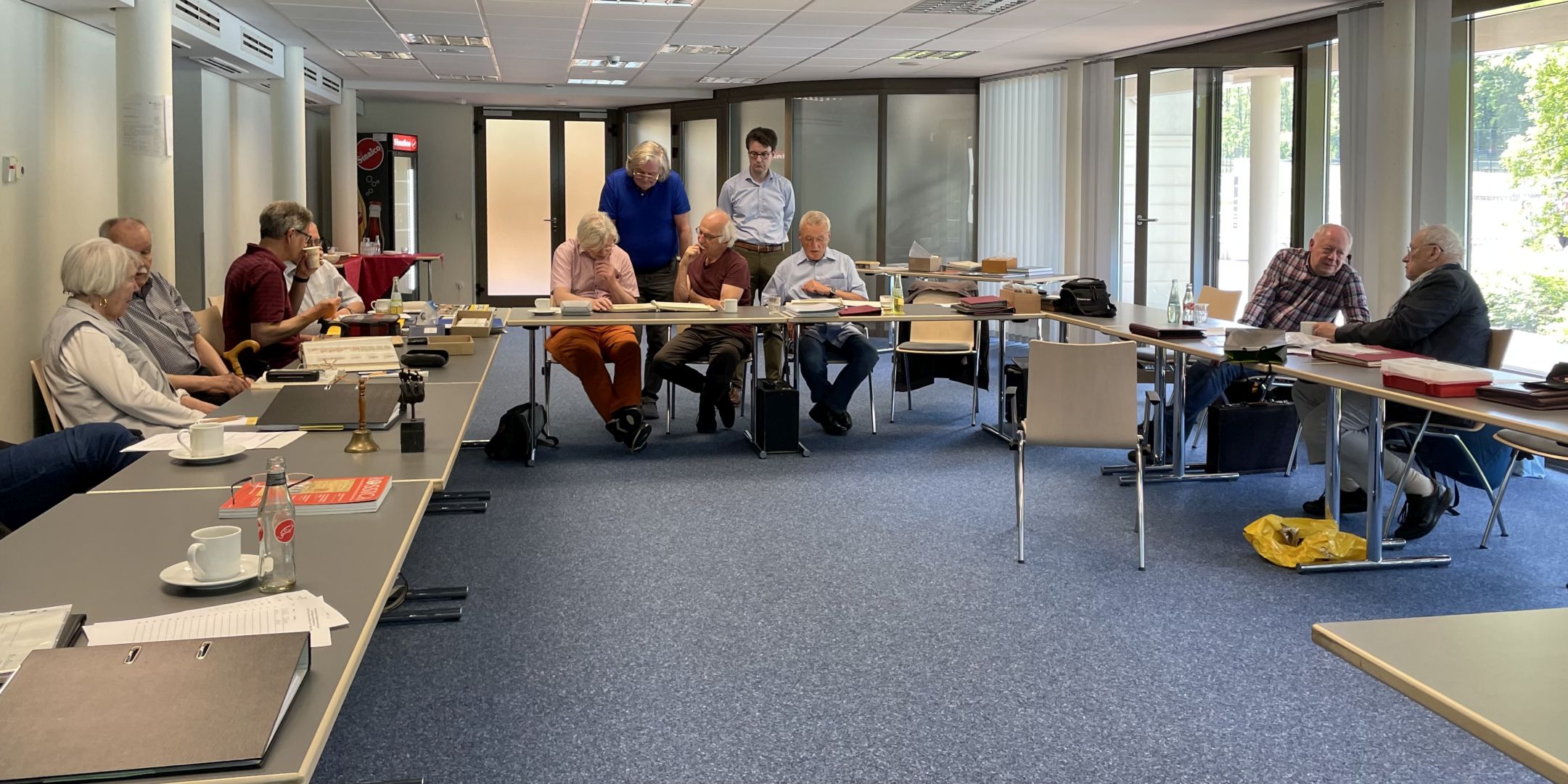
This is what it looks like when members of the ArGe Baltikum and guests come together, swap ideas, chat, show each other their latest achievements, ask questions, give presentations and enjoy seeing each other. Simply relaxed, restful and informative. No stress.
...there was a lively exchange throughout the days, and in addition to the formal members' meeting, there were of course – as usual – interesting presentations, this time by these 3 active members:
We have gathered all our strength and replenished our inner stores of motivation – and are looking forward to our monthly video chat, the BALTIKUM 2024 editions,
the MARE BALTICUM in Tartu and our next members' meeting in 2025, on May 23–25, also in Hennef!
37. monthly video chat
The cover shown here illustrates one of the topics of the above video chat: a member asked about the origin of this Latvian postal stationery without nominal value from December 1990, long before Latvia issued its own stamps again. The answer: Mi U2, PS for domestic use.
Other topics were: Questions about the Baltic States on philaseiten.de, new acquisitions by individual members, transport problems of our exhibits on the way to Mare Balticum, discussion about the advantages of video chat (article on this coming soon).
Our monthly video chat, where anyone with an interest in Baltic philately is welcome, takes place on every first Saturday of the month at 17 h CET (more technical information on this here).
Next date: June 1, 2024
Special topic:
Postboxes from around the world (Olaf Hoffmann)
Join the Zoom meeting with:
https://us02web.zoom.us/j/85338222428?pwd=WGpZRXJTZVpnSnB6eHg4Ukx2aFVHdz09
Valuable talks in Munich
Good attendance, lots of contacts - the most recent PHILATELIA in Munich was again a success all round. The concept of limiting the trade fair to two days simply meant that the visitors were well distributed over both days and there was never a day on which there was more or less low tide, as we often experience at trade fairs with three days. Of course, in the last hours of Saturday and especially on Sunday afternoon, the crowds slowed down considerably. But that happens at all trade fairs. Therefore, it cannot be emphasised often enough that less is more, that both visitors and exhibitors prefer events that run over two rather than three days. The concept of mixing non-commercial and commercial exhibitors and not separating them is just as convincing.
Our trade fair team this time consisted of Friedhelm Doell, Reinhard Heinrich, Olaf Hoffmann and Torsten Berndt.
We not only answered the visitors' questions, but also learnt a thing or two. Who knows, for example, that in the period before the German occupation in the First World War, only comparatively few postcards were produced in Lithuania? There are many offers from Estonia and Latvia, as a visitor specialising in philocartography explained to us, but you have to search a long time for Lithuanian items. Lucky the Lithuania aficionados in our working group, whose albums also contain picture postcards!
On Saturday, a veteran of philately and expertising visited us: Wilhelm van Loo had found his way to Munich from the far west. More sprightly than some people 20 years younger, he wandered around the hall, taking photographs and finding time to exchange ideas. It's not just because of his rich experience that it's always a pleasure to chat to him.
This time, our monthly video conference took place "Live from PHILATELIA". For the team at the stand, the conference camera and audio worked as usual; however, the travelling video message from Friedhelm Doell, who took participants on a virtual tour of the exhibition hall, was received by colleagues at the stand – unlike the external participants – without audio. So there is room for improvement.
With its contemporary concept, the organising trade association APHV has positioned PHILATELIA for the future. At the farewell, the motto was: "Next year, same wave, same place".
Latvian Post to close 105 post offices
As of January 25, 2024, there are 173 post offices and 423 locations in Latvia where postal services are provided on request (www.pasts.lv/en/Category/Post_Offices). In relation to around 1.875 million inhabitants, this currently means one post office for approx. 11,500 inhabitants and a total of one postal facility for some 3,150 inhabitants.
On January 24, 2024, Latvian Post announced that it intends to close 105 post offices (from 176 at the beginning of the year) by the end of 2024, with 12 ceasing their services completely and 93 "changing their format", i.e. also only providing postal services on request. This means that by the end of the year there will only be 71 post offices in Latvia, one for every 26,400 inhabitants. Some residents already have to travel 20 to 25 kilometres to their nearest post office, a distance that will soon double.
In the postal service centres with the "modified format", customers who wish to use postal services must call the customer support telephone number and a postal employee will come to their home the next day.
The reason for the closure of the post offices is the unprofitability of their management for the Latvian State Post. Desperate reactions from the population, such as the offer by the local council of South Kurzeme (Latvia's largest municipality by area) to take over some of the tasks of the postal staff, have so far been unsuccessful, as the Latvian Post is not willing to hand over its offices and competences to the municipality.
My opinion: The times in which a postal system for the general public was seen as a state welfare service are clearly over. Capitalism has arrived in the Baltic States.
Source of information: Latvian State Broadcasting Corporation eng.lsm.lv/article/economy/transport/24.01.2024-latvian-postal-service-to-close-most-offices.a540108/
Estonian Post (brand name Omniva) addition as of January 26, 2024:
Also in Estonia, another 10 to 15 post offices will be converted into postal points this year (which are not owned by Omniva, but are operated by local authorities, for example in libraries or shops). Post points are also being replaced by parcel machines. Sending and receiving parcels is the most used postal service at 80%, and with outdoor parcel machines, people are not tied to opening hours. The hoped-for savings amount to 1 million euros per year; up to 10 full-time jobs will be cut in 2024.
There are currently 57 post offices and 59 post points as well as around 350 parcel machines in Estonia. "There will not be a wave of closures like in Latvia, as these changes have already taken place in recent years," assured Mart Mägi, CEO of Omniva.Source of information: Estonian State Broadcasting Corporation www.err.ee/1609234572/omniva-vahendab-tanavu-postkontorite-arvu-kuni-kumme-protsenti.
New status of the Latvian Post as of February 2, 2024:
The head of Latvijas Pasts, Beate Krauze-Čebotare, said on Thursday (February 1) that the plan to close 105 post offices had been put on hold. Latvian Transport Minister Kaspars Briškens also confirmed this. The Latvian Post's plan had caused great resentment in the country, as the decision would have left some municipalities without a post office. An individual solution is now being sought for each location, whereby the costs must also be seen in the context of small subsidies, said Krauze-Čebotare.
My opinion: Why not just like this?
Source of information: Estonian State Broadcasting Corporation www.err.ee/1609241208/lati-pani-postkontorite-sulgemise-plaani-pausile.
Consequences at the Latvian Post on February 7, 2024:
The Chairman of the Board of Latvijas Pasts, Raimonds Duda, and Councillor Ivars Blumbergs resigned because they felt that cooperation and communication with the Ministry of Transport had stalled and the common goal of developing the Post as a competitive company had not been achieved. For over a year, the new strategy to change the company's business model with significant process improvements had been developed with the involvement of the relevant officials from the Ministry of Transport. They had been aware of the restructuring plans for a long time, but had not raised important issues with the Post directly after the planned measures were publicised, but via social networks. The Ministry of Transport then instructed the Latvian Post to suspend and reconsider the planned closure of each post office in order to reduce Latvia's economic independence in postal services, taking into account the views of local residents, authorities, municipalities and employees in the sector.
Source of information: Estonian State Broadcasting Corporation www.err.ee/1609245840/lati-posti-noukogu-astus-tagasi.
Mare Balticum 2024 Exhibition Bulletin
The bulletin for MARE BALTICUM 2024 in Tartu / Estonia has been published!
Click on the image to the left to open a PDF document with all the important information about the competition exhibition!
The exhibition is sponsored by the FIP and supported by FEPA and the Estonian Philatelic Federation EFL (Eesti Filatelistide Liit). It will be one of the largest exhibitions in the region in 2024, with 500 frames planned.
Invited are participants from Estonia, Latvia, Lithuania, Poland, Germany, Denmark, Sweden and Finland, as well as Norway, Great Britain and the USA. All Exhibits related to Estonia from other countries are also welcome. The Literature Class is open for worldwide participation!
Please note that the registration deadline is February 29, 2024!
IREX, application forms and evaluation criteria see marebalticum.ee/exhibitor.
News from Ulm

Dealers' goods
The second stamp fair held in Ulm did not bring much new for the masses – in Hall 1 dealers and postal societies were ready and waiting, in Hall 2 the MAMA exhibition, associations and working groups, in the foyer a similarly sad canteen meal as last year and in the separate rooms some philatelic events of individual clubs and associations.
Remarkable innovations for the reporter were a larger stand of the Philatelic Youth with several events for children, a bagpipe player and some changes at the stand of the ArGe Baltikum.
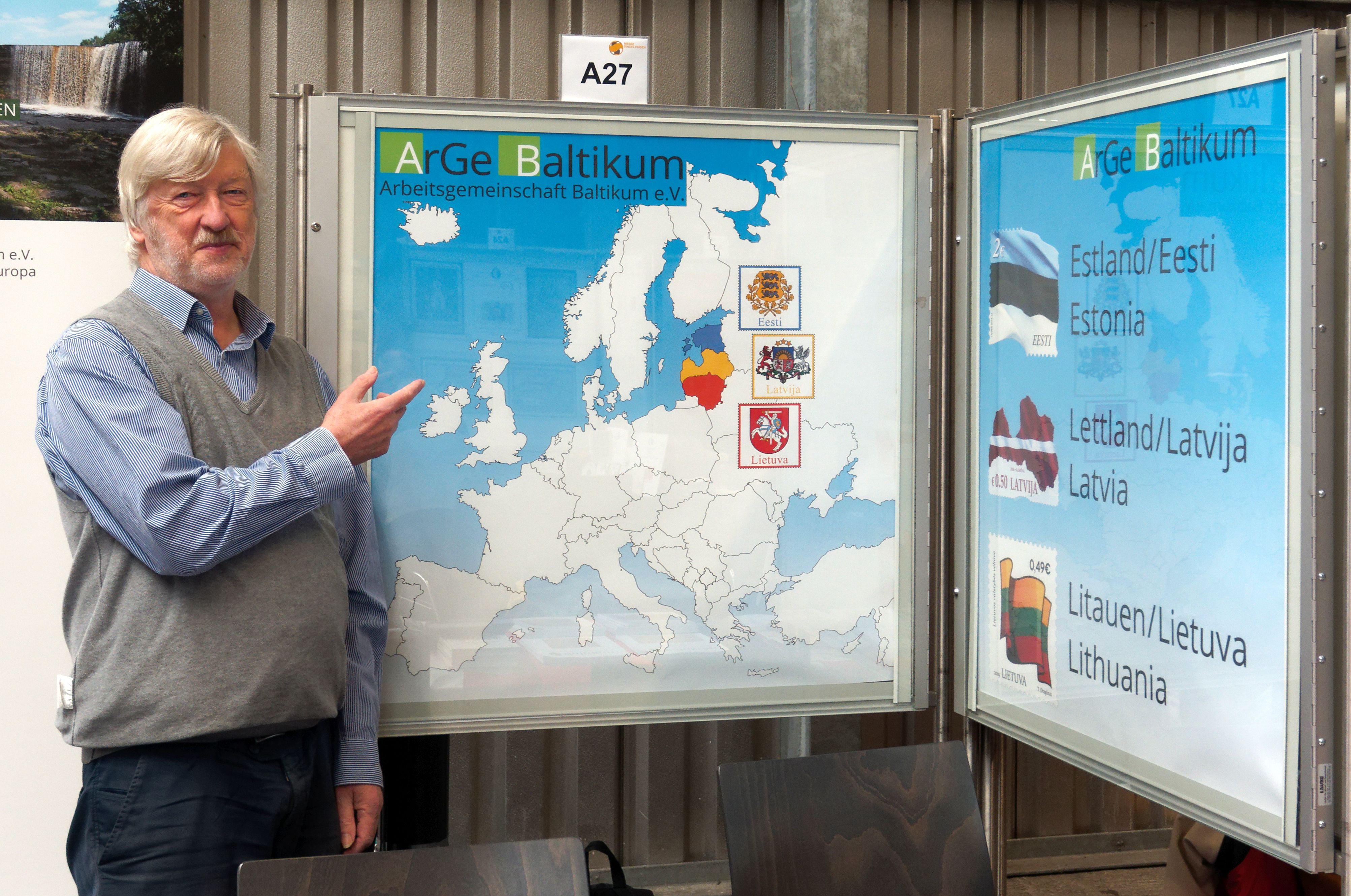
The new posters of the ArGe Baltikum with its designer Olaf Hoffmann.
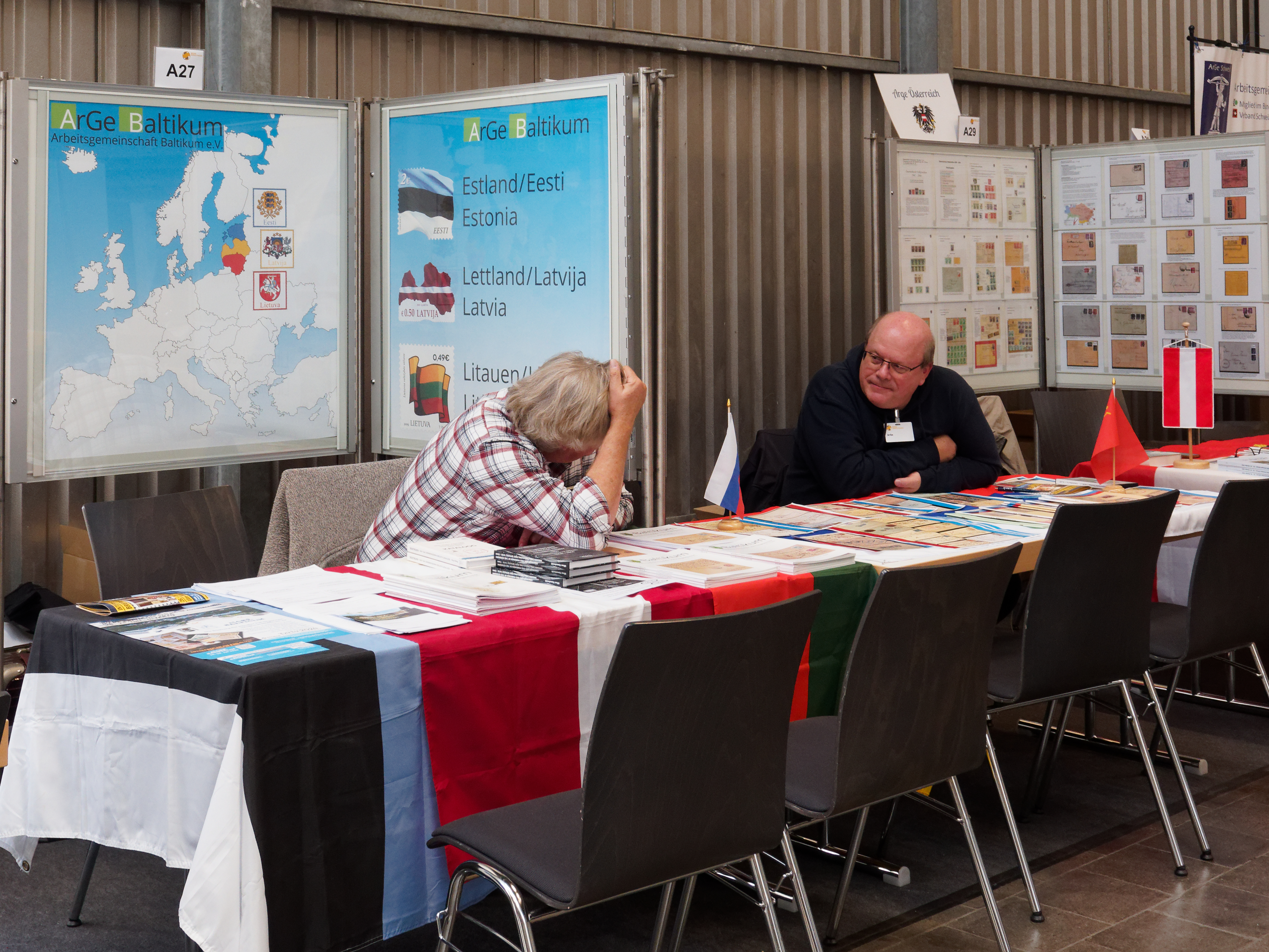
The stand staff had a lively exchange not only with visitors but also with the neighbouring working groups.
Torsten Berndt, Reinhard Heinrich, Thomas Löbbering, Ruud van Wijnen and Friedhelm Doell took turns at the ArGe stand and, as always, held interesting technical discussions. And of course there was the hunt for philatelic treasures, which nobody missed.
Oliver also brought two hot-off-the-press works on Estonian philately (they can be obtained from the webmaster, see Catalogues & Manuals of Estonia).
Mare Balticum 2024 in Tartu / Estonia

The exhibition will be held at the Eesti Rahva Museum (Estonian National Museum) at July 26–28, 2024. 500 frames are planned and the rules can be found on the website marebalticum.ee. Exhibit labels can be in English or German.
Tartu will be the European Capital of Culture in 2024, with an abundance of events. That alone is worth the trip!
For philatelists, there is another special reason to visit Tartu: the International Stamp Exhibition MARE BALTICUM 2024.
Our member Olaf Hoffmann designed the logo and 3 different daily postmarks for the three exhibition days.
Guest at Schöneberg City Hall
Quiet atmosphere, lively visitors, cheerful mood – you could experience all this at the Berlin-Schöneberg Town Hall at the end of June, beginning of July. The exhibition focused on three themes at once::
75 Years of Currency Reform, 75 Years of the Airlift and 75 Years of Stamp Land Berlin.
The organisers, the Forschungsgemeinschaft Berlin, the International Aero Philatelic Club "Otto Lilienthal", the Berliner Ganzsachen-Sammler-Verein von 1901 and the Philatelic Association Northeast can look back on the three-day event with pride. The exhibits were just as convincing all round as the lectures.
The Baltic Working Group and the Israel Interest Group were guests in Berlin. Both showed with their information stands that the future lies in the cooperation of different associations. On their own, it would have been difficult to staff the stand continuously. A total of three active members from both associations – the treasurers Michael Haslau and Christoph Wendland as well as the author – managed the marathon together. We had stimulating conversations with visitors, representatives of the organising associations and, last but not least, with each other.
We look back with satisfaction on three successful days and can only recommend to everyone to take advantage of a similar opportunity to present their own work.
Baltic Philately successful at IBRA 2023
The International Stamp Exhibition 2023 (IBRA 2023) was a philatelic world exhibition under the patronage of the Fédération Internationale de Philatélie (FIP), organised by a team of the Bund Deutscher Philatelisten (BDPh). In addition to a large trade fair with over a hundred dealers and postal societies, various special shows and lectures, it was also a worldwide philatelic competition.
17 of a total of 809 exhibits revolved around the philately of Estonia, Latvia and Lithuania, i.e. about 2 % of all exhibits. The evaluation level was high, with a total of 64 times (8 %) Large–Gold and 196 times (24 %) Gold being awarded. The Baltic exhibits were honoured with 2 x Gold, 9 x Large–Vermeil, 4 x Vermeil and 2 x Large–Silver.
"But in Baltic philately", says Vesma Grinfelds (USA), "you have to say that Large-Vermeil actually means Gold for us, because we always get so few points for it thanks to the insignificance of the collecting area as seen worldwide!"
| Class | Description | No. | Name | Country | ArGe member | Exhibit | Points | Award |
|---|---|---|---|---|---|---|---|---|
| 3B | Postal History: Europe | 3B.19 | Hannes Westendorf | Luxembourg | • | Postal History of Estonia during the Russian Period | 93 | Gold, Special Prize |
| 3B.20 | Ants Linnard | Estonia | Postage payment instruments as a reflection of Estonia's development in 1918–1940 | 75 | Large–Silver | |||
| 3B.21 | Jaan–Erik Roots | Norway | • | Estonia 1918 | 88 | Large–Vermeil | ||
| 3B.22 | Vygintas Bubnys | Lithuania | • | Lithuanian Post Office Network Development, 1918–1920 | 88 | Large–Vermeil | ||
| 3B.23 | Vesma Grinfelds | USA | • | Cancellations of the Provisional Era in Latvia: 1919–1921 | 86 | Large–Vermeil | ||
| 3B.24 | Oliver Hanschmidt | Estonia | • | Traveling Post Office cancels in Estonia 1918–1944 | 87 | Large–Vermeil | ||
| 7B | Thematic Philately: Culture | 7B.1 | Kaido Andres | Estonia | 400 years of the University of Tartu (people and circumstances) | 83 | Vermeil | |
| 12 | Picture Postcards | 12.11 | Indrek Ilomets | Estonia | Academic fraternal organisations of University of Tartu on postcards until 1940 | 90 | Gold | |
| 13A | One Frame Exhibit: Traditional | 13A.2 | Audrius Brazdeikis | Lithuania | The First Color Stamp of Lithuania - Raseiniai District Local Issue of 1919 | 85 | Large–Vermeil | |
| 13A.6 | Villu Roosa | Estonia | The Flower Design Issue | 77 | Large–Silver | |||
| 15A | Philatelic Literature (Monografs, Special Catalogs, Studies, published since 2018) | 15A.18 | Michael Bockisch | Germany | Handbook and catalogue: The Pictorial Postcards of Eastern Europe 2018 | 88 | Large–Vermeil | |
| 15A.62 | Antanas Jankauskas | Lithuania | Falsifikatai Lietuvos Filatelijoje / Forgeries in Lithuanian Philately | 88 | Large–Vermeil | |||
| 15A.73 | Aivar Kuuskvere | Estonia | Eesti Postmargid ja Tervikasjad Kataloog 2021 (Stamp and Stationery Catalogue Estonia 2021) | 80 | Vermeil | |||
| 15C | General Catalogues (published since 2020) | 15V.18 | Martin Bechstedt & Bernhard 'Tony' Fels | Germany | • | The Daily Postmarks of the Independent Republic of Lithuania since 1990 – Handbook and Companion to the Internet Database (= Lithuania–Handbook of Philately and Postal History Part 5) | 81 | Vermeil |
| 15D | Periodicals (2 complete volumes, published since 2020) | 15D.2 | Arbeitsgemeinschaft Baltikum | Germany | • | BALTIKUM | 78 | Large–Silver |
| 15F | Digital Literature, websites and software as experimental class | 15F.2 | Arbeitsgemeinschaft Baltikum | Germany | • | www.arge-baltikum.de | 85 | Large–Vermeil |
| 15F.28 | Bernhard 'Tony' Fels | Germany | • | Digital database of Lithuania and daily postmarks from 1994 – a forward-looking project | 81 | Vermeil |
The ArGe Baltikum itself received certificates and medals for its community productions – like all participants:

A unified medal for all judged exhibits
All other evaluations and information about the IBRA 2023 competition can be found in the organiser's Palmares brochure, which you can download here .
In total, at least 15 ArGe members from 6 countries came to Essen. The webmaster met, among others, ArGe members and country commissioners Vesma Grinfelds and Oliver Hanschmidt (who also participated in Essen as an international juror for the rehearsal).
But how easily philately can connect people was also demonstrated by the meeting with a fellow finalist for the 2023 Francis Kiddle Medal for the most innovative website, Webmaster Marco Occhipinti of the Website sifizidiposta.it ("postal letters") (whom he only knew from a picture on the internet and recognised by chance in Essen), and FEPA Vice-President Giancarlo Morolli, chairman of the jury for the Francis Kiddle Medal.
Vesma Grinfelds summed it up: "It's a small world for philatelists!"
Web of the ArGe finalist for the Francis Kiddle Medal
The ArGe Baltikum website is one of the 5 finalists for the "Francis Kiddle Medal for the most innovative website 2023" of the FEPA (Federation of European Philatelic Associations, the umbrella organisation of the European national philatelic associations),
This award is presented to an individual or partnership that has successfully promoted philatelic activities through the development of a website, channel, blog, application or other digital communication tool. The award is given in memory of Francis Kiddle, a very fine and dedicated philatelist who worked hard to develop and improve philatelic literature in all its facets, including digital.
Visitors to the FEPA website suggested nominations for the medal, which were then submitted to a group of advisors who assisted the board in drawing up a shortlist of candidates for the medal. The 2023 medal will go to DASV, the Deutscher Altbriefsammler-Verein, and the four runners-up, including ArGe Baltikum, will receive a certificate.
Therefore, this web belongs to the five most innovative philatelic webs in Europe – so it is worth to be looked at and browsed! (It always was, but by now, this is official ...)
Honouring Bernhard 'Tony' Fels & Martin Bechstedt
Two great Lithuanian philatelists from our working group were honoured by the Bund Deutscher Philatelisten (BDPh) for "services to research and literature" at the 2023 general meeting in Hennef, represented by ArGe chairman Torsten Berndt.
"While at the Olympic Games you can win a gold medal for the first time, for BDPh honours you have to work your way up from bronze to silver to vermeil," Torsten Berndt explained to the audience. "As 'Tony' Fels has already been awarded twice for his achievements, he now received the vermeil pin of honour – Martin Bechstedt, on the other hand, who is being honoured for the first time, will receive the bronze pin of honour."
The board and members of the ArGe are pleased that their many years of personal commitment to the philately of the Baltic States has been appreciated and recognised by the supra-regional philatelic association BDPh.
General Assembly 2023 in Hennef
This year's general meeting of the ArGe Baltikum took place in a quiet atmosphere – with intensive philatelic discussions, the buying and selling of some valuables, exciting lectures and personal encounters with like-minded people and friends.
The statutory Annual General Meeting was held on Saturday May 13 and the results will be communicated to all ArGe members by publication in BALTIKUM 15.
At the General Assembly, Chairman Torsten Berndt honoured two deserving members of the philatelic community on behalf of the Federation of German Philatelists (BDPh): Bernhard 'Tony' Feld and Martin Bechstedt (see separate article).
The fact that our member Tobias Huylmans (part of the founding board of the ArGe Baltikum) was awarded the Köhler Medal for deserving BPP philatelists by the Bund Philatelistischer Prüfer (BPP) a few days ago, at the age of not even 40 (probably an age record for a long time), was also not left unmentioned.
Exciting presentations enriched the Saturday afternoon and evening.
Olaf Hoffmann, whose ancestors came from Estonia and Latvia, told of his Baltic past using stamps, postcards and letter documents.
Martin Bechstedt introduced us to the amazing and short-lived existence of Estonian vending machine stamps (production from September to December 2020, dismantling of the machines in May 2021).
Thomas Löbbering informed us in two lectures (on stamps and covers) about the peculiarities of overprints, net overprints and underprints of the stamp issue Estonia Mi Nos. 87 to 89, the postage stamps Mi Nos. 54 and 56 with repeated overprint of a coloured net print as well as the new value in kroner currency.
Philatelia Munich
After a break of two years due to the pandemic, the stamp fair "Philatelia" took place again in Munich on March 4 and 5, 2023, at the same time as the Numismata in the MOC, but free of charge. On Saturday morning, the fair was crowded and offered a number of special features and innovations. It was organised by the dealer association APHV under the project management of the Munich dealer Wolfgang Lang.
1 The fair with more than 50 dealers was held to promote philately, i.e. the dealers wanted the visitors to get a taste for real stamps and covers again after the Corona break. The "big money" as in Essen and Ulm was not the order of the day here.
2 That is why traders and working groups were not strictly separated (as at the stamp fair in Ulm), but rather mixed. Lang: "The dealers need the working groups and the working groups need the dealers at this fair. We have to understand that. One group alone would not attract thousands of visitors!"
3 The stands were free of charge for the working groups. The project manager also explained this as follows: "The real costs for renting a stand and setting up and dismantling are around 350 euros per working group. No society could or would pay that anyway. If we ask for 50 euros from each working group as a contribution to costs, VAT and the costs of invoicing and accounting etc. will be deducted from this. Then we might as well not charge at all."
It is to be hoped that the event management will also remember the concept of cross-fertilisation between traders and working groups in future when planning hall occupancy!
C.G. Award 2022
Just in time for Christmas, ArGe Baltikum received the news from the auction house Gärtner that ArGe Baltikum has achieved 9th place in the overall ranking (print, digital and youth) of the C.G. Awards 2022, a "more than respectable result among 36 strong international participants" (Löbbering). This is associated with an amount of 200,- € which will be donated to the association's treasury. The award ceremony took place on November 24 as part of the "MonacoPhil" 2022.
The individual scores were as follows:
Overall: 9th place out of 21 participants in all 3 areas with 73.5 points out of a possible 100 (1st place = 78.5 points)
Print Media and Innovative Ideas: no separate placement, 35 out of a possible 50 points (1st place = 42.5 points)
Digital: 12th place out of 31 participants with 17.5 out of 30 possible points (1st place = 23.5 points)
Youth, youth development and public relations: 10th place out of 29 participants with 15 out of 20 possible points (1st place = 18 points)
You can find the detailed results on the web at https://www.cg-award.com/2022_en.php.
The Collectors of Ulm
In Ulm, um Ulm und um Ulm herum – this is a well-known tongue twister that every child in Germany once learned. In Ulm, that is in the form of the fair the place where the successor event to the legendary Sindelfingen stamp fair took place after a two-year (pandemic-related) interruption from October 27 to 29, 2022. Philatelists from all over the world met in a large hall with dealers and postal societies and a smaller one with working groups and associations. And the ArGe Baltikum was also there, in the form of an information stand and in the person of several members who manned this stand (and others) and answered questions.
Torsten Berndt, Thomas Löbbering and Friedhelm Doell (Martin Bechstedt unfortunately dropped out due to illness) worked at the stand, sometimes individually, sometimes together, framed by the ArGe Austria on the right and the ArGe Russia/USSR on the left, at which our member Reinhard Heinrich was also active for two days. Gerhard Dreher manned the information stand of the Interest Group German Occupation World War I and offered information about "Ober Ost" (Upper East), while Tobias Huylmans presented at the stand of the auction house Köhler, among other things, a device for multi-spectral analysis of colours and imprints, which is usually used by the Federal and State Criminal Police Offices for document examination.
An interim balance from the ArGe stand: we have a new member and a lot of questions were answered to collectors who sometimes arrived with something very special or who are just starting to get interested in the Baltic as a collecting area. But the most gain was achieved by the stand occupants themselves: through many contacts, exchange of information, ideas and suggestions and through the community experience that extended beyond the fair with dinner together and an excursion to Blaubeuren.
On the occasion of the fair, the results of the 4th ArGe literature exhibition in the BDPh (associated with the Rauhut literature prize) were also announced. We achieved:
These are results of which we can be justifiably proud. In particular, Martin Bechstedt and Bernhard 'Tony' Fels are to be congratulated on their internet postmark-database with accompanying book, since in the otherwise somewhat Germany-heavy evaluation in this competition, the "fringe area" of Lithuania was deservedly rated highly here.
Conclusion: The stand staff recommends all ArGe members to be present at a stamp fair themselves. Should this be in Ulm, one can already say: a trip to Ulm is worthwhile, whether in the spacious and lively city centre or in the surrounding Allgäu countryside!
Cooperation with the Lithuanian Philatelic Society (LPS)
The cooperation of the ArGe Baltikum with other philatelic societies dealing with the Baltic States and the exchange of journals with them has now been extended to the Lithuanian Philetelic Society (LPS) based in Chicago/USA, after HBG and Rossica (since 2018) and the ArGe Deutsche Ostgebiete (since 2019).
Members of the ArGe Baltic receive access to the Journal of the LPS from No. 1 / 1946 onwards. The Bulletins have been bilingual Lithuanian / English since 1988 (No. 205) and offer a wealth of first-class information on Lithuanian philately from the pens of active members worldwide.
If you are also interested, please become a member of ArGe Baltikum!
In return, LPS members receive access to the latest issues of BALTIKUM (issues older than 1.5 years are freely available on this web anyway). By the way: Lithuanian philately is also the subject of a monthly video chat (in English) at the LPS, to which all interested parties are welcome at any time. Information on this can be found on the LPS website, lithuanianphilately.com.
Just have a look!
Farewell to Vitold Fugalevich (1930–2022)
Vytautas Fugalevičius (baptismal name 1930) or Witold Fugalevich (Germanization of the name 1941) was a borderline man between worlds with a fate that befell not a few of his generation.
Fleeing twice, in 1941 and 1944 from the Soviets from his native Lithuania, it took him as a stateless via the Czech Republic, Thuringia, Berlin and Hamburg to Schleswig-Holstein, where he found a new home and he finally received in 1954 the German citizenship. His mother was a native of Memelland, his father a Lithuanian in government service as a surveyor. He described this story in the first issue of the magazine BALTIKUM, No. 1 (2016, p. 54–62).
After studying shipbuilding in Kiel, mainly employed as an engineer in the development department of the Kiel Howaldtswerft shipyard, he developed into one of the distinguished personalities of Baltic philately. In addition to his interest in Lithuanian stamps, he found his main field of activity in the 1960s in the postmarks on the territory of Lithuania, including the Memel area.
With his handbook "Poststempel in Litauen, Normstempel und provisorische Entwertungen 1918–1940/41 / Pašto Antspaudai Lietuvoje / Postal Markings in Lithuania", first published in 1985, he virtually launched the collecting field "Postmarks of Lithuania". Two editions followed, the last as a complete new edition in 2015. He created a standard work known among Lithuania collectors worldwide, which is also appreciated by Memel collectors in Germany.
In 1994 he co-founded the Research Community LITHUANIA , until 2004 he acted as editor-in-chief of the journal "LITUANIA – Mitteilungsblatt der Forschungsgemeinschaft Litauen im BDPh e.V.". In 2005 he received the silver pin of the BDPh for "Merits in research and literature".
As long as his health allowed it, Vitold Fugalevitsch (Lithuanization 2004) regularly participated in philatelist meetings, be it in Ehlershausen, be it in Hennef. He always participated actively in the discussions and contributed his immense expert knowledge generously. One always learned something from him; even those who did not collect Memel or Lithuania benefited from the dialogue.
Vitold Fugalevich passed away in July this year after a long life of self-determination in the last decades. With him we also lose one of the most distinguished publicists of Baltic philately. His extensive work will remain. His friends mourn the loss of a pleasant contemporary whom everyone was lucky to have met.
BALTIKUM now also in English
The BALTIKUM Zeitschrift für Philatelie und Postgeschichte (Journal for Philately and Postal History), the newsletter of the Baltic Working Group, will also be published in English from issue 13 / 2022! The first 12 issues will follow retroactively one after the other.
This continues the bilingual edition of this web (since 2021). The English edition of the BALTIKUM now enables non-German-speaking members and interested parties worldwide to better understand the research results of the ArGe in the BALTIKUM articles in addition to general information on the collection area, the ArGe Baltic States and linked media (in this web)!
The English edition does not contain any illustrations, but the texts, captions and references of the original articles, so that together with the German-language edition they represent an (almost) full-fledged substitute for a complete publication in English.
The English-language editions of the BALTIKUM are available in the same way as the German-language editions, but only as a PDF file: for ArGe members immediately and for non-members after the publication of 3 further issues (i.e. after 1.5 years). The table of contents and a sample can be found in German here, the English version here!
If you are immediately interested in either the complete German or the complete English edition: become a member of the ArGe and get both editions!
Martin Bechstedt & Bernhard Fels: The daily postmarks of the independent Republic of Lithuania since 1990
Lithuania – Handbook of Philately and Postal History Part 5 (German with English summary)
This handbook continues the established standard work. This handbook continues the established standard work "Postal Markings in Lithuania 1918–1940/41" by W. Fugalewitsch. However, not all postmarks since 1990 can be illustrated, their number has become too large. One of the main reasons is that the plastic stamps with rubber stamping plates were not always able to withstand the stresses and strains of everyday postal use and often had to be replaced, resulting in a large number of different stamps.
So far, there are several thousand rubber stamps recorded from 1994 onwards. These cannot possibly appear in a printed work. The digital age is expanding the possibilities:
The printed manual explains how the multitude of postmarks can be classified into seven different types so far, based on certain philatelic and technical characteristics. The description of each type contains
– Information on the material of the stamping equipment (metal or rubber))
– Design
– Diameter
– Font type and size
– Length of the country name LIETUVA
– Date lines
– Post towns and
– Distinguishing letters.
Exemplary illustrations, extensive tables and the presentation of the history of origin as well as the historical background allow a better understanding of the stamp types. Read some sample pages here!
An Internet database provides images and periods of use of all known Lithuanian postmarks, arranged alphabetically by postal location. New discoveries can be added without limit. You can access the internet database directly here on this web!!
This manual is also a companion book to the database with instructions on how to use it.
Format 27x20 cm, 158 pages. Numerous colour illustrations, Hardcover, published by Martin-Bechstedt-Verlag Bargteheide. ISBN 978-3-942841-04-7. Order: for 24,50 € at local bookshops or plus shipping costs directly from the publisher at e-mail m.bech@t-online.de.
Video interviews on the ArGe Baltikum
Videos with subtitles. Press  after the start of the Youtube video to turn on and off (with mobile phones only visible in landscape mode), on Android mobile devices choose
after the start of the Youtube video to turn on and off (with mobile phones only visible in landscape mode), on Android mobile devices choose  and
and  . Switch German and English via Settings – Subtitles.
. Switch German and English via Settings – Subtitles.
Torsten Berndt and Martin Bechstedt gave an interview to our webmaster as new members of the ArGe Baltikum board about their goals for the further work of the ArGe.
They also told about their personal collecting preferences and experiences with publishing in print and digital media.
New Board of ArGe Baltikum

From left to right: Martin Bechstedt (Deputy Chairman), Torsten Berndt (Chairman), Michael Haslau (Treasurer), Friedhelm Doell (Webmaster and Corporate Designer)
At the general meeting on 14 May 2022 in Hennef, the members present voted unanimously for the board members shown above, after Thomas Löbbering and Michael Wieneke did not stand for re-election for private reasons.
The treasurer Michael Haslau explained the finances of the association.
Thomas Löbbering reported on the activities of the association since the last meeting in Hennef in 2019.
Next to him Michael Wieneke, in the background Michael Haslau and the auditors Karl Lukas and Thomas Radzuweit.
The retiring board members received a small souvenir and a big thank you from the hands of the webmaster Friedhelm Doell.
The former chairman Thomas Löbbering presented the insignia of the first chairperson to the new chairman Torsten Berndt übering: the bell and the work of art with the title "Together we are strong!"
As always, specialist lectures enriched the meeting.
Thomas Löbbering reported on the journey around the Baltic Sea of the airship Graf Zeppelin LZ 127.
Hannes Westendorf showed "Destinations from Estonia to 1905".
Martin Bechstedt presented the handbook "Die Tagesstempel der unabhängigen Republik Litauen seit 1990" (The daily postmarks of the independent Republic of Lithuania since 1990) written by him and Bernhard 'Tony' Fels (who, like several other members, was unfortunately unable to come to Hennef for private reasons).
This handbook is the printed introduction to the stamp project of the same name by the two authors and other stamp collectors from Germany and Lithuania, which in addition to this text section includes an internet database with 6,500 stamps. This is linked via the ArGe web here.
Traditionally, the general meeting ended with a joint barbecue evening. In addition, as always, numerous covers and stamps changed hands.
Слава Украïнi – Long live Ukraine!
Since February 24, 2022, the Russian Federation's attack on Ukraine has changed all our lives. Europe is reinventing itself as a federated community of free nations that can and must no longer take life and freedom for granted.
Vigilance as the price of freedom is something that the three Baltic republics of Estonia, Latvia and Lithuania understand particularly well from their own experience. Solidarity with the attacked Ukraine is therefore exceptionally strong and unconditional among their populations. Thus, within a few weeks, the postal organisations of all three countries have emitted commemorative issues expressing their special solidarity with Ukraine:

Latvia issued a souvenir sheet at 3 x 1.44 € and a decorative field, combining the Ukrainian national colours blue and yellow with the colours of the Latvian national flag, with pictures and inscriptions of the freedom monuments in the main cities of Riga and Kiev, just two weeks after the start of the attack.
Next to the block's pictorial inscriptions Слава Украïнi, (spoken: Slawa Ukrajini, English: Glory to Ukraine / Long live Ukraine) and SLAVA UKRAINAI! in Latvian, the vignette field and each stamp reads Mēs ar jums! (English: We are with you!) in both languages.
Estonia followed one month after the start of the war on March 24 with a stamp at 1.90 €. Against the blue and yellow background of the Ukrainian flag, the rising white dove expresses the wish for peace.
The linesСлава Украïнi and Eesti toetab Ukrainat (Estonia supports Ukraine) put the picture into words.
Lithuania also chose the Ukrainian national colours blue and yellow for the overall composition with its stamp issue for 6 May. The stamp at 1 € + 1 € surcharge shows a couple embracing and appears in a miniature sheet of four stamps with two decorative fields.
The three-liner Ukrainos laisvės gynėjams (English: for the defenders of freedom in Ukraine) explains the occasion of issue as well as the use of the surcharge.
Photo credits:
Pictures Estonia (issue of March 24, 2022) and Latvia (issue of March 10, 2022): news@wopa-plus.com
Lithuania image (planned issue date May 6, 2022): Tony Fels
Paide cancellation 2 VIII 41 a forgery
The Estonian philatelist Ahto Tanner points out on his website that the stamp of PAIDE ПАЙДЕ -2 VIII 41 , which is often offered on the internet, is most probably a forgery.
According to this, the genuine stamp of the Soviet type, Hurt/Ojaste 19A2:1, was delivered to the Paide post office shortly before the occupation of Paide by German troops in August 1941. It was explicitly not intended for cancelling letters, but only for internal use by the post office.
According to Ahto Tanner's view, the left stamp impression is genuine and the right one a stamp forgery, as indicated by the details marked in red.
According to statement of BPP expert Thomas Löbbering the question of whether there are different stamps (genuine and false) or one and the same (misused) stamp still needs to be clarified, as a stamp could indeed change in the course of use as shown.
(← click to enlarge)
All the postmark data available so far has been misused on documents not used for postal purposes (blank sheets, envelopes not addressed or addressed later, souvenir envelopes with postmark data after the German occupation, etc.). The illustrations show some examples:
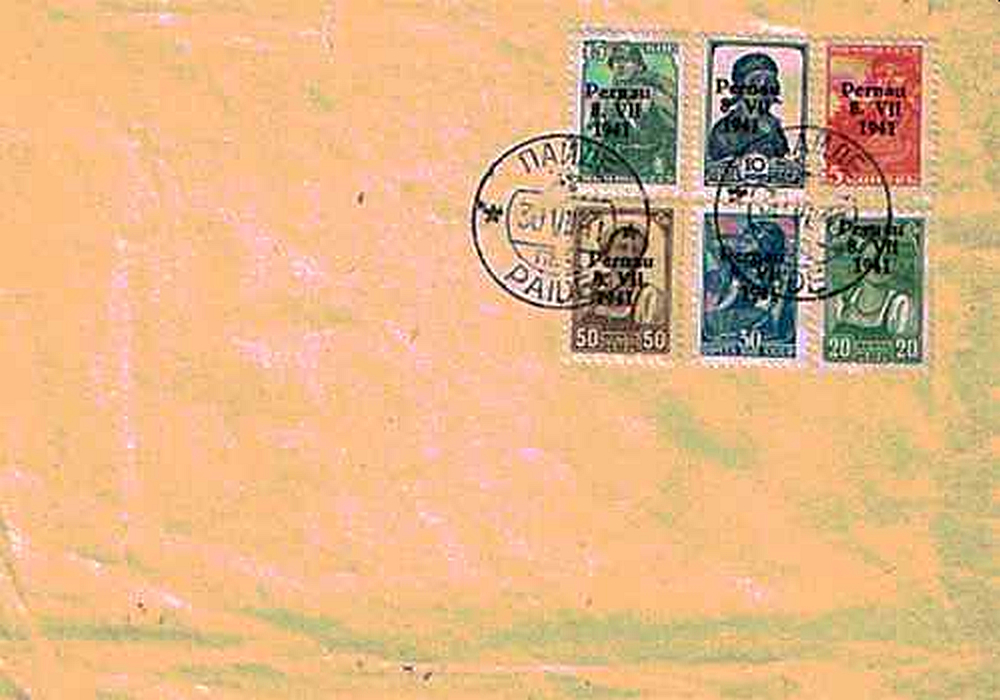
Postmark date 30 VII 41 on stamps of the issue Pärnu II, which were sold for the first time on September 14, 1941 and only for souvenir purposes without postal validity.
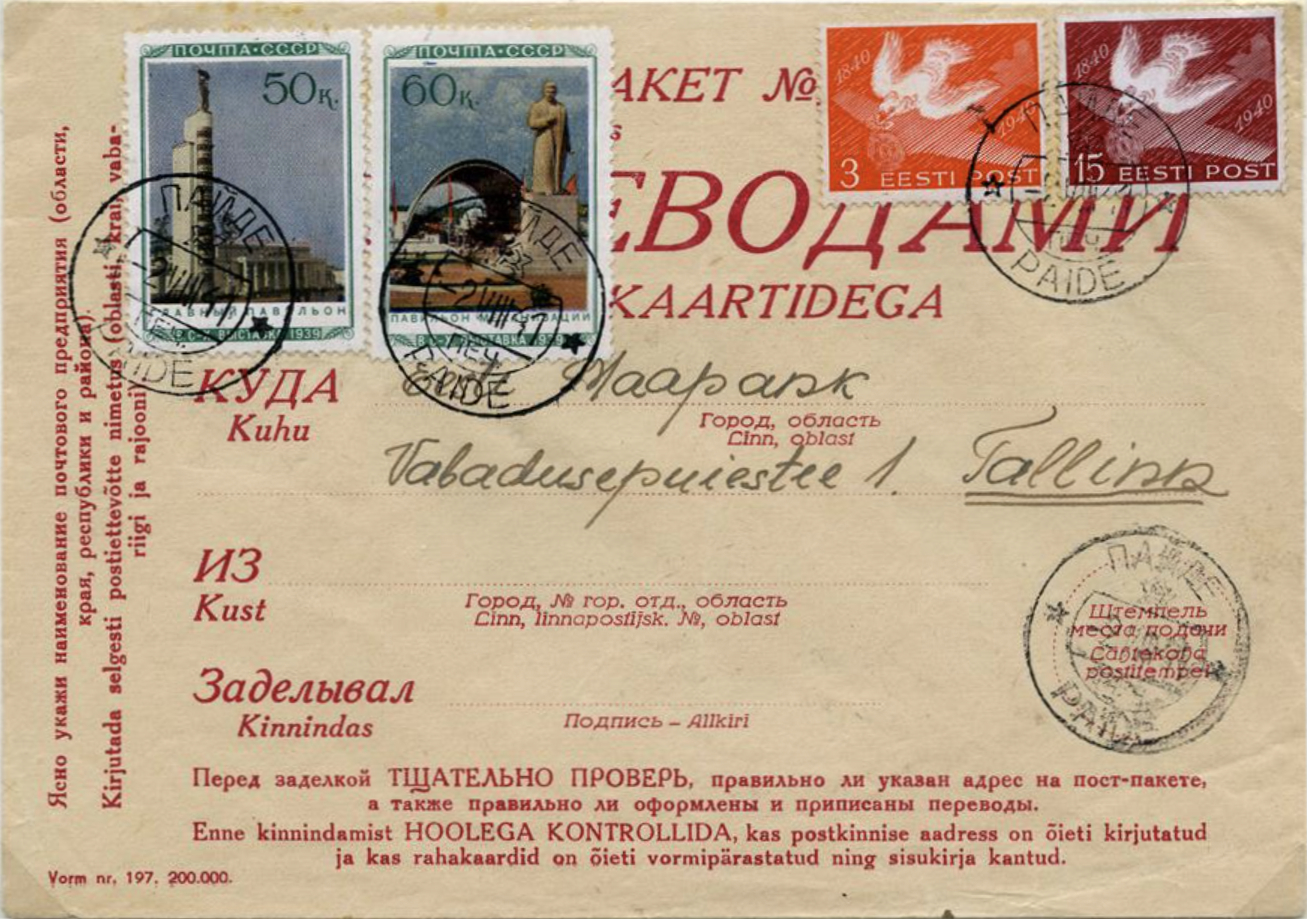
Postmark date -2 VIII 41, most frequent but at the same time most improbable postmark date, as the withdrawing Soviets blew up the Paide post office on this day.

Postmark data after the occupation of Paide by German troops, here a sample cancel on "made" (real used) Ostland letters of the dealer Walter Prell of -8 II 42 with previously cancelled Soviet postmark PAIDE ПАЙДЕ -2 VIII 41
Illustration credits and further information (unfortunately only in Estonian): https://postiajalugu.ee/voltsitud-postitempel-paide-petch/.
Auxiliary guide no. 3 made available for download
The frequently requested Auxiliary guide no. 3 "Postmarks in the Baltic States used from 1944/1945 onwards" is now available for download in version 1.0 (as of November 2020) for all interested parties.
Please note: The manual is a "work in progress", an ongoing construction site whose progress depends on the cooperation of all interested parties.
Please report your new finds to the ArGe!
You can find further information and the link to the download under Publications --> Auxiliary guides.
PHILA NIPPON '21 and more
An island defies Covid-19: Nippon. Our Japanese collector friend Hirotaka Araki reports on three international and national exhibitions from the land of the Chrysanthemum Throne during the second half of 2021, at which he was able to successfully present Lithuania's philately:
| Place | Date | Exhibition | Exhibit | Award |
|---|---|---|---|---|
| Yokohama | August 25–30, 2021 | PHILA NIPPON ´21 (37. International Asian Stamp Exhibition) |
The Postal History of the Re-independent Lithuania 1989–1996 (5 frames) |
Large Vermeil (85 Points) |
| Kawagoe Saitama | September 25–26, 2021 | SAIPEX 2021 (21. National Japanese Stamp Exhibition) |
see above | without competition |
| Mejiro / Tokio | November 12–14, 2021 | Tomon Philatelic Exhibition (20. Regional Stamp Exhibition) |
Lithuanian Christmas Mail 1994–2020 (4 frames) |
without competition |
| Mejiro / Tokio | November 19–21, 2021 | Kanto Yushu Salon (6. Exhibition of the Study Group) |
Sugihara Chiune, the Japanese diplomat who saved 6,000 Jews (2 frames) |
without competition |
Congratulations and here's to many more years of successful exhibitions, Hirotaka!
P.S.
For an article on Chiune Siguhara, Righteous Among the Nations, Lithuania MiNo. 848, see BALTIKUM No. 5 / 2018 on pages 59 to 61.
Also take a look at the newly designed collection area presentation "Republic of Lithuania from 1990" on this web!
Christmas mail from Lithuania
We do this with two special stamps of the Lithuanian Post Office and a (as usual in Lithuania) Christmas green special postmark "Kalėdų Paštas" – "Christmas Mail".
The stamps of 0.49 € and 0.81 € issued on November 27, 2021 show two matching motifs: One of the festive stamps depicts an ancient Lithuanian mythical creature – a deer with nine horns that carries heavenly bodies in its horns. In various mythological sources it is said that the white deer flees into the forest during the solstice and returns at Christmas. The deer takes nine days to make this journey, which is why it is also called nine-horned. It is believed that it carries the sun in its horns, and so the nine-horned deer symbolises the light returning to earth, and at the same time the most beautiful holidays of the year are brought into every home.
The second stamp shows a well-known Christmas symbol – a present. It is decorated with a ribbon that seems to extend the representation of the celestial bodies carried by the nine-horned deer depicted on the first stamp. (Text: Lietuvos paštas)
Database Project 'Daily Postmarks of the Independent Republic of Lithuania from 1990 onwards'
In July 2021, a database application by ArGe members Martin Bechstedt and Bernhard 'Tony' Fels went online for everyone. All you need is a working internet connection and a browser programme like the one you are currently using to view this page.
You can view the tables or figures on the Internet or, if you are interested, download the entire content or only parts for your own use.
More information on this and a brief introduction to the topic 'The Daily Stamps of the Independent Republic of Lithuania since 1990 – Introduction and Systematisation' can be found on our Working aids page!
First Digital Regulars' Table of the ArGe Baltikum
On May 1, 2021, the ArGe Baltikum met for its first Digital Regulars' Table. Since we were already unable to meet in person in 2020 due to the pandemic and the general meeting in Hennef also had to be cancelled for this year, this seemed like a "small" substitute.
The advantages: We don't need to travel and can still talk and see each other, show documents and give lectures, exchange files and information, etc. The disadvantage: a personal meeting has a different social quality than a digital meeting. According to the statutes, we have to meet physically for a general meeting, so this is not possible digitally.
The meetings will be held as Zoom meetings at monthly intervals until further notice. Exact dates, times and the access link can be found on our activities page.
JAPEX 2020, Tokyo 6 – November 8, 2020
Philately only takes place digitally? Not quite: On February 23, 2021, after almost three months of running and swimming, I received a SEA MAIL from IMAFUKU, JAPAN dated 1 XII. 20 12-18. Not only the clean stamp strikes and pleasing stamp motifs were pleasing to the eye. Even greater curiosity was aroused by the label that the SEA MAIL "Prioritaire - LC" landed in the hitherto unknown Hessian overseas port of NIEDERAULA . More on this below.
But now to the contents of the SEA MAIL: The 34-page official catalogue of JAPEX 2020 reveals illustrious patrons of the Japanese national stamp exhibition, including Japan's Ministry of Foreign Affairs, the German Embassy in Tokyo, the BEETHOVEN-HAUS BONN and the world's highest-circulation daily newspaper, Tokyo Shimbun. Under the black-red-gold motto of the Beethoven Year 2020/2021 "Shaping the Future", the 55th National Exhibition of Japan gathered the worldwide spectrum of philately, including our collector friend ARAKI Hirotaka.
As a leading LITHUANIA–specialist in Japan, he exhibited his display "The postal history of Lithuania based on registered mail 1989–1996" in five frames and won Vermeil. On the occasion of the exhibition, he wrote a multi-page article in his local association's quarterly magazine "TOMON PHILATELIE" of December 2020 on the occasion of the "100th Anniversary of the Restoration of Lithuanian State Independence Presented on the Basis of its National Stamps".
The modern philately of Lithuania offers a wide field of highly interesting motifs of traditional as well as modern design. Collector friend ARAKI Hirotaka deserves thanks and recognition for making these known in Asia for decades. Congratulations on his exhibition success!
So what is this mysterious sticker from SEA MAIL all about? The small text at the bottom reveals it in bumpy French: "En cas d'irregularite, cette etiquette doit etre jointe au bulletin de verification", i.e. "In the event of an irregularity, this note must be attached to the verification slip". The transit time control at the International Postal Centre (IPZ) Niederaula of the German Post AG has noticed that three months transit time for a "Prioritaire - LC" is unusually long ... and will hopefully find the cause to be able to shorten the transit time in the future.
P.S. Take a look at the newly designed modern "Collecting area Lithuania from 1990" here on this web!
Web of the ArGe now bilingual German–English
The year 2021 marks the beginning of a new era for the Working Group:
The web of the Arge with a variety of information about the Baltic States, the philatelic treasures of Estonia, Latvia and Lithuania and about the ArGe itself is now also available in English worldwide!
If you have acquaintances who are interested in the Baltic States but understand English better than German, invite them to look around here – whether they are philatelists, historically or touristically interested or simply curious about what this fascinating region in north-eastern Europe had and has to offer.
But you, as a visitor to the web, are also cordially invited to take a thorough glance around here! Come, have a look and enjoy the richness of what we have put together for you!
Web der ArGe jetzt bilingual Deutsch–Englisch
Mit dem Jahr 2021 beginnt eine neue Ära für die Arbeitsgemeinschaft:
Das Web der Arge mit vielfältigen Informationen über das Baltikum, die philatelistischen Schätze Estlands, Lettlands und Litauens und über die ArGe selbst ist ab sofort weltweit auch auf Englisch verfügbar!
Wenn Sie Bekannte haben, die sich für das Baltikum interessieren, aber besser Englisch als Deutsch verstehen, laden Sie die ein, sich hier umzusehen – gleich ob sie Philatelisten, historisch oder touristisch Interessierte oder einfach neugierig sind, was diese faszinierende Region im Nordosten Europas zu bieten hatte und hat.
Aber auch Sie als Besucher des Webs sind herzlich eingeladen, sich hier gründlich umzusehen! Kommen Sie, schauen Sie und erfreuen Sie sich an der Fülle dessen, was wir für Sie zusammengetragen haben!
Former cancels of the Baltics in use from 1944/45 onwards
At the 2019 general meeting, the working group decided to take on the cancels that continued to be used in the Baltic States from 1944/45 onwards. The aim was to record all cancels that had been used
– in the previously independent states of Estonia, Latvia and Lithuania 1919–1940
– during the First Soviet Occupation 1940/41
– during the German occupation 1941–1944/45
and as such continued to be used or were used again during the second Soviet occupation from 1944/45 onwards..
The stamp reports were processed by our publication editors, Thomas Löbbering for Estonia, Ruud van Wijnen for Latvia and Martin Bechstedt for Lithuania. This resulted in the Auxiliary guide No.3 of the ArGe: Former cancels of the Baltics in use from 1944/45 onwards. On 80 A4 pages (many with mostly coloured illustrations) it contains a total of 372 re-used cancels from Estonia, Latvia and Lithuania together with 18 coloured illustrations of covers.
The auxiliary guide is sent to ArGe members as a gift for the 5–th anniversary of ArGe Baltikum together with Baltikum No. 10. From mid-2022 it will be available as a PDF file on this web. You will then find it in the menu under publications.
Are you interested in the publishing beforehand? Become a member of the ArGe! See here!
ArGe Baltic States successful at ESTONIA 2020
At ESTONIA 2020, several members of the working group took part in the competition, and others joined as spectators.
We congratulate quite cordially and are pleased for the achieved success!
Our member Oliver Hanschmidt (Estonia) achieved 78 points with his postal history exhibit "Temporary, Periodic and Seasonal Post Offices in Estonia 1919–1940" and thus achieved Large Silver.
In the area of jury and invited exhibits, our member Hannes Westendorf (Luxembourg) took part outside the competition with an exhibition on "Special pieces of Estonian stamp issues and postal history".
ESTONIA 2020 - the first International Philatelic Exhibition under Corona Conditions
The year 2020 brought many restrictions because of the corona virus, especially in the philatelic exhibition world, simply because people were not allowed to meet in large numbers.
However, after the first wave of infection subsided, the Estonian philatelic association REFS succeeded in obtaining permission for a competitive exhibition. The application deadlines were extended; some participants from countries with travel restrictions were not allowed to come, but there were still 36 competition entries from 14 countries!
Altogether the jury could award the following medals:
6 x Gold
10 x Large Vermeil
7 x Vermeil
6 x Large Silver
6 x Silver
1 x Silver Bronze
The results can be read in detail here.
ERM shows philatelic treasuries
The Postal Museum in Tartu became part of the Estonian National Museum (Eesti Rahva Muuseum, ERM) in Tartu a few years ago. This moved into a beautiful new building, where you can see many parts of the collections all the time, but unfortunately not all of them.
However, in a special exhibition room entitled "Open storage", the otherwise closed philatelic treasures of the museum are currently on display until the end of 2020.
Special highlights are: the collection of cancelled postmarks of the Republic of Estonia (see picture above and some details), several printing and overprinting plates for stamps from 1918 to 2018 and a collection of covers from the geographical area of today's Estonia.
Come by and have a look at these unique treasures! Next time this will be possible only in many years! You can find more information about the museum at erm.ee .
Starting signal for new BDPh online seminars
The Corona crisis brings with it a lot of changes. One can no longer meet and club evenings, exchanges and exhibitions fall through. But the Corona crisis has also brought one thing with it: an enormous increase in digital communication. Skype, facetime phone calls, team meetings and whole club evenings with Zoom are being organized. Around the globe, whether in India, the USA or Great Britain, online seminar series on our hobby of philately have recently been launched. We don't want to be left behind and have recently launched the BDPh online seminar series. From now on, there will be an online seminar on a philatelic topic every Saturday or Wednesday from 16 to 17:30h (CET).
The seminars are conducted using the software platform "ZOOM", which requires only a small installation and is free of charge.
The current seminar programme can always be found on the BDPh homepage at www.bdph.de/onlineseminare . Here you will later find the links to the seminars already held, so that everyone can have a look at the seminars afterwards. On the site you will also find hints for the installation of ZOOM and the rules of conduct for the participants..
Registration in advance is necessary for participation in the seminar. The links for the registration for each seminar can be found on the BDPh homepage. Participation is basically free of charge.
The seminar series is organized by Eric Scherer. He is available for all questions and is also looking forward to speakers and interesting topics in the future. You can reach him under Eric.Scherer@bdph.de.
A hard-fought capital
The Italian magazine "L' Arte del Francobollo" published an article by Riccardo Bodo about the city of Vilnius under the title A hard-fought capital in No. 101 of April 2020.
Stephan Jürgens of the ArGe Italien in the BDPh kindly pointed this out to us. This issue is exceptionally free of charge due to the Corona pandemic and can be downloaded here www.unificato.it/wp-content/uploads/2020/03/LArtedelFrancobollon101-Web-Aprile2020-1.pdf (Article and illustrations on pages 15 to 18).
For those who do not speak Italian, our webmaster, with the help of Stephan Jürgens, has prepared a translation into English, published here with the kind permission of the publisher Unificato, which publishes the magazine. (The translator does not work professionally in this field, so the text does not claim to be completely accurate. Improvements are welcome!)
Riccardo Bodo: A hard-fought capital
Based on the name in different spellings, the capital of Lithuania has been controversial for centuries and changed rulers and status several times, as stamps and postal history clearly show.
Postal history physically concretizes the complex geopolitical events of the recent past. The First World War, for example, left a poisoned legacy of bitterly disputed territories and urban centres: a "classic" case was that of Vilna, the Italian name of the city that is now the capital of Lithuania. She was fighting for her name: Vilnius after the Lithuanians, Wilno after the Poles., Вильна (i.e. Vilna in the Latin alphabet) after the Russians, Vilnius after the Germans, Wilne after the large Yiddish speaking Hebrew-speaking community. Only the dramatic events of the Second World War (from the extermination of the Jews to the forced resettlement of the population) allowed overlapping claims – at the appalling cost of many people – to disappear.
As the historical capital of the Grand Duchy of Lithuania, which had been united with the Kingdom of Poland for centuries, Vilnius was involved in the partition of Polish territory and was under the control of the Russian Tsar. But it was then successively occupied by Napoleon's French, by the Germans in the two World Wars, by the Bolshevik troops, by the Polish, by the Lithuanians, and in the 1920s it was also the "capital" of the short-lived state of "Central Lithuania", which is listed in the stamp catalogues attached to Poland or Lithuania. Exactly to this area (in practice the one of Vilnius, as can be seen on this map from the Internet), is dedicated a remarkable complex of postal documents, which are auctioned by the German auction house Köhler, from which I can use most of the pictures for this article.
Under the rule of the tsars
(Note by the editor: for the following versions, please refer to the illustrations in the original article!)
The first postmarks are in Russian. I present one on the back of a letter from 1807. After a few years in 1812 Napoleon's Grande Armèe came to his unfortunate invasion of Russia. To remind you, here is a letter sent by a military office and addressed directly to Vilnius. As soon as Napoleon was defeated, the Russians returned: I choose one of the various letters from that period with a Vilnius postmark from 1821. Later, tsarist stamps were of course used: Here is a document from 1914, the year the First World War broke out. German troops occupied Vilnius as early as 1915 and stayed there until 1918: the city used German stamps and postal stationery overprinted for the occupation of Russian and Polish territory. A collection offered at the auction enables us to establish the existence of a city postal service in Vilnius, for which a fee of 10 pfennigs was charged: Here is a piece on which the German franking GEBÜUuml;HR 10 PF is indicated.
The independent Lithuania and Polish objectives
Lithuania declared its independence even before the Germans left the territory. With the withdrawal of German troops, a dispute was sparked between the states that had emerged from the dissolution of the empires: Lithuania, Poland and Bolshevik Russia. Polish-speaking citizens organized themselves to keep control of the city center. However, the Bolsheviks succeeded in occupying Vilnius to make it the capital of a Lithuanian-Belarusian Soviet Republic. But already in April 1919 the Poles returned to occupy it. The city remained disputed between Poland and the Red Army until the Bolsheviks were defeated at the gates of Warsaw and withdrew from the area, while Vilnius was officially recognised as the capital of Lithuania.
The birth of the Republic of Central Lithuania
The Poles had no intention of abandoning the city and staging a coup de théâtre: On 9 October 1920, the Lithuanian-Belarusian division of the Polish army under the command of General Lucjan Želigowski conquered the city after staging a false mutiny. A new state was proclaimed, Central Lithuania with the Polish name Litwa Šrodkowa, consisting of the city and surrounding areas. And of course stamps were issued, some with the portrait of the President appointed by the General: here he stands on a letter. The short-lived state existed until 20 February 1922, when the local parliament (the Sejm) proclaimed annexation to Poland. Despite the short life span of this "state", there are plenty of postal items. Here are some examples from the years 1920, 1921 and 1922. The Lithuanians did not recognize the annexation and therefore renounced diplomatic relations with Poland, where Vilnius became a regional capital.
The annexation by the USSR
During the period of relative stability, Lithuania was plunged into a crisis by the Molotov-Ribbentrop Pact of 1939, which paved the way for the German invasion of Poland. The Red Army also invaded Polish territory and occupied the eastern territories, including Vilnius: The Soviets offered the city to the Lithuanians in return for the entry of Russian troops into Lithuania and warned the Lithuanian authorities that the Red Army would march in even without approval. And so on 10 October 1939 Vilnius (the old Lithuanian name) was annexed to the Baltic country, as whose capital it was proclaimed. Already in June 1940, Lithuania was occupied by Russian troops and a Soviet republic was proclaimed there, which was annexed to the USSR.
The Second World War and its aftermatht
The rest is a well-known story: The German attack on the Soviet Union in June 1941 led to the Nazi occupation of Vilnius, where the large Jewish population was literally exterminated. Vilnius was freed from German control in July 1944 and became Soviet territory again. The massacres and deportations during the war were accompanied by the resettlement of the Polish community after the war, which the Soviets imposed on the new communist regime in Warsaw. And it was not until 1991 that Lithuania became independent with the capital Vilnius.
Für mehr Informationen siehe auch unsere Vorstellung der litauischen Sammelgebiete in diesem Web here.
General meeting of the ArGe Baltikum 2020 cancelled without replacement
The general meeting of the Arbeitsgemeinschaft Baltikum e.V. planned for May 22nd and 24th, 2020 is cancelled without substitution.
The extensive restrictions on public life due to the corona pandemic do not allow for any other decision. The executive board of the ArGe Baltikum im BDPh e.V. unanimously follows the recommendation of the president of the BDPh, Alfred Schmidt.
ALL philatelic events until the end of June, including the HBG (Het Baltische Gebied) meeting in Geldermalsen, the annual meeting of the Bund Philatelistischer Prüfer e.V. (BPP) in April, Messe Essen in May and OSTROPA 2020 in June are cancelled. Our conference venue in Hennef is and remains closed for the foreseeable future.
The ESTONIA 2020 in Tartu on 10 –12 July is scheduled to take place as planned. About half a dozen members intend to visit the exhibition and meet personally with members from the Baltic and Scandinavia in Tartu. OSTROPA 2020 is to be held in autumn. Here, too, the opportunity for an informal meeting will be extended.
The board of the ArGe Baltikum wishes all members and visitors of our website: Stay healthy!
C.G. Award 2019
On 28 November, the award ceremony for applicants for the 7th Christoph Gärtner International Philatelic Promotion Award took place at the Monacophil.
A total of 44 working and research communities worldwide took part this time in the three categories print, digital and youth. Our Arbeitsgemeinschaft Baltikum e.V. im BDPh e.V. faced the competition and achieved the following ranking:
Print: Place 13 of 39 participants with 78,667 of 100 possible points.
Digital: place 9 of 44 participants with 25,333 of 30 possible points.
Youth: Rank 27 of 44 participants with 12.667 out of 20 possible points.
We have thus once again successfully placed ourselves in the top third of all participants worldwide. I would particularly like to highlight the 9th place out of 44 competitors for our website www.arge-baltikum.de. A special thanks therefore goes to our webmaster, Friedhelm Doell. My sincere thanks to all those who have contributed to this success through their active cooperation and continue to contribute!
The detailed results can be found on the web at https://www.cg-award.com/2019_en.php.
Exhibition announcement ESTONIA 2020
The International Estonian Philatelic Society (REFS) organises the philatelic exhibition Estonia 2020 in the Estonian National Museum (ERM, Eesti Rahva Muuseum) in Tartu from Friday 10 July to Sunday 12 July 2020 (note changed date!).
The competition classes include:
2.1 Traditional Philately, 2.2 Postal History, 2.3 Aerophilately and Astrophilately, 2.4 Postal Stationery, 2.5 Thematic Philately, 2.6 Open Philately, 2.7 Modern Philately (with up to 50% non-philatelic content), 2.8 Fiscal Philately, 2. 9 Postcards, 2.10 Youth Philately (A. up to 15 years, B. 16–18 years, C. 19–21 years) and 2.11 Philatelic Literature (published in 2016 or later, philatelic magazines in the latest issue; class also includes electronic media). The inscription must be in English or German.
Participation in competition classes 2.1 to 2.9 requires a prior national show evaluation of at least 70 points (silver); in literature class 2.11 there are no such restrictions. Participation in the youth classes requires at least one bronze medal (60 points) in age group A and at least one silver medal (70 points) in age groups B and C.
The deadline for applications is 28.03.2020. Further information is available on the website of Estonia 2020, www.refs.ee. The exhibition and the evaluation will follow the rules of the FIP. The special rules for this exhibition are available in the downloadable PDF document on the left.
All ArGe-members and other persons who would like to deepen their philatelic contacts and cooperation around the Baltic Sea are invited to participate in the exhibition!
Exhibition successes in Stockholm
The Stockholmia2019 took place from 29.5. to 2.6.2019 to celebrate the 150th anniversary of the Royal Philatelic Society, London. Accordingly, only members of the Royal could exhibit in the competition.
From our ArGe Baltikum e.V., the following members took part in the competition:
| Exhibitor | Country | class | Exhibit | Awarded |
|---|---|---|---|---|
| Jaan Roots | Norway | Class 2: Postal history | Estonia 1918 | 92 Points, Gold |
| Kaido Andres | Estonia | Class 6: Thematic Philately | University of Tartu 1632–2012 | 81 Points, Vermeil |
| Kaido Andres | Estonia | Class 9B: Catalogues in the latest edition | Kaido Andres (Ed.), H. Jakobs, A. Valm, A. Kuuskvere, K. Andres et al. (Authors): Catalogue of errors and varieties of Estonian stamps 1991–2014 |
71 Points, Silver |
We congratulate you on these successes!
Cooperation with the ArGe Deutsche Ostgebiete (German Eastern territories)
The ArGe Baltikum has expanded its cooperation with other philatelic associations. After HBG and ROSSICA (see the archive of this web from January 18, 2018) there is now a digital exchange of the circulars also with the Arbeitsgemeinschaft der Deutschen Ostgebiete e.V., a study group of the "Poststempelgilde" in the BDPh e.V.
The Arbeitsgemeinschaft Deutsche Ostgebiete e.V. is an association of post-historical philatelists and homeland collectors of areas of the German Reich east of the Oder-Neisse line within the borders of 1914 including the areas of the Sudetenland and Austrian-Silesia. It is divided into the groups General, East and West Prussia, Memel, Pomerania/Border Mark, Posen and Poland, Silesia including Upper Silesia and Sudeten/Beskid.
Further information under www.arge-ost.de.
Since the circulars of the ArGe Deutsche Ostgebiete, which have been published since 2008, are stored and accessible on their website under Publikationen/Services -> Rundschreiben -> ArGe-Rundschreiben, there is no separate storage on servers of the ArGe Baltikum.
List of postal, telegraph, telephone and radio equipment in Estonia (1926 and 1929)
Only a few months after the publication of the first auxiliary guide of the ArGe Baltikum, the auxiliary guide No.2 on the subject Directory of the Postal, Telegraphic, Telephone and Radio Equipment of Estonia (1926 and 1929) is following.
It is a reprint of the 1926 and 1929 index with an introduction to the content and translation into German of all Estonian terms used by Friedhelm Doell. A4 format.
Introduction and translation of the table contents (29 pages)
Annex A: Posti telegraafi ja telefoni asutuste nimestik 1926 (137 pages)
Annex B: Posti telegraafi telefoni ja raadio-asutuste nimestik 1929 (148 pages).
The work aid is available as a PDF file on this web. You can find it in the menu under Publications.
General meeting elects new board of directors
The general meeting of the ArGe Baltikum elected a new executive committee.
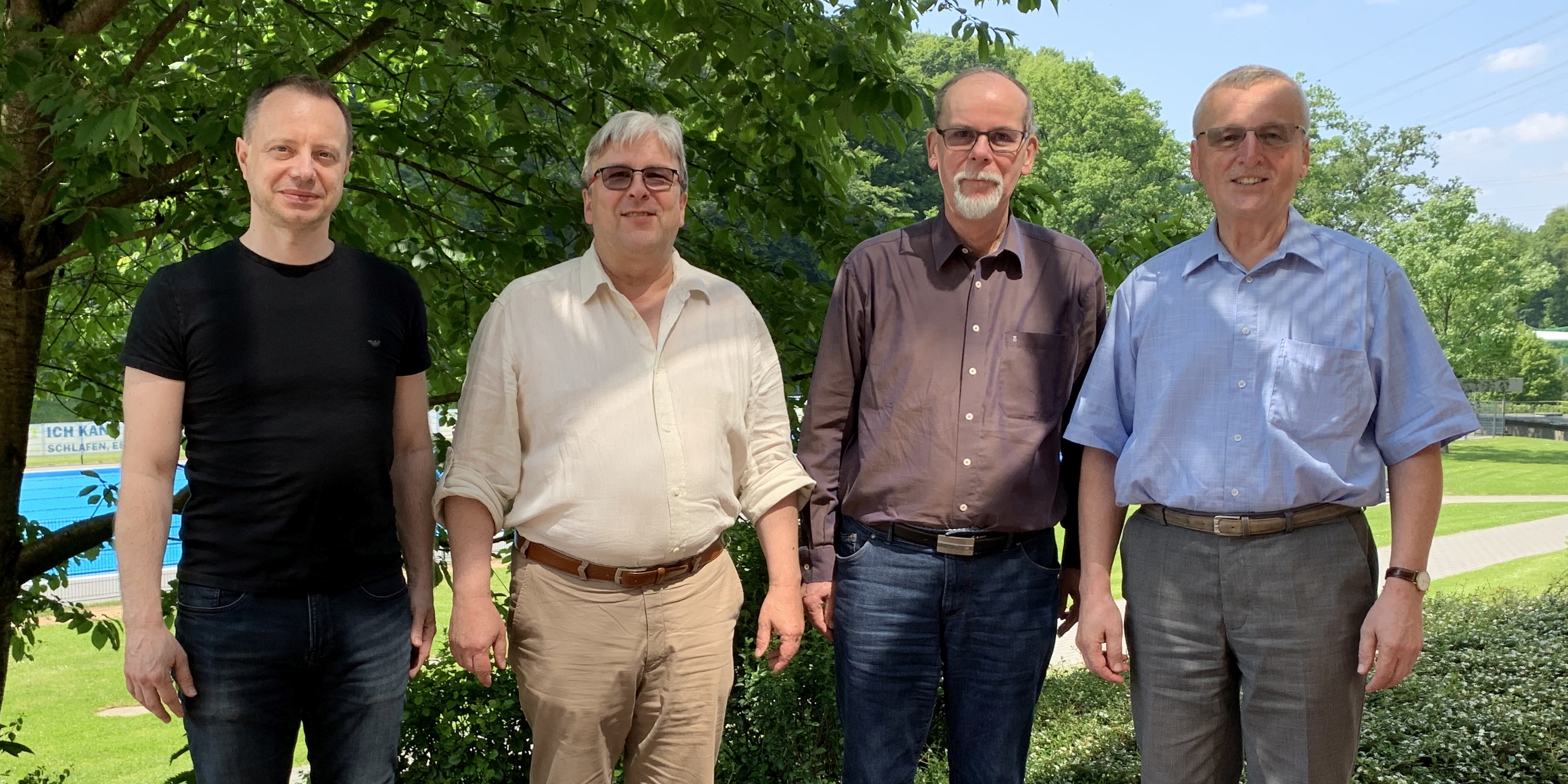
The picture shows (from left to right): Michael Haslau (newly elected treasurer) and the re-elected founding board members Friedhelm Doell (webmaster), Michael Wieneke (managing director and secretary) and Thomas Löbbering (Chairman and editor).
The general meeting was enriched like every year by phatelic lectures:
– Martin Bechstedt explained to the participants the stamp project de ArGe with the stamps still in use after 1944/45.
– Thomas Löbbering reported on the TALLINN N (for outgoing mail) and TALLINN S (for incoming mail) censorship stamps used in Estonia, which were even re-cut in 1949.
– Martin Bechstedt reported informatively on the 1922 De-Jure edition of Lithuania.
– Hannes Westendorf asked for stamped covers 1862–1875 from the Baltic States in order to be able to research his next article even more intensively.
– Finally Friedhelm Doell presented the administrative reform in Estonia 2017, to which the Work Aid No. 1 has also been published.
The ArGe members receive detailed information about the general meeting with BALTKUM No.7, which will go to print in June.
The Administrative Reform in Estonia 2017
The first own publication of the ArGe Baltikum has been published as auxiliary guide No. 1 on the topic The administrative reform in Estonia 2017.
The author Friedelm Doell uses numerous evaluations of official documents to introduce the goals and measures of the administrative reform and describes the changes in territory associated with the reform, mergers of municipalities (with details of all post offices and post points as of 3.12.2018 and their changes since 6.3.2018) and changes in place names. The effects on the postmarks used are shown: so far, there are no postmark changes that can be traced back to the administrative reform of 2017!
A4 format. 30 pages. 5 tables. 4 colour illustrations. The auxiliary guide is available as a PDF file on this web. You will find it – like all future publications – in the menu under Publications.
Exhibition successes of the last weeks
The following members of the Arbeitsgemeinschaft Baltikum e.V. exhibited successfully in the past weeks (in chronological order, further successes in 2018 see results of EstEx 2018 in Tallinn):
At the Word Stamp Exhibition Thailand in Bangkok from 28.11.–03.12.2018 exhibited
| Exhibitor | Country | Exhibit | Award |
|---|---|---|---|
| Hannes Westendorf | Luxembourg | Postal History of Estonia during the Russian Period | 92 Points, Gold |
| Oliver Hanschmidt | Estonia | Railway Post Offices (TPOs) in Estonia 1919–1944 | 83 Points |
| Kaido Andres | Estonia | University of Tartu 1632–2012 | 85 Points |
| Kaido Andres | Estonia | Coat of arms stamp Estonia 0.15 ruble issue | 86 Points |
At the International Philatelic Exhibition ITALIA 2018 in Verona 23-25.11.2018 Wilhelm van Loo scored 87 points in the literature class with his exhibit Postverkehr Kurland 1944-1945 and thus gold. See also our news archive from September 2016.
At the International Stamp Exhibition in rank 1 and bilateral exhibition Germany – Israel FELBA 2018 in Fellbach (Germany) 16.–18.11.2018 there was gold for another Arge member:
| Exhibitor | Country | Exhibit | Award |
|---|---|---|---|
| Jehoshua Eliashiv | Israel | Postal History of the Latvian Airmail 1921–1940 | 87 Points, Gold with Honorary Award |
At the National Stamp Exhibition "100 Years of Independence" of Estonia, Latvia and Lithuania at the Postal Museum in Meiro, Tokyo (Japan) 02.-04.11.2018, an exhibition without competition, our member Hirotaka Araki participated with 4 exhibits:
| Exhibit | see also |
|---|---|
| Lithuanian postal history 1895–1943 | |
| The Japanese diplomat Chiune Sugihara, savior of 6,000 Jews | Article "Chiune Sugihara – Gerechter unter den Völkern" in BALTIKUM 05/2017 pages 59–60 |
| Registered mail items in Lithuania 1889–1996 | News article from November 2018 about the exhibitionThe exhibit won Gold at the 68th National Japanese Stamp Exhibition 2018. |
| Christmas stamps – Letters and special postmarks of Lithuania 1994–2017 |
Congratulations to all exhibitors!
Stamp project "Further use from 1944/45" started
The ArGe Baltikum has decided to collect information on the stamps used from 1944/45 onwards of the Socialist Soviet Republics of Estonia, Latvia and Lithuania. The aim is to create an inventory of further used stamps, which can be published afterwards. The systematics offers the possibility to extend the period under consideration later on to other stamp types and periods of use, if necessary. The following stamps are searched for:
- postmarks of the independent republics of Estonia, Latvia and Lithuania 1918–1940
- postmarks of the first Soviet occupation 1940/41
- postmarks of the German occupation of Ostland 1941-44/45
Examples are shown in the illustrations:
Figure 1: TALLINN N 15 XI 48, H/O (Hurt/Ojaste) 644:57 shows the stamp TALLINN *N* from the time of the independent republic Estonia 1918–40. It was used unchanged from 1944 until at least 21 XII 48.
Figure 2: Kretinga, Fu (Fugalewitsch) K245a shows the stamp Kretinga from the time of the first Soviet occupation of the Baltic States 1940/41, here Lithuania. It was used unchanged from ...1944 until at least 9.3.49. The stamps to be examined for this period include both newly introduced stamps in Latin transcription and the respective national language and newly introduced bilingual stamps in Latin-Cyrillic or Cyrillic-Latin transcription.
Figure 3: Riga Meza Parks b, HvH (Harry von Hofmann) ... shows the bilingual stamp RIGA-KAISERWALD (RIGA–MEZA PARKS) b from the time of the German occupation of the Ostland 1941-44/45, here general district Latvia. The stamp was apted and used from August 1944 until at least 24.3.45.
Figure 4: Foreign postcard from Tallinn to Porvoo / Finland, 15 XI 48th The postmarks should be recorded as such on the one hand. On the other hand, they are to be examined for their changed use. An example is the postmark TALLINN N in Fig. 4, which was introduced in 1939/40 during the independent republic to devaluate postage stamps, but from 1944 onwards also served as a covert censorship stamp on foreign mail under Soviet occupation.
Please forward your stamp finds to Martin Bechstedt at the e-mail address: This e-mail address is protected against spambots! JavaScript must be activated in order to view it. Please scan cancellation cutouts with 600 dpi, complete mail pieces with 300 dpi. Those collectors who do not have an internet connection with scanner can also send a photocopy of their finds to the following postal address: Martin Bechstedt, Roggenkamp 80a, D–22941 Bargteheide, Tel.: +49 (0)4532 282528.
- The standard postmarks (apted or not apted) should be examined: Fist-, hand-roll- and machine stamps including railway-, air- and ship postmarks.
- No interest exists in secondary postmarks like "Postage", "Back", "From the mailbox" etc.
- For identification purposes, the postmark numbering of the original postmark is used, as already applied in the respective manuals of Estonia, Latvia and Lithuania. So please use the corresponding manual number of the original postmark at Hurt / Ojaste, von Hofmann and Fugalewitsch / Bechstedt if possible.
This invitation for cooperation is explicitly also valid for collector friends who are not (yet) members of the ArGe Baltikum!
We will probably present first results at the general meeting on May 24–26, 2019 in Hennef!
Stamp exhibition "100 years independence of the Baltic States" in Tokyo
ArGe Baltic States members Hirotaka Araki and Yuki Itabashi organized the Baltic States stamp exhibition at the philatelic museum in Meijero, Tokyo on November 2 –4 on the occasion of their 100th anniversary.
A total of 848 sheets were shown in Tokyo = 35 frames equipped on both sides. Hirotaka Ataki alone, along with 6 other exhibits on Estonia, Latvia and Gdansk with a total of 432 sheets, contributed 4 frames of his own on Lithuania with a total of 208 sheets to the exhibition, among them his "The Postal History of Lithuania, Illustrated by Registered Mail 1989-1996", which was awarded gold at the 68th All-Japanese Exhibition in 2018 – the ArGe congratulates him warmly!
Remarkable are the dates of the exhibition in 3 different formats: The day stamp shows with "2.XI.18· 8 -12" the old UPU format, the impression on the cover the modern American format "2018.11.2-4".
The special postmark of the Japanese postal service used – as announced – a motif from the Estonian weaver/smith edition.
With "30. 11. 2" it shows a very special Japanese format: November 2 in the 30th year of the reign of the 125th Tennō (Emperor) Akihito (he will abdicate in favor of a son on April 30, 2019).The date of all official occasions in Japan, both governmental and business, is calculated according to the duration of the reign of the current emperor.
See the announcement of September 25, 2018.
Regular Estonian stamp personalized
At the International Stamp Fair Sindelfingen 2018 the Estonian Post – as in the last years often – presented a personalised self-adhesive stamp, with a nominal value of 1,40 € for a standard letter within Europe.
Nothing unusual so far – but this time new is the fact that the stamp bears the image of a jackal, which can already be seen in the same design (with a slightly different background) on the regular 65 cent issue of 18.10.2018 for an Estonian domestic standard letter!
Whether the whole thing has merely economic reasons (multiple use of the design) or something else is behind it – in any case, it draws attention to the postal use of motifs beyond collecting by catalogue. An interesting idea!
2. ArGe Literature exhibition Sindelfingen 2018
At the 2nd ArGe–Literaturausstellung Sindelfingen 2018 in 1st rank from 25 –27.10.2018 we competed as a working group with national competitors within the Bund Deutscher Philatelisten e.V. with our website www.arge-baltikum.de and the magazine BALTIKUM.
Among 34 working groups with 87 exhibits, both our website with 80 out of 100 points and our magazine with 83 out of 100 points achieved Large Vermeil.
Only one out of 15 presented websites was rated Gold and only six out of 23 magazines. This puts us in an excellent position as the "youngest" of the participating consortia, and gives us the incentive to become even better.
Gerhard Dreher: Stamp Manual Postal area Oberbefehlshaber Ost
Volume 8 of the series of publications of the Bund Philatelistischer Prüfer e.V., Stempelhandbuch Postgebiet Oberbefehlshaber Ost, is a worthy addition to the seven previous volumes. Author and publisher Gerhard Dreher has created his opus magnum on 312 pages, DIN A4, multicoloured and linen-bound with the stuff of a standard work.
After a short post-historical and historical introduction, the book is divided into a total of nine chapters. In addition to the stamp editions, Chapter 1 includes instructions on the proper use of the manual, valuation guidelines and references. Chapter 2, with 141 pages the most comprehensive section, lists the postmarks from Alt-Auz to Wolmar. Chapter 3, with 71 pages, deals with the censorship stamps of the post offices in the Ob. Ost postal area as well as other censorship and information stamps on postal surveillance.
Chapters 4 to 9 cover the following individual aspects:
- Telegraphic cancellations
- Destinations
- Kowno fortress and garrison post
- Delivery services, in particular Riga City Post and Vilnius Citizen Post
- Railway postmarks
- Types of dispatch and usage.
The book concludes with a highly interesting statistical analysis of the postmark and item material available to the author, which allows both reliable conclusions to be drawn about the frequency of cancellations and mail items as well as their composition by type of dispatch. We can be curious about the supplementary volume announced for 2021!
Where there is light, there is shadow. The author's tendency to speculate, to use flippant language and sometimes imprecise terms is not good for the opus. A final editing by a third party could have remedied this. This applies to individual aspects of structure, layout and standards of scientifically correct citation.
Format A4, 312 pages, numerous colour illustrations, hardcover with thread stitching, published in: Publication series of the Bund Philatelistischer Prüfer e.V., Volume 8, Price: 60 Euro (plus postage). Source: Gerhard Dreher, Ober-Savo-Ring 1, D–21522 Hohnstorf (Elbe), Tel. +49 (0)4139 699544, E-Mail: This e-mail address is protected against spambots! JavaScript must be activated in order to view it.
Stamp Exhibition Baltic States Tokyo 2.–4.11.2018
Our two ArGe members Hirotaka Araki and Yuki Itabashi are organizing a conference from 2 –4 November 2018 in the Philatelic Museum Tokyo a stamp exhibition to mark the 100th anniversary of the independent Baltic States of Estonia, Latvia and Lithuania.
About 40 frames are planned.
The post office in the Tokyo district of Toshima will use a special postmark with the motif of the Estonian Weaver and Smith issues from 1922/1928.
Tallinn International Philatelic Exhibition 13.–15.07.2018
EstEx 2018, in short, is behind us, a fantastic experience for everyone: visitors, exhibitors and organisers. The latter, the friends of the International Estonian Philatelic Society (IEPS) under its president Peeter Sgirka and his team, deserve great praise for the masterful preparation and implementation! From the first to the last minute, they radiated joy in philately, high expertise and friendly composure to master the organisational imponderables of a philatelic exhibition.
EstEx 2018 was held on the occasion of the 100th anniversary of the Republic of Estonia, the issue of the first Estonian stamps and to deepen philatelic contacts around the Baltic Sea. It successfully continued the tradition of Baltica exhibitions known from past decades, now under the patronage of the Federation of European Philatelic Organizations (FEPA).
Within three days, the international jury of nine jurors from eight nations evaluated a total of 131 exhibits in almost 600 frames and eleven different exhibition classes: a gigantic achievement in itself, managed with a light touch under the leadership of its president Jonas Hällström from Sweden.
None of the six members of the Arbeitsgemeinschaft Baltikum e.V. from Germany will therefore regret having taken the summer trip to the Baltic States and experiencing ESTEX 2018 as a philatelic highlight. Numerous friendships with Estonian and international collector friends could be refreshed and expert discussions with examiner colleagues from Scandinavia and the Baltic States could be held.
Picture credits: REFS
The following exhibits from members of the Arbeitsgemeinschaft Baltikum e.V. were awarded by the jury of EstEx 2018
| Class | Name | Exhibit | Awarded |
|---|---|---|---|
| 2.1 Traditional Philately | Jaan Erik Roots, Norway | The first ten years 1918–1928 | 91 Points, Gold |
| Michael Siegumfeldt, Danmark | Estonia 1918–1940 | 85 Points, Large Vermeil | |
| 2.2 Postal History | Hannes Westendorf, Luxembourg | The postal history of Estonia during the Russian period | 95 Points, Gold; Grand Prix National EstEx 2018 |
| Jaan Erik Roots, Norway | Estonia 1918 | 91 Points, Gold; Special price „Material“ | |
| Oliver Hanschmidt, Estonia | TPO Cancellations in Estonia 1918–1940 | 83 Points, Vermeil | |
| Timo Verho, Finland | Post in, to and from Estonia in pre-philatelic times | 75 Points, Large Silver | |
| 2.7 Modern Philately | Kaido Andres, Estonia | The Estonian coat of arms edition – 0,15 ruble | 86 Points, Large Vermeil |
| 2.11 Literature | Martin Bechstedt, Germany | The date stamps of independent Estonia since 1991 | 75 Points, Large Silver |
Congratulations to all exhibitors and continued success in expanding their collection!
The attentive reader may have noticed two things: Our Arbeitsgemeinschaft Baltikum e.V. is truly international, six nations are represented in eight exhibits. Germany appears only once, there is still "air to the top".
The next opportunity to do so will be at STOCKHOLMIA 2019 from 29 May to 2 June next year. Book in time. Stockholm is always worth a trip, but cheap only for early bookers.
More detailed information on EstEx 2018 can be found in the net under www.estex2018.eu and on STOCKHOLMIA 2019 under www.stockholmia2019.se.
Martin Bechstedt: The dated postmarks of independent Estonia since 1991
Collecting new Estonian postmarks is easy and actually a pure joy, as there are almost always very clean, legible postmarks, which are available in large numbers. With a little luck and knowledge you can also find rare pieces.
Since 1991 until today four time periods can be distinguished:
1. The initial period with re-used, adapted or reworked Soviet postmarks
2. From about mid-1994 the use of steel stamps of the Reiner company from Germany with the country designation EESTI
3. Following the privatisation of the Estonian Post Office on 1.1.2002, the use of similar steel stamps with the inscription AS EESTI POST and some provisional large-format rubber stamps, the shape of which deviates significantly from the norm
4. Since 2013, as part of the restructuring of the Estonian postal service, post offices have increasingly been relocated to shopping centres and postmarks with the words 'KANDEKESKUS', 'KANDEPUNKT' or 'CENTRUM' have been used, sometimes without any recognisable place names
This manual for the first time attempts to classify the postmarks according to 11 different postmark types and describes them with numerous illustrations. Extensive tables cover known postmarks by code letter since 1.10.1991 until now. A short table at the end of the book helps to identify the postmarks.
Size 20 x 27 cm. 213 pages. Numerous illustrations b/w and color, hardcover with thread stitching, Martin Bechstedt Verlag 2018, Price: 34,50 € plus postage. Source: Martin Bechstedt Verlag, Roggenkamp 80a, D-22941 Bargteheide, E-Mail: This e-mail address is protected against spambots! JavaScript must be activated in order to view it.
General Meeting May 4-6, 2018
The members of the ArGe Baltikum met again this year at the Sportschule Hennef to swap and chat, to the board and editorial meeting, to the general meeting and to entertaining lectures. 14 members from three countries accepted the invitation; unfortunately, several members had to cancel due to illness.
General Meeting
The minutes of the general meeting will be printed for the members in the Baltic States No. 5. An essential formal supplement to the statutes adopted in 2017 is a unanimously adopted rules of procedure for the ArGe Baltikum.
Lectures
Highly interesting lectures enriched the meeting:
Michael Wieneke reported on airmail in Estonia 1920–1940 and showed his gold awarded exhibition collection.
Ruud van Wijnen initiated the project "Soviet Temple from 1944", which will keep the ArGe busy in the near future.
Thomas Löbbering presented overprints on the topic "OSTLAND – real or fake?"; there is also an article on this topic in the Baltikum Nr. 5 and in the "Philatelie", issue May 2018.
And finally, Martin Bechstedt presented his "Stamp Handbook Estonia", which was created over many years of work and went into print shortly afterwards.
Exhibition successes 2017
In 2017 members of the Arbeitsgemeinschaft Baltikum e.V. achieved the following exhibition successes and prizes:
The Rhein-Ruhr-Posta, a national exhibition in rank 3, took place from March 31st – April 2nd 2017 at the Forum Leverkusen (Germany).
| Exhibitor | Country | Exhibit | Award |
|---|---|---|---|
| Michael Wieneke | Germany | Airmail in Estonia 1920–1940 | 81 Points, Gold |
The ESTONA XXV was held in the newly built Eesti Rahva Muuseum (Estonian Folk Museum) in Tartu (Estonia) from July 14 – 16, 2017.
| Exhibitor | Country | Exhibit | Award |
|---|---|---|---|
| Romet Kreek | Estonia | Estonian Stamps Private Perforations | 73 Points, Silver |
| Timo Verho | Finland | The First Independence of Estonia 1918-1940 | 81 Points, Vermeil |
| Oliver Hanschmidt | Estonia | Travelling Post Office postmarks in Estonia 1919-1944 | 83 Points, Vermeil |
| Kaido Andres | Estonia | Tartu University – Evolution trough the Centuries | 86 Points, Groß-Vermeil |
| Jaan Roots | Norway | Provisional Cancellations 1918-1920 | 91 Points, Gold |
In 's Hertogenbosch (Netherlands) the Multilaterale Hertogpost 2017 took place from August 25 – 27, 2017.
| Exhibitor | Country | Exhibit | Award |
|---|---|---|---|
| Ruud van Wijnen | Netherlands | Postal History: De Sovjetbezetting van Letland 1940-41 | 78 Points, Vermeil |
The 18th SAIPEX, an exhibition without competition, took place as always in Kawagoe (Japan), 2017 from 22 – 26 September.
| Exhibitor | Country | Exhibit |
|---|---|---|
| Hirotaka Araki | Japan | Definitive Stamps of Re-Independent Lithuania 1994-2006 (3 frames) |
During the International Stamp Fair from 26 – 28 October 2017 in Sindelfingen the Rank 3 exhibition MAMA 2017 took place.
| Exhibitor | Country | Exhibit | Award |
|---|---|---|---|
| Karl Lukas | Germany | Stamps issued in the Crown currency from 1992-2005 | Vermeil |
As part of the Monacophil 2017 the presentation of the Christoph Gärtner Award 2017 took place on 30.11.2017.
The ArGe Baltikum achieved with its magazine "Baltikum" No. 1–3 and its internet presence "www.arge-baltikum.de" the 5th place (of 35 participating international philatelic associations).
See special report in our web archive.
The Postal Museum Tokyo (Japan) hosted the 5th EUROPEX, an exhibition without competition, from December 9 – 10, 2017
Congratulations to all collector friends on their exhibition successes!
Cooperation of ArGe Baltikum with HBG and ROSSICA
Already in 2017 the ArGe Baltikum started a cooperation with the Dutch Filatelistengroep Het baltische Gebied: the members of both associations will get access to the latest issues of the "Baltikum" or the magazine "HBG". The corresponding access information was sent to all members of the ArGe Baltikum with e-mail addresses via e-mail newsletter.
Since January 2018, there is now also a cooperation with the ROSSICA Society of Russian Philately: the digital editions of the "Baltikum" and the "Rossica" (in English, available from 2016) are mutually made available to members. Here too, members of the ArGe Baltikum receive an access link for downloading via e-mail newsletter. There you can first have a look at the cover pictures or tables of contents and then consider downloading the whole issue (download size between 18 and 72 MB).
The Rossica editions are for the personal use of the ArGe-Baltikum members only; all others must unfortunately purchase them from Rossica itself or become a member there. Maybe this would be one more reason to join the ArGe Baltikum as member?
For further ROSSICA publications please refer to their Bookshop, where many books and also the earlier ROSSICA editions can be purchased.
The ROSSICA Society of Russian Philately is one of the largest philatelic associations in the world with over 1000 members. It deals thematically with Russia, the Soviet Union and its successor states and former republics, including the Baltic countries. May the exchange of literature between our communities inspire philatelic exchange!
C.G. Award 2017
The Arbeitsgemeinschaft Baltikum e.V. achieved an excellent 5th place in the international competition for this year's C.G. Award.
In four categories – Print Media, Digital Media, Youth, Promotion of Young People and Public Relations and Innovative Ideas – our working group scored a total of 83.67 points, leaving the majority of competitors behind.
The 5th award ceremony of the International Sponsorship Award for Philately of the Auction House Christoph Gärtner took place on November 30, 2017 at the Monacophil 2017. The prize money in the amount of 600 € will be donated to the society's treasury.
For details see cg-award.com/2017_en.php.
German Commissioner for EstEx 2018 in Tallinn
The EstEx 2018 from 13.-15.07.2018 met with great interest in the BDPh area. Numerous interested parties have contacted me; some exhibitors have already handed over their registrations. Today I would like to compile everything "worth knowing" with a first information letter and give an outlook on the further planning. This will then be supplemented by subsequent information letters and the latest status will be passed on.
General and Homepage http://refs.ee/en
EstEx 2018 is an exhibition to which all countries bordering the Baltic Sea are invited. From the BDPh point of view, it is considered to be the number 1 exhibition and is recognised as such for exhibitors. The exhibition will have a total of about 500 frames. The homepage contains important data and information about the exhibition.
Bulletin
Two weeks ago a bulletin was printed, which gives an overview of the exhibition as an excerpt from the contents of the homepage and contains the exhibition conditions. Copies are available at the BDPh office and can be requested there. But it is easier to download them directly here:
Exhibit registration procedure
The closing date for registration with the commissioner stated by the organizer is 01.02.2018. The accepted exhibits will be announced no later than 15.04.2018. The registration form provided can be filled out on the PC and does not require the signature of the exhibitor. I will release the registrations and then hand them over to the organizer together with the enclosed documents.
Commissioner fee
The commissioner fee is 10.00 € per exhibit frame (multi-frame exhibits) or exhibit (1-frame exhibits and literature). This covers the entire handling including on-site support.
Planned procedure, travel dates
From today's point of view it is very likely that the exhibits will be run via the BDPh office in Bonn. So I would fly from Frankfurt to Tallinn on 11.07. and from Tallinn to Frankfurt on 15.07., non-stop with LOT. The hotel already booked in Tallinn is the Radisson Blue Sky.
The transport of the exhibits will have to be predominantly "checked baggage", as LOT does not allow or offer "excess cabin baggage" on the flights in question. Depending on the amount of the transport costs, it will have to be decided whether there will be a cost allocation or not.
If several exhibitors require insurance, we can arrange a collective policy through HWI. This should be agreed upon as soon as possible after announcement of the accepted exhibits.
If someone is already planning a trip to Tallinn, it would be helpful to have the appropriate information. It might be possible that exhibitors or visitors also book "my" LOT flights, so that the logistics are somewhat easier.
If there are special questions or need for further information, please do not hesitate to contact us. Of course I am looking forward to further exhibit registrations.
Thomas Höpfner, Commissioner EstEx 2018, Lindenstraße 29, 85661 Forstinning, Tel. 08121 253880
News from the club
On September 12, 2017, the Siegburg District Court entered the Arbeitsgemeinschaft Baltikum as a registered association (e.V.) in the local register of associations. Thus, the legal merger process of the Arbeitsgemeinschaft Estonia e.V. with the Forschungsgemeinschaft Lithuania e.V. and the Forschungsgemeinschaft Lettland im BDPh e.V. is successfully completed.
In order to promote the next generation of philatelists, the Arbeitsgemeinschaft Baltikum e.V. offers pupils, trainees and students up to the age of 25 a free youth membership. It corresponds to the basic membership, i.e. the magazine "Baltikum" is delivered online. Prerequisite is the membership in the Deutsche Philatelistenjugend or in the BDPh. For more details see become a member.

We have significantly expanded the content of our website: Under "Media" and "Catalogues and Literature" you will find recommendations on Estonia, Latvia and Lithuania as well as selected historical maps of the entire Baltic States. Philatelic libraries, postal companies and auction houses that have special offers for the Baltic States have also been included. Please contact the webmaster for additions!
The first questions for our "Questions + Answers" page have arrived. Check back regularly, maybe you will find one or the other answer that is interesting for you or you have a question yourself?
Web of the ArGe: Installation of a question page and a sitemap / search function

Answers page, which you can access from the menu at the top under Collection Area - Questions + Answers.
In addition there is now a sitemap (="overview map") of the web. On the one hand, this is an XML file that makes it easier for search engines to find all the contents of the web, so that you can find them better via the search engines. But perhaps more interesting for you is that the contents of the sitemap are also available as a web page, which gives you a very quick overview of all displayable and downloadable contents of the web presence.
You will find the link to the sitemap at the very bottom, in the area with black background color, next to the imprint and the terms of use. So you can access the sitemap directly from every page via link.
We would be pleased if you give us a feedback (by e-mail), if something like this is useful for you or what we can still improve on the web!
P.S. (Change 26.07.2017:) The search function is now a Google-supported overall search in all web pages and all PDFs provided on this website. The "price" for this – as usual with the Google search engine – is some advertising links at the beginning of the result display. Simply scroll down, then you will find all links to the pages and documents on or in which the entered search terms occur in the ArGe-Web.
P.P.S. Some more statistics: at the moment (04.06.2017) the web consists of 63 pages with about 35,000 lines of HTML code (excluding CSS stylesheets and Javascripts), almost 1,100 image files and 326 (downloadable) PDF files.
General Meeting May 20-21, 2017
The decision of the Higher Regional Court of Celle of 15 January 2017, according to which the merger of registered associations must be accompanied by a notary public at the general meeting and not at the law firm, resulted in the working group signing the merger documents of 31 October 2015 again with the same content at this year's general meeting by a local notary public.
Thanks to the expert preparation and execution, the signing procedure for the Arbeitsgemeinschaft Estonia e.V., the Forschungsgemeinschaft Lithuania e.V. and the election of the new board of the Arbeitsgemeinschaft Baltikum e.V. took less than two hours.
Signing of the merger agreements
General meeting of the ArGe Baltikum
The newly elected executive board reported on the development of the Arbeitsgemeinschaft Baltikum during the past twelve months. Not only were 31 new members gained, but the average age of our members fell from over 70 to under 50 years of age.
All seven BPP association auditors are members of our community (five active and two "retired").
After the legal part of the "extraordinary" general meeting(s) the philatelic as well as cosy part of the meeting followed with over 20 participants, interesting lectures, swapping & chatting as well as the cosy barbecue evening "outboard".
Make a note of the date of the upcoming general meeting at the Sportschule Hennef: 4 –6 May 2018
Some impressions of the day of the general meeting (all pictures: Thomas Radzuweit):
Online archive complete
Since the beginning of 2015, one aim of the internet presence of the ArGe Baltikum was to make the newsletters of the predecessor communities available to the public as a digital archive.
This goal is now – as far as legally possible – achieved: All issues of the 'Eesti Post' (newsletter of the former ArGe Estonia, the 'Lituania' (newsletter of the former ForGe Lithuania) and the 'Het baltische Gebied (HBG)' (newsletter of the Dutch Filatelistengroep of the same name) are now available for download (HBG without the last 3 issues).
Of course you can also download all issues individually. Please go to our media page!
Unfortunately, there are copyright obstacles for the 'Philatelia Baltica' (newsletter of the former ForGe Latvia) to make them available as PDF files. However, issues no. 93 – 137 (last published number) are available in printed form. For more details see here.
New examiner Michael Haslau
The Bund Philatelistischer Prüfer (BPP) has appointed new examiners at its 2017 general meeting. Among them is ArGe member Michael Haslau, who is now also active in the Memel testing area alongside Tobias Huylmans. We congratulate them warmly!
His test areas are: Memelgebiet Mi.-Nr. 1- 237, local edition German Administration for the Memelland 1939 (Mi.-Nr. I-IV) and predecessor Mi.-Nr. V84 II - V115
Tobias Huylmans has expanded his testing areas. In the postal area Ober Ost, the emergency issues Libau, Mi. No. 1 - 6A + B, Ia/b and the issues of the 10th Army's national messenger post, Mi. No. 1 - 3
Thus now already 5 BPP examiners for the collection area Baltic States (4 active, see examiner pages and one no longer active examiner, Wilhelm van Loo for Kurland) are members of the ArGe!
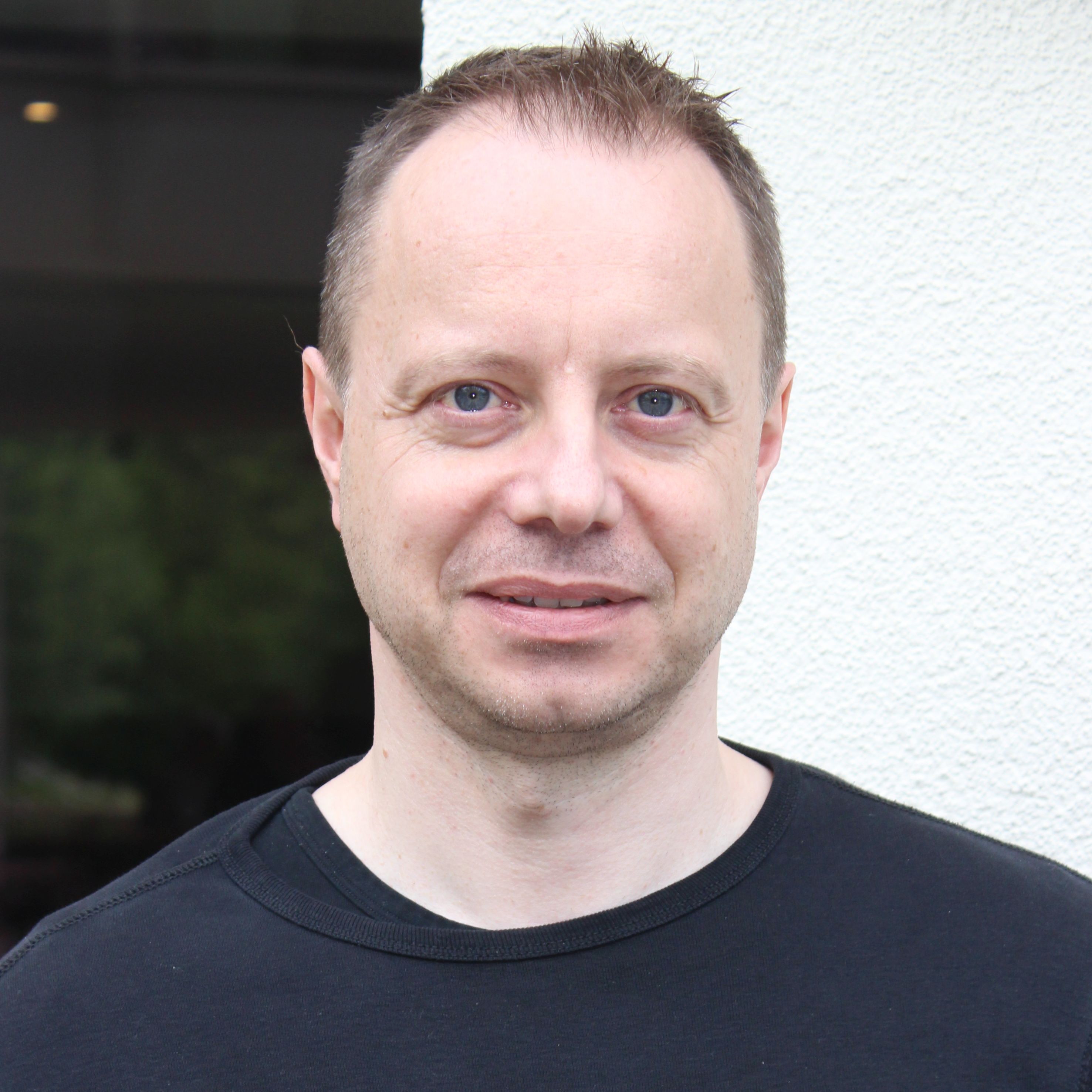
Michael Haslau
(Picture: Thomas Radzuweit)
Estonia 2017 in Tartu
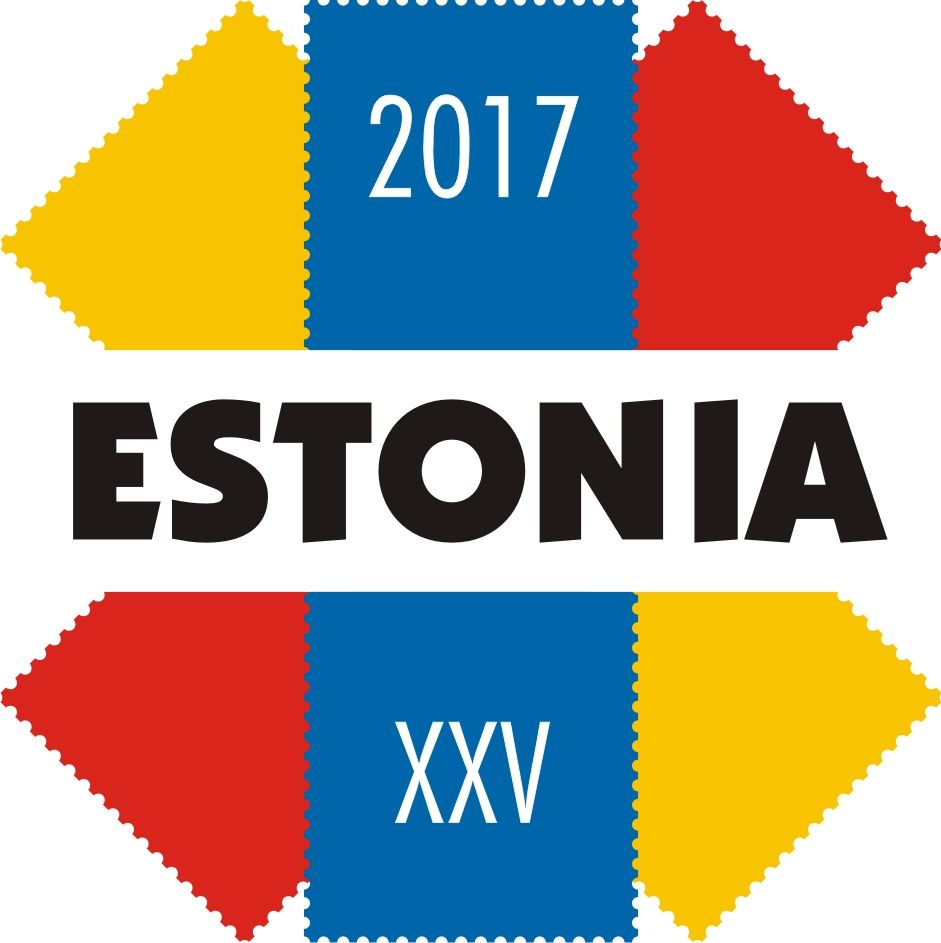
The International Estonian Philatelic Society (REFS) ESTONIA organises the philatelic exhibition "Estonia 2017" from 14 –16 July 2017 in the recently opened new building of the National Museum in Tartu.
Information on the exhibition is available here in English.
The closing date for registration is 20 May 2017 - the registration form can be found with this link: .
EstEx 2018 in Tallinn
The Estonian International Philatelic Society (REFS) ESTONIA has completed its preparations for the EstEx philatelic exhibition on 14 –16 July 2018 to mark the 100th anniversary of the proclamation of the Republic of Estonia in 2018 and has booked the exhibition venue in Tallinn.
Further information is now available on the website www.estex2018.eu both in Estonian and English.
The bulletin with the exhibition regulations is called up by clicking on the picture.
Honour to whom honour is due – exhibition successes 2015/16

Airplane "Curtis Jenny" at the World Stamp Show in New York – once not "inverted" (upside down), but in original
The World Stamp Show - New York 2016. The maximum possible. The Non Plus Ultra of the exhibition 2016 attracted 864 exhibitors and 250,000 visitors on 21,000 m² of exhibition space between 28 May and 4 June, including collector friends of our Arbeitsgemeinschaft Baltikum im BDPh e.V. More on this below.
Not forgetting about New York, we want to show non-competitive exhibitions, exhibitions of the 1st to 3rd rank on a national or international level with direct reference to Estonia, Latvia and Lithuania. Here, too, remarkable things have happened, for example in Japan, Estonia and Germany.
First of all I would like to mention our new member Hirotaka Araki from Kawagoe, Japan, certainly known to the Lithuanian collectors among us as an editor (monthly magazine Kawagoe Yushu), author, trainer and exhibitor, who is as persistent as he is knowledgeable:
| place | land | exhibition | exhibit | award |
|---|---|---|---|---|
| Taipei | Formosa | 30. International Asian Exhibition (24.–28.4.2015) | The history of registered mail in Lithuania | Vermeil |
| Kawagoe | Japan | National exhibition without competition | Lithuanian stamps with animal species on the WWF Red List | |
| Tokio | Japan | National competition exhibition on the occasion of the 25th anniversary of the Baltic States' regained independence | – Postal History of the re-established independent Republic of Lithuania 1988–1994 – Postal history of registered mail in Lithuania 1989–1996 – Lithuanian stamps with the angel and Vytautis motif 1990–1993 |
|
| Kawagoe | Japan | National exhibition without competition | – The definitive stamps of Lithuania 1991–1993 (part 1) (48 sheets) – The special Christmas postmarks of Lithuania 1994–2015 (32 sheets) – The postal reuse of first day covers and envelopes with special postmarks in Lithuania (16 sheets) |
Especially for the Estonian collectors among us, the XXIV Estonian Exhibition in Pölva from 8th –10th July 2016 offered an opportunity to face the international competition. The following collector friends did so:
| exhibitor | land | exhibit | award |
|---|---|---|---|
| Jaan Roots | Norway | Postal censorship in Estonia (5 frames) | 93 Points, Gold |
| Timo Verho | Finland | Estonian postage stamps (5 frames) | n.n. Points |
| Kaido Andres | Estonia | reconstruction edition 1941 (2 frames) | 84 points |
It should also be mentioned that our non-member Taaved Pöld, Estonia, took the cake at the exhibition with 94 points and gold plus honorary prize with his really unique exhibition collection Otepää (Odenpäh) 1941 (6 frames)!
The Stamp Handbook Lithuania by Martin Bechstedt and Vitautas Fugalevičius presented in February by the ArGe Baltikum was submitted by the former Research Association Lithuania as a contribution to the 1st ArGe literature exhibition of the BDPh in Sindelfingen 2016 and received a Vermeil award there.
But now to Big Apple, the World Stamp Exhibition 2016 in New York. Here we would like to take the opportunity to present exceptionally an exhibit of one of our members, which does not deal with the Baltic States. The following collector friends took part in the worldwide competition of philately (in order according to the official list of exhibitors)
| sector | exhibitor | land | exhibit | award |
|---|---|---|---|---|
| Postal History | 321 Vesma Grinfelds | USA | Provisional devaluations of Latvia 1919–1921 | |
| Aerophilately | 426 Yehoshua Eliashiv | Israel | History of air mail in Latvia 1921–1940 | |
| Thematic philately | 469 Kaido Andres | Estonia | The Philatelic Footprint of Dorpat University 1632–2012 | 84 Points |
| 498 Thomas Radzuweit | Germany | The Development of the United Nations | 85 Points | |
| Single-frame exhibits | 593 Vesma Grinfelds | USA | Latvian stamps with the motif of the rising sun 1919 | |
| Literature | 125 Hubert Jakobs, Kaido Andres et.al. | Estonia | Catalogue Estonian errors on stamps and plate errors 1991–2014 | 77 Points |
Congratulations to all collector friends on their exhibition successes!
ArGe Baltikum members in Sindelfingen 2016
Numerous association, board and editorial members of the ArGe Baltikum met for a joint visit to the stamp fair in Sindelfingen from 27 to 30 October 2016. Friends from the Netherlands, Lithuania and of course Germany refreshed old contacts and made new ones. The successful hunt for treasures, the contact with friends and the common association work found themselves to a "round" meeting. The rooms for 2017 are already reserved.
LTR.: Ruud van Wijnen, Vygintas Bubnys, Torsten Berndt, Michael Wieneke, Martin Bechstedt, Karl Lukas, Thomas Löbbering
The photo was taken by our club member Wilhelm van Loo (who is therefore not on the picture).
"Minu mark" of AS Eesti Post in Sindelfingen and Taipei 2016


AS Eesti Post 2016 has issued its own personalized stamp (Estonian "minu mark" = my stamp) for the stamp fairs in Sindelfingen and Taipei. The € 1.40 franking is sufficient for a standard letter to a foreign country in zone 1, e.g. from Estonia to Germany, and the € 1.50 franking to a foreign country in zone II, i.e. from Estonia to China (the fair staff takes the stamps and "throws them in the mailbox in Estonia").
„Air Policing“ and „Persistent Presence“ – protective shield in the Baltic States
Since 2004, i.e. for twelve years, the German Air Force has been involved in protecting the airspace over the Baltic States within the framework of NATO's integrated air defence. This is necessary because Estonia, Latvia and Lithuania have armies and navies, but no air force.
For three months at a time, about 150 men and women, soldiers and civilian staff, from over 20 locations in Germany are currently deployed to and from the Ämari airbase in Estonia. "Enhanced Air Policing Baltic States" (VAPB) is what NATO and the Federal Ministry of Defence call this operational obligation. From September to December 2016, the tactical air force squadron 74 (LwG 74) from Neuburg on the Danube will perform this task.
German field post offices are not on site. However, members of the contingents have the opportunity to stamp their private letter post with a decorative postmark before delivering it franked to the civilian post office in the country of deployment. The decorative postmark of the LwG 74 has lost the "S" in "Verstärktes Air Policing Baltikum".
Not only the German Air Force participates, but also units and formations of the German Army and the army base when it comes to the protection of the NATO area. At its autumn meeting in 2014, i.e. two years ago, NATO decided to intensify the exercise activity and rotating presence of units in Poland and the three Baltic states under the heading "Persistent Presence".
German troops are currently deployed in the following locations in the Baltic States:
| country | Location(s) | German place names |
|---|---|---|
| Lithuania | Panevežys | Ponewesch |
| Latvia | Adaži | Neuermühlen |
| Estonia | Pärnu and Tapa | Pernau and Taps |
The same general conditions apply to "Persistent Presence" in postal terms as to "Enhanced Air Policing Baltic States". The participating formations can use the same decorative stamp for their private mail, which is supplemented by the name and coat of arms of the association used. The location of the deployment site in Estonia, Latvia and Lithuania is roughly indicated by the black cross on a white background, the emblem of the German Armed Forces. There are no German field post offices on site.
The postal items owe their existence to the joint initiative of Bernhard Fels, editor for Lithuania of the Arbeitsgemeinschaft Baltikum im BDPh e.V. (Baltic Working Group in the BDPh), and Armin Blase, chairman of the independent Bundeswehr Philately Working Group. The latter can be reached via Armin Blase, Postfach 1116, D-24331 Eckernförde. Further information on the missions can be obtained on the Internet from the relevant Bundeswehr press and information centres.
Wilhelm van Loo: Postal traffic Kurland (Courland) (1944–1945)
What challenge can a collecting area with only five published stamps offer the philatelist? Is there any degree of difficulty that a collector, maybe even an examiner, can face? Such questions testify to an ignorance of the conditions of the field postal service as they actually existed in the Latvian Kurland in the period in question.
For the German Heeresgruppe Nord, later to become Heeresgruppe Kurland, resisted all Soviet attacks in six "Kurland Battles" from October 1944 to March 1945. The surviving documentations of the field post at that time tell of this. Wilhelm van Loo, who has been working on this subject for 40 years, not only describes the military situation at that time, the way the field post offices worked, identifies the troops and units that were actually there at certain times at certain places on land, at sea and in the air, he also takes into account the civilian mail and thus the use of the "Ostland" and "Kurland" stamps with overprint.
For more than 30 years he researched questions about the authenticity of every "Kurland Express Letter" he came across, i.e. the expensive stamp halves, which are in great demand among collectors and dealers alike and were often presented to him for examination. He was able to prove many forgeries, falsifications, especially forgeries of stamps and subsequent devaluations with real postmarks. The identification of addressees and senders, their locations and that of their units enabled Wilhelm van Loo to discover such manipulations. In this book, the seventh volume in the series of publications of the Bund Philatelistischer Prüfer, he not only summarizes his life's work as a specialist examiner of the association. He also opens up all his sources of contemporary and post-historical information and shares his knowledge with the reader.
Thanks to his virtuoso mastery of photographic possibilities, he presents many things enlarged in detail and also brings maps, sketches and statistics to life. Even the connoisseur can expect an abundance of information that is almost overwhelming, but also revises and summarises previous knowledge in a new way. Some previous judgements will have to be revised.
This is probably also true for the fate of individuals, which Wilhelm van Loo presents as an example in a concluding chapter "On Dying in Courland and 'Survival' in Russian Captivity". While the Heeresgruppe Kurland had held out until the unconditional surrender of the German Reich on May 8, 1945, and was even considering plans for its own "Freikorps", on May 10, 1945, some 200,000 Germans and Latvians were taken prisoner of war by the Soviets. Wilhelm van Loo commemorates their fate with touching documents, but also the researchers and examiners of the Kurland Philately, who made philatelic history in their field.
Format 21 x 28 cm, 312 pages, numerous colour illustrations, hardcover with thread-stitching, self-published by the author in 2016, price: 32 Euro (plus 5 Euro domestic postage). Reference: Wilhelm van Loo, Aussemstr. 26, D-52066 Aachen, e-mail: info@wvanloo.de. Delivery: Phil*Creativ Verlag, Vogelsrather Weg 27, D-41366 Schwalmtal, Tel. +49 (0)2163 49760, Fax: +49 (0)2163 30003, E-Mail: faktura@philcreativ.de.
Web of ArGe online, Baltikum No. 1/2016 published
On 10 May 2016, the website of the ArGe Baltikum was opened to the public. Webmaster Friedhelm Doell wrote: "It is of course not perfect yet, many topics are still in work (e.g. presentation of some collection areas, literature, travel reports and more). But nevertheless we have decided to release what is already there for everyone - and that is quite a lot!". The travelogues have been added to the web in the meantime.
Comments on this were among others "Wonderful, great news", "Thank you for your work", "Thank you very much! Today I'll see what's up", "Congratulations on the new site!", "My highest respect and congratulations to the author of our website. It has exceeded all my expectations."
Only a few days later, on 15 May, Naltikum No. 1/2016 went to press.
There was also great praise for this: "Perfect in appearance and execution. My congratulations to the editorial team", "The presentation is good" and – in addition to a thematic review – "But I would like to expressly say that I very much admire your commitment and that of your comrades-in-arms over the past 18 and more months and can only view it with the highest respect! That was and is a lot of work – unfortunately, 'one' always has too few comrades-in-arms", "I have now read through this great work and have only to express my astonishment at what you have achieved.
Both publications were received with great approval in the countries from which our members come. Even a Japanese stamp newspaper reported in early September about them, which was reported by our member Hirotaka Araki!
ATTENTION – Fake test marks!
My fellow examiners from Estonia and Norway, Kalev Kokk and Jaan Roots, informed me that their test marks had been counterfeited and were being sold on the Internet on Estonian stamps of the 1919 edition of the Eesti Post.
The fake test marks are significantly larger than the originals. They are affixed to the back of the marks in positions that do not comply with the regulations of the relevant testing organisation.
The illustration shows a selection of fake certification marks on – of course – also fake imprints of the 1919 edition of Eesti Post.
Click image to enlargeVideo interviews on Baltic philately
During the Munich 2016 Stamp Fair, our webmaster Friedhelm Doell interviewed two philatelic experts:
Torsten Berndt is chief editor of the Deutsche Briefmarkenzeitung and the Briefmarkenspiegel. He gave information about stamp collecting today, about organisations and financial values in philately.
Thomas Löbbering is chairman of the Arbeitsgemeinschaft Baltikum and informed about the purpose and the activities of the ArGe, possibilities to benefit from it or to contribute to it and how to get in contact with the ArGe.
First general meeting of the merged ArGe Baltikum

The first general meeting of the Arbeitsgemeinschaft Baltikum e.V. after the merger of the former legal entities ArGe Estonia e.V. and ForGe Lithuania e.V. took place on February 13, 2016 in Hennef.
A total of 29 members with personal voting rights, who had come from 5 countries, took part. They unanimously elected Thomas Löbbering as 1st chairman, Michael Wieneke as managing director, secretary and editor, Tobias Huylmans as treasurer and Friedhelm Doell as webmaster. Statutes and rules of procedure of the ArGe were adopted, as well as the contribution rules. The Internet presence with its digital Archive of previous newsletters was presented; expert lectures on Baltic philately and a supporting programme for accompanying persons rounded off the program.
The future general meetings of the ArGe Baltikum will continue to take place in the Landessportschule in Hennef, but no longer on the weekend after carnival, but from 2017 on the weekend before Ascension Day, i.e. 5 weeks after Easter or 2 weeks before Whitsun.
The former chairman of ForGe Latvia (which disbanded on 12 February 2016), Wolfgang Watzke, presented the new chairman, Thomas Löbbering, with a work of art entitled "Together we are strong" and the condition that it be placed on the front table at general meetings.
The previous chairman of ForGe Lithuania, Martin Bechstedt, handed Thomas Löbbering a hand bell as insignia of the chairman.
(Pictures: Thomas Radzuweit)
Expert lectures completed the program.
Martin Bechstedt presented the Lithuania Handbook of Philately and Postal History Part 4 'Postmarks in Lithuania', which he wrote together with Vitautas Fugalevičius, with many new entries compared to earlier publications.
Tobias Huylmans presented his first published handbook of postmarks 1920–1925 of the Memel area, which he supplemented with additional information on places and provided with ratings.

ArGe Baltikum starts with new homepage and extensive archives
The Arbeitsgemeinschaft Baltikum e.V. is currently in its start-up phase - due to the merger of the Arbeitsgemeinschaft Estland e.V. with the Forschungsgemeinschaft Litauen e.V. and personal accession of the former members of the Forschungsgemeinschaft Lettland and the Nederlandse Filatelistengroep 'Het baltische Gebied'. From the very beginning, the website is designed in a responsive design for computers, tablets and smartphones and is equipped with an extensive pool of digitized information of the predecessor societies from the last decades.
The aim of the website is to provide up-to-date information on the entire collection area of the Baltic States: Estonia, Latvia and Lithuania.
"The method is necessary for the investigation of truth."
(René Descartes)The web can be fully operated and displayed with desktop computers as well as tablets and smartphones. The display changes automatically with the available pixel width of the respective monitor.
In order to interest new collectors in the Baltic States, the research reports are also made freely available on the Internet on a large scale.
"Whoever wants others to tell him what they know must tell them what he himself knows. The best way to get information is to give information."
(Niccolò Machiavelli)In order to access the collected results of recent years, no one should first have to visit a philatelic library or contact the ArGe in writing and against reimbursement of printing costs. The newsletters are therefore freely accessible as PDF files - provided they are older than 1.5 years. Only the special publications published as books are only available in printed form for the time being; they are usually also of such a size that book binding is necessary to keep and read them appropriately.



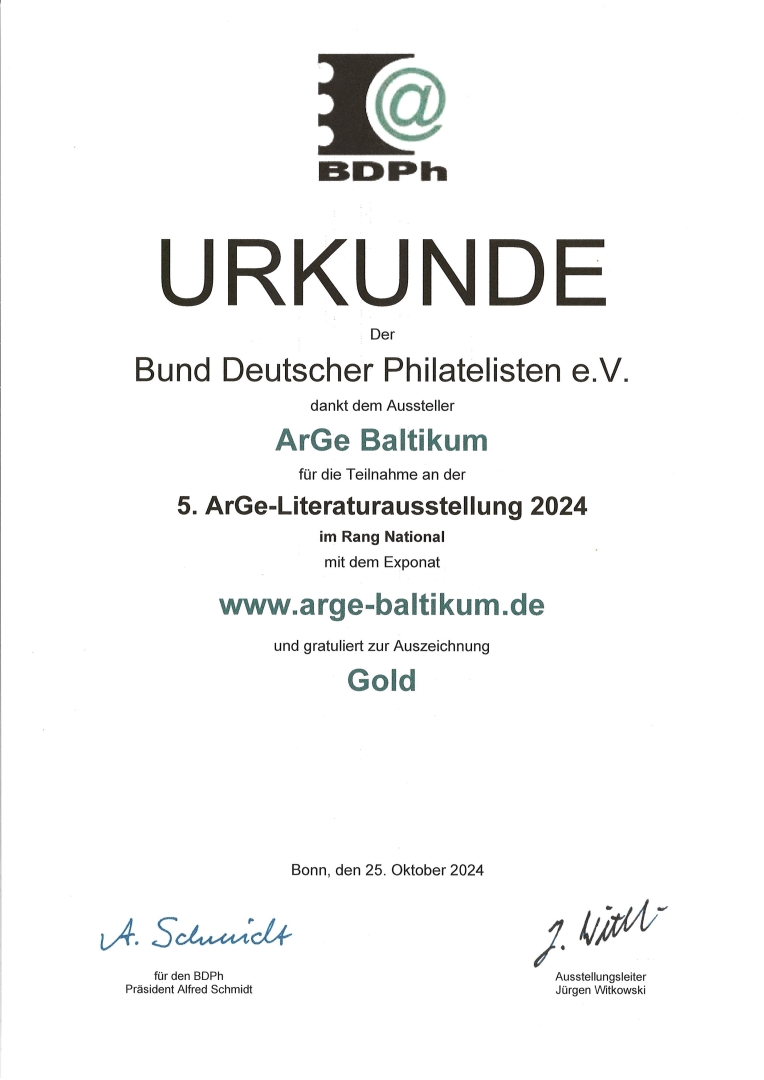
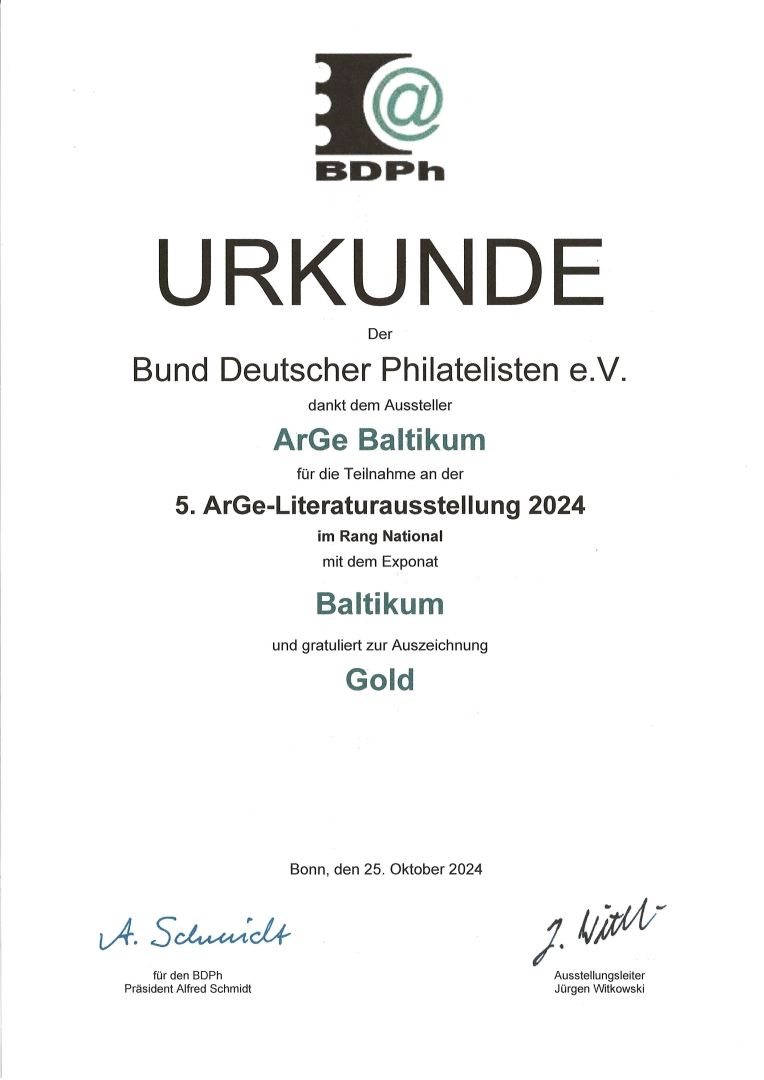
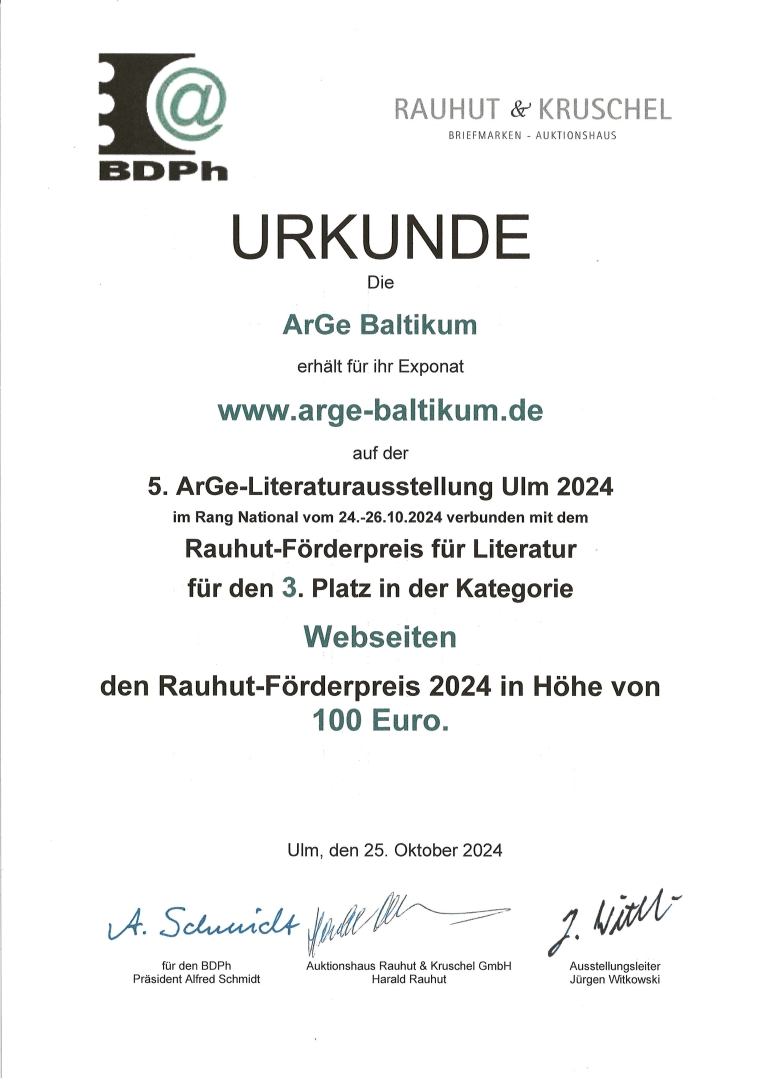


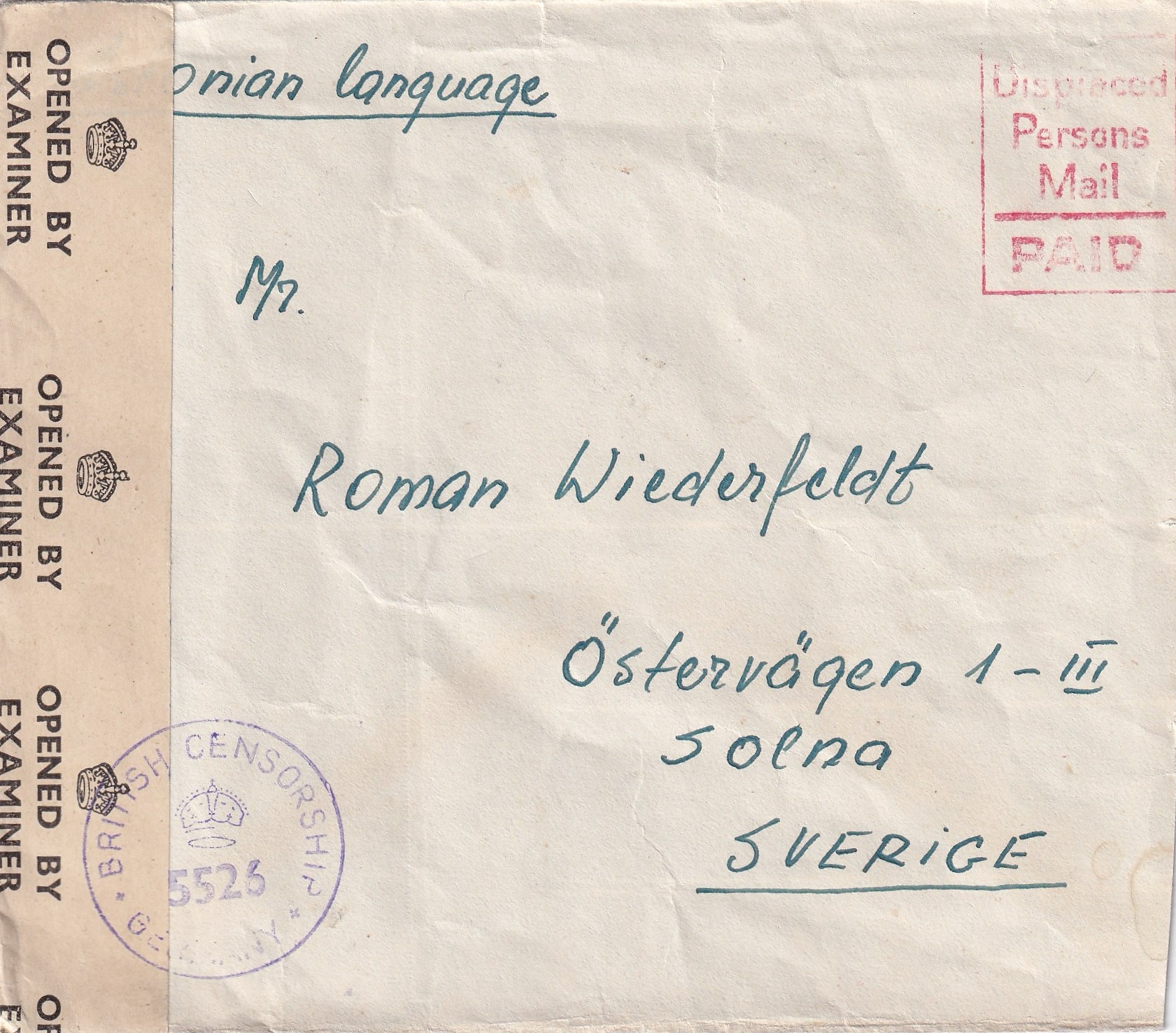
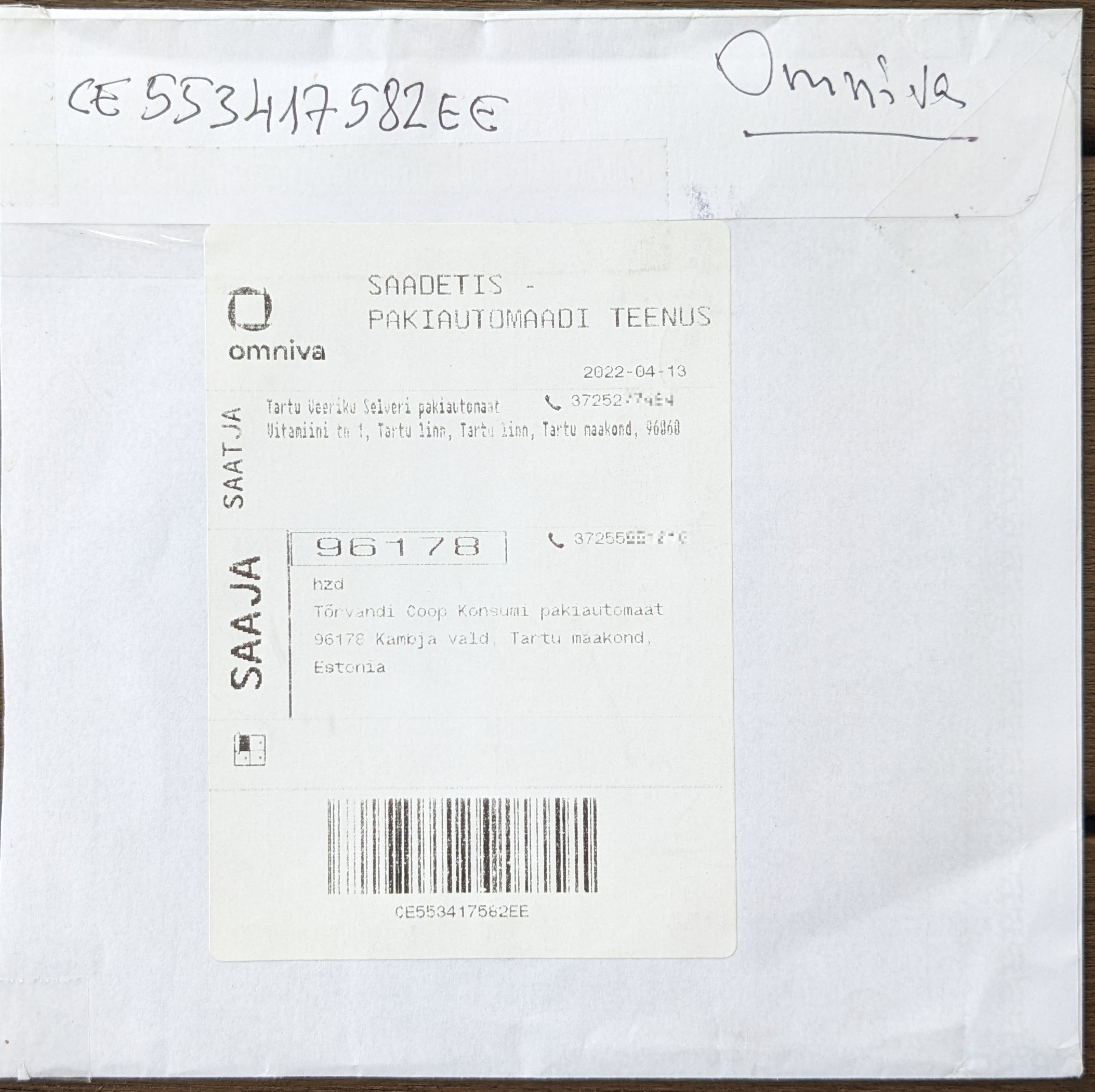
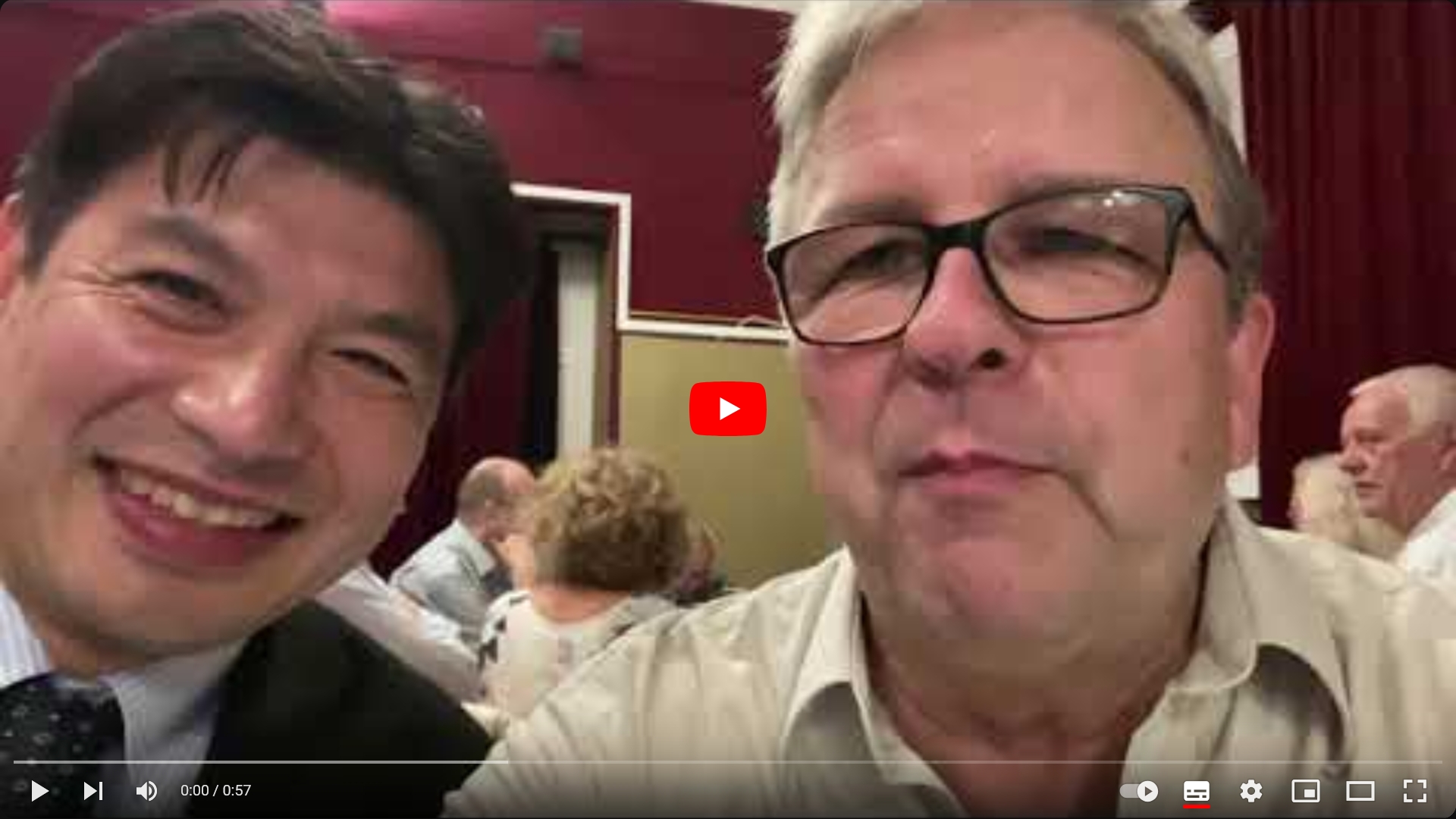
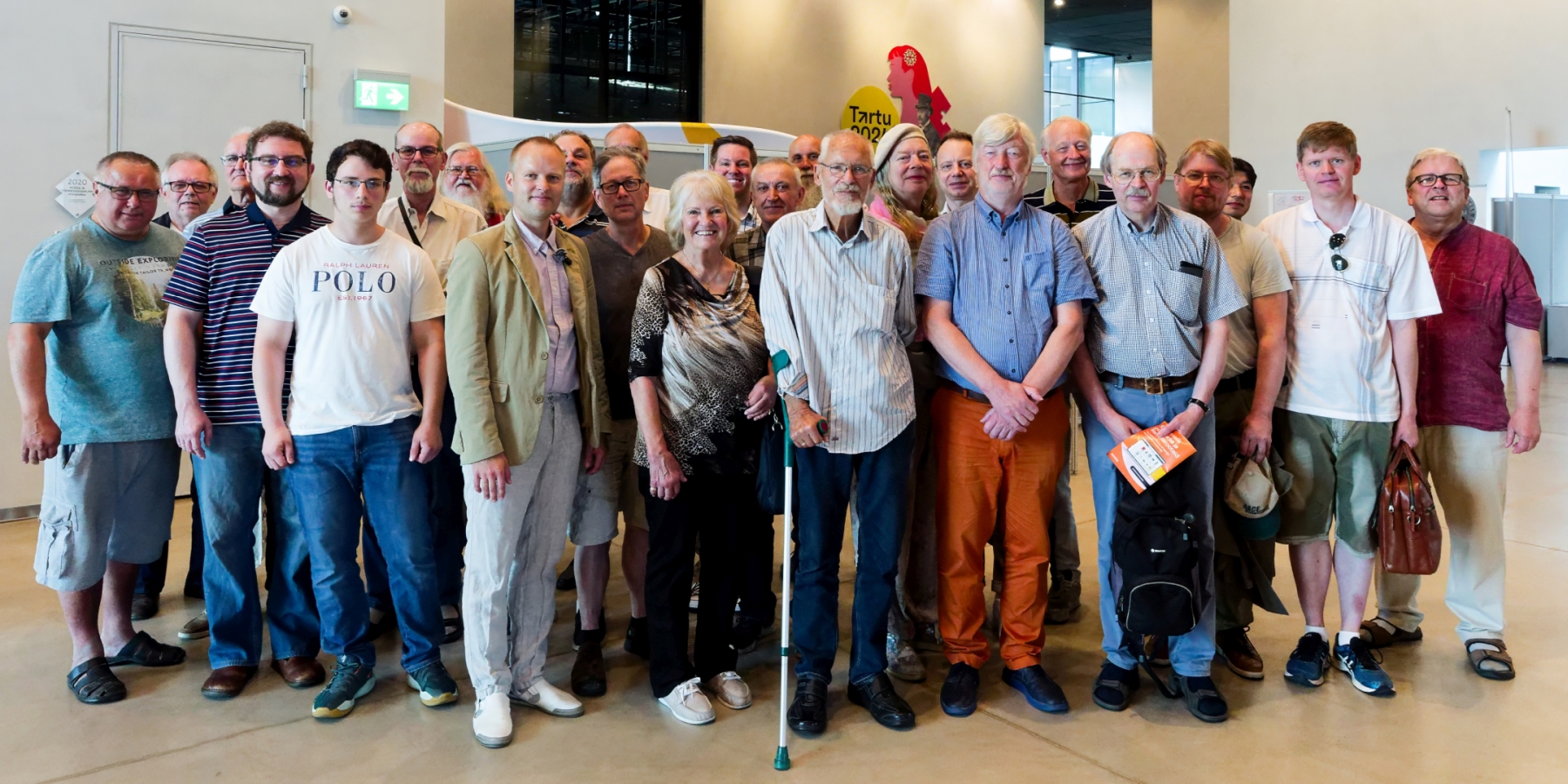
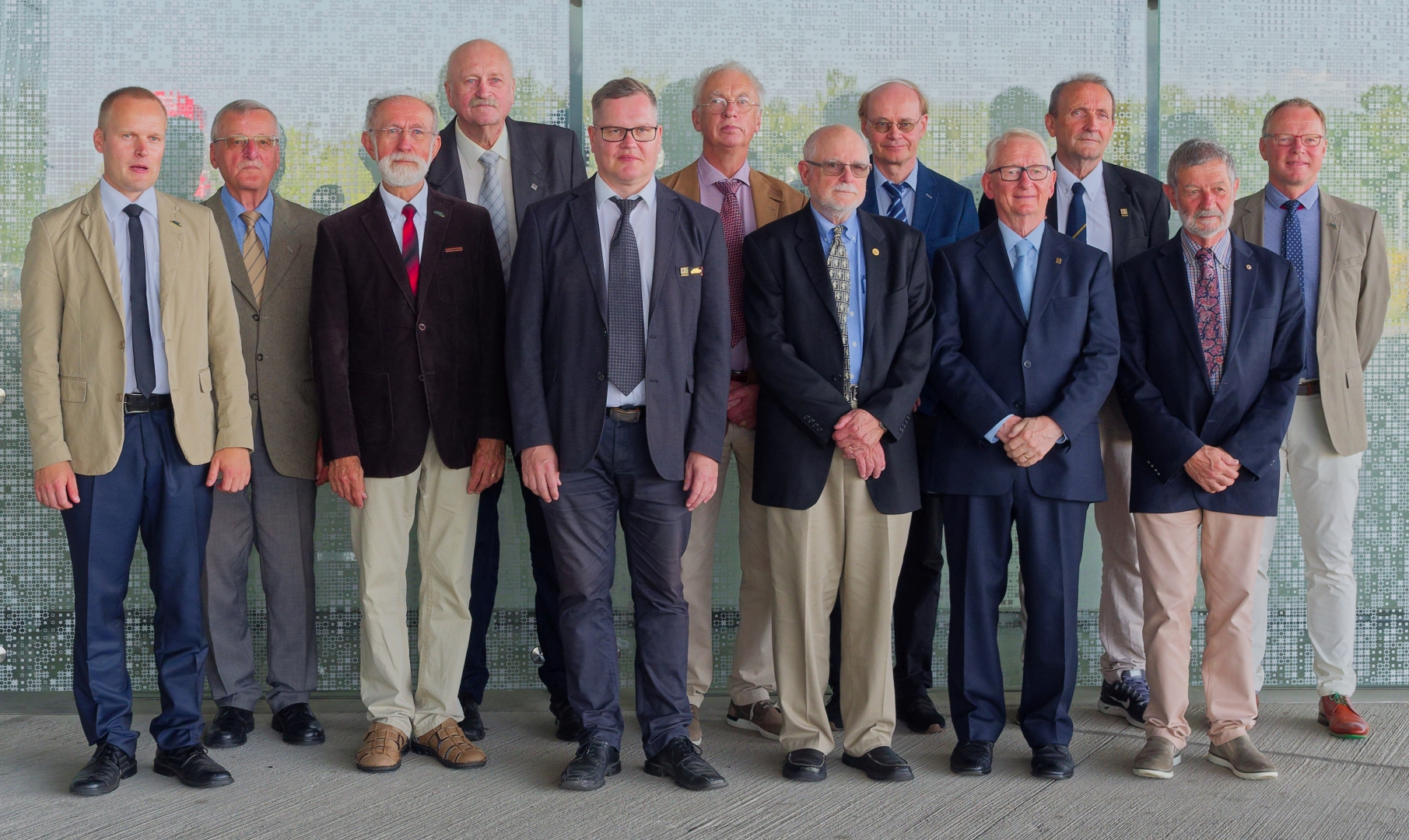
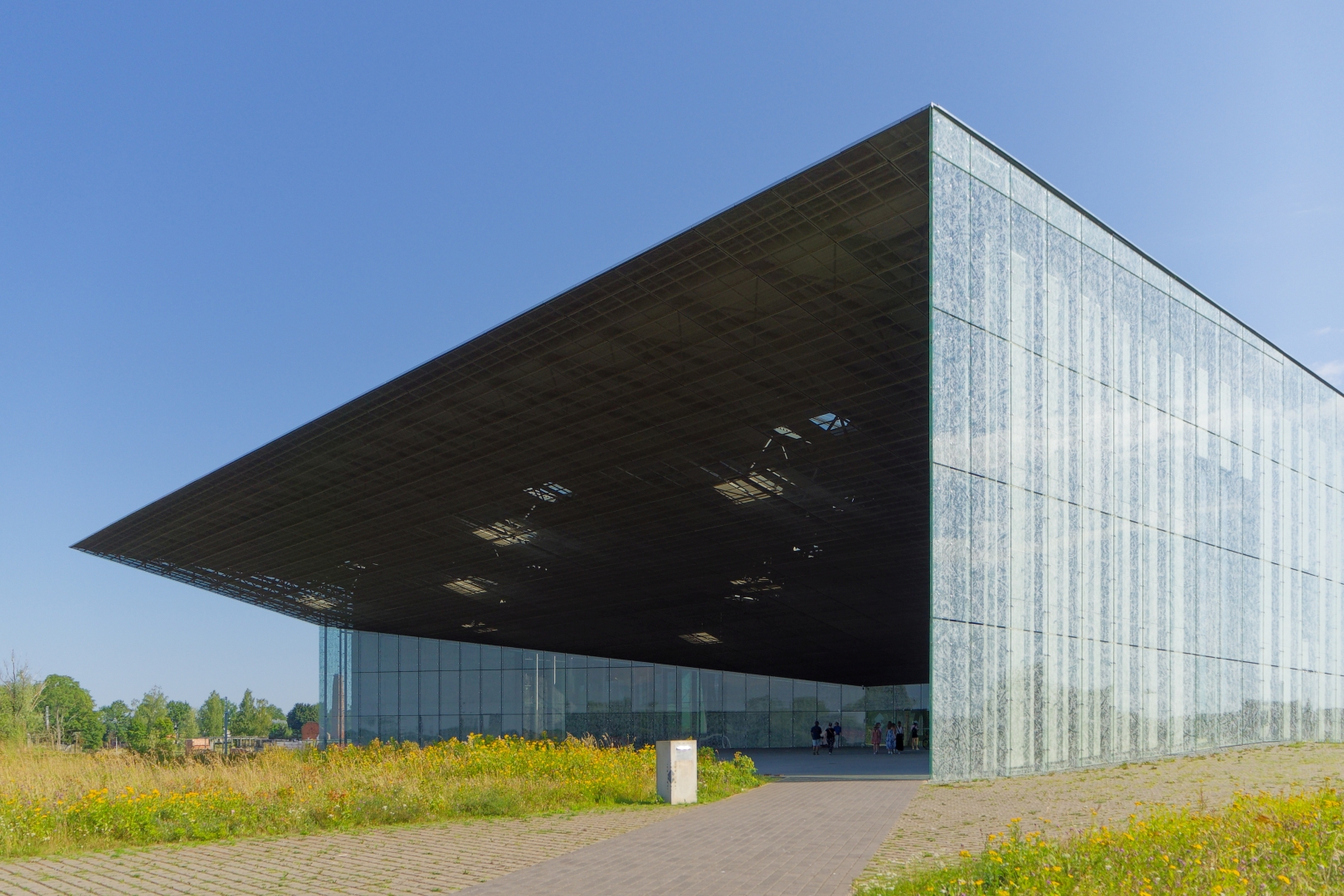




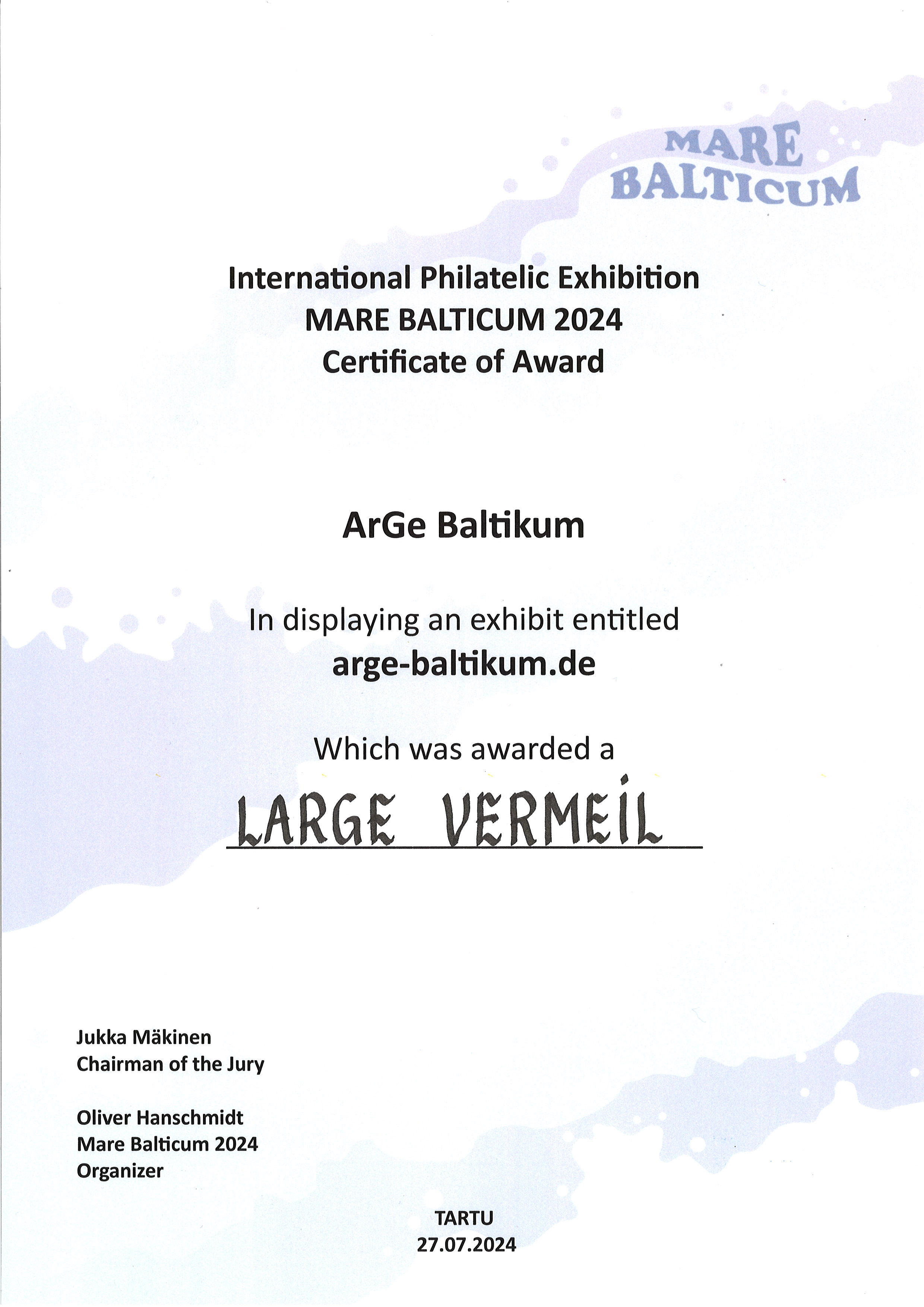

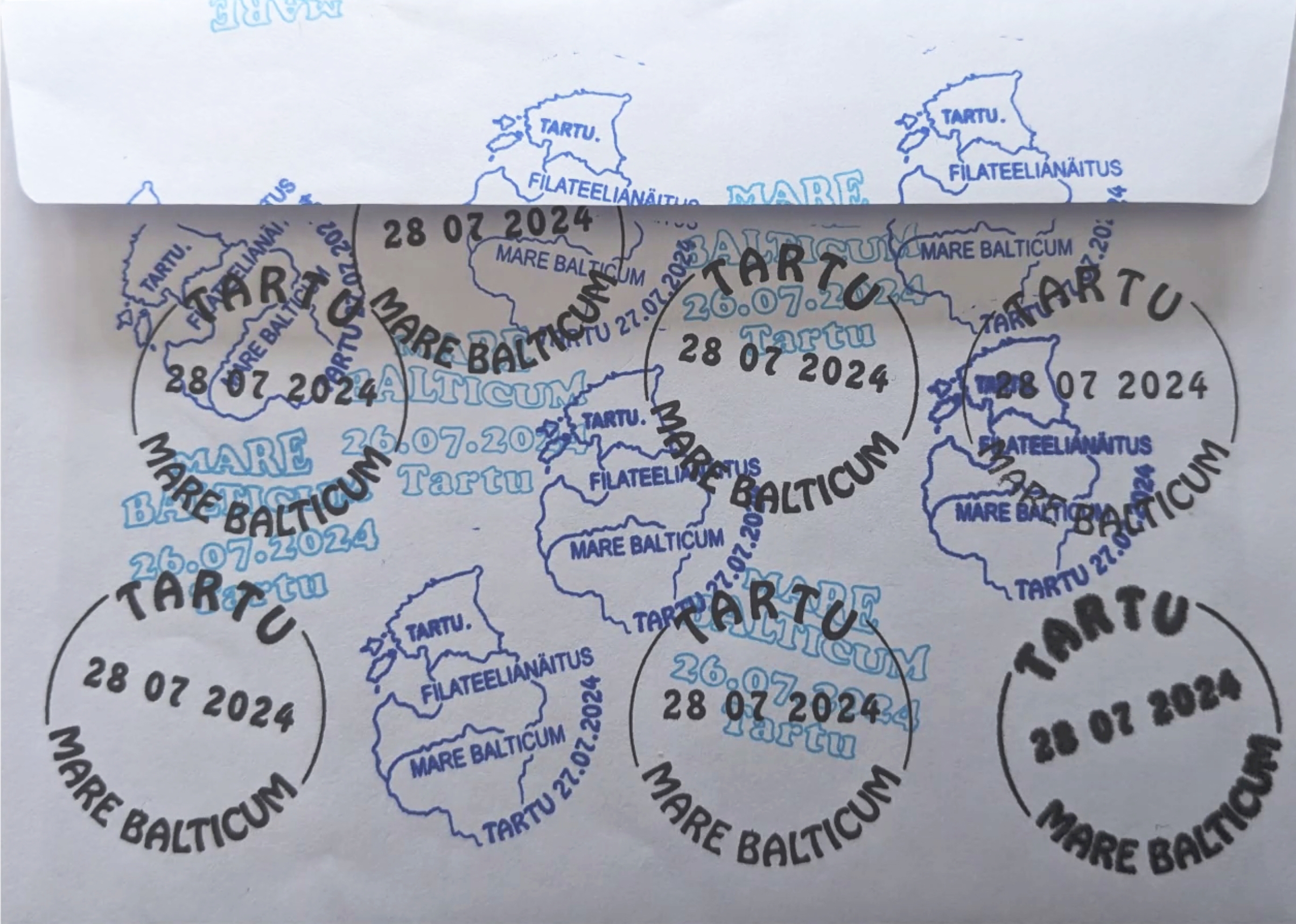
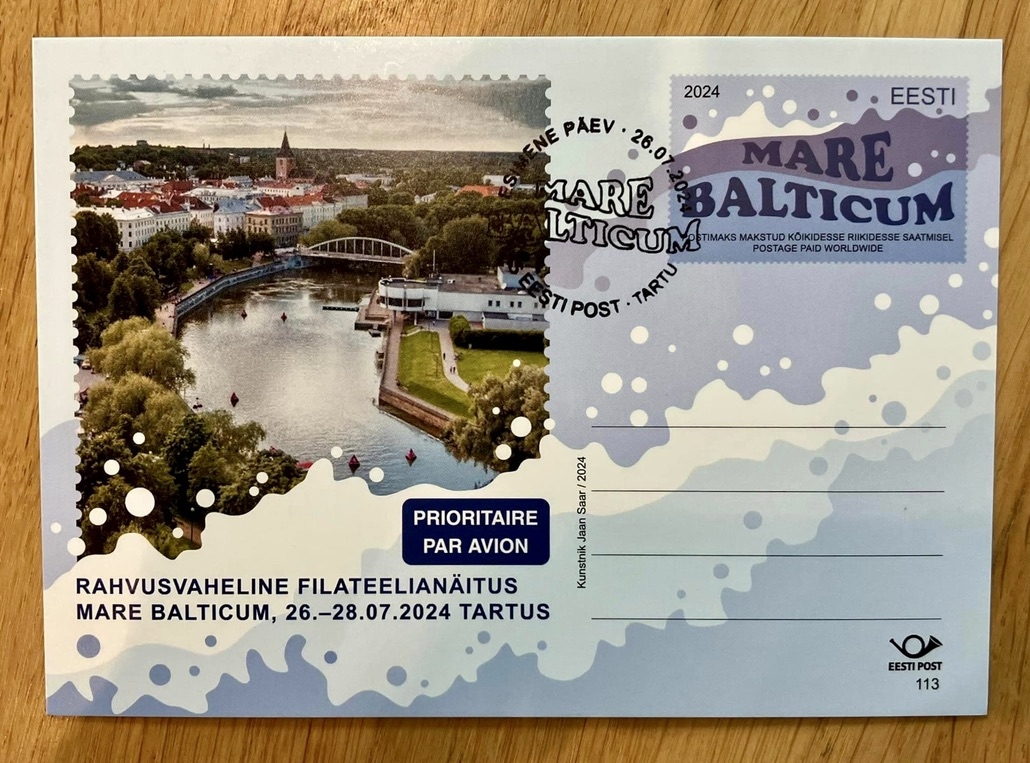



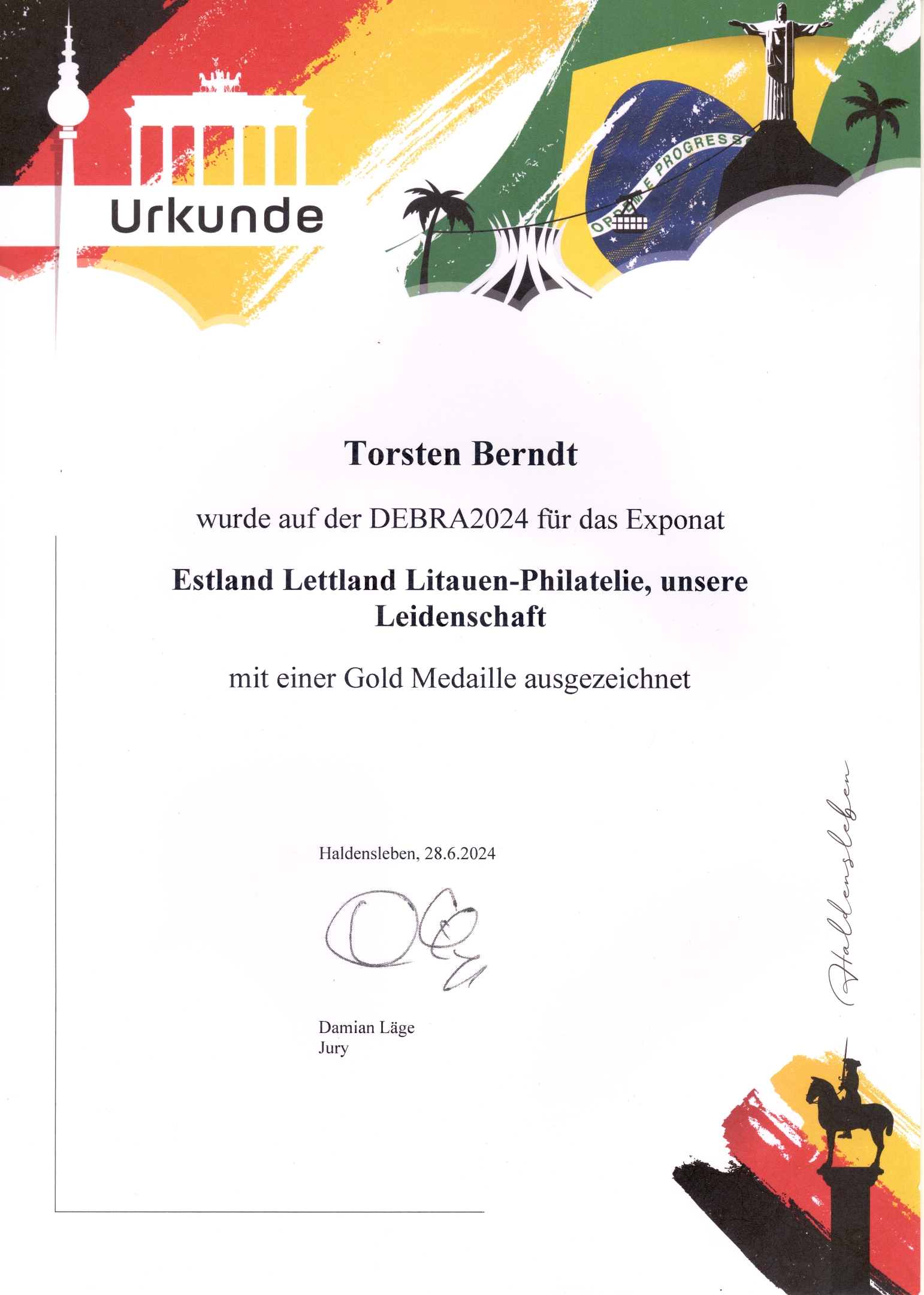

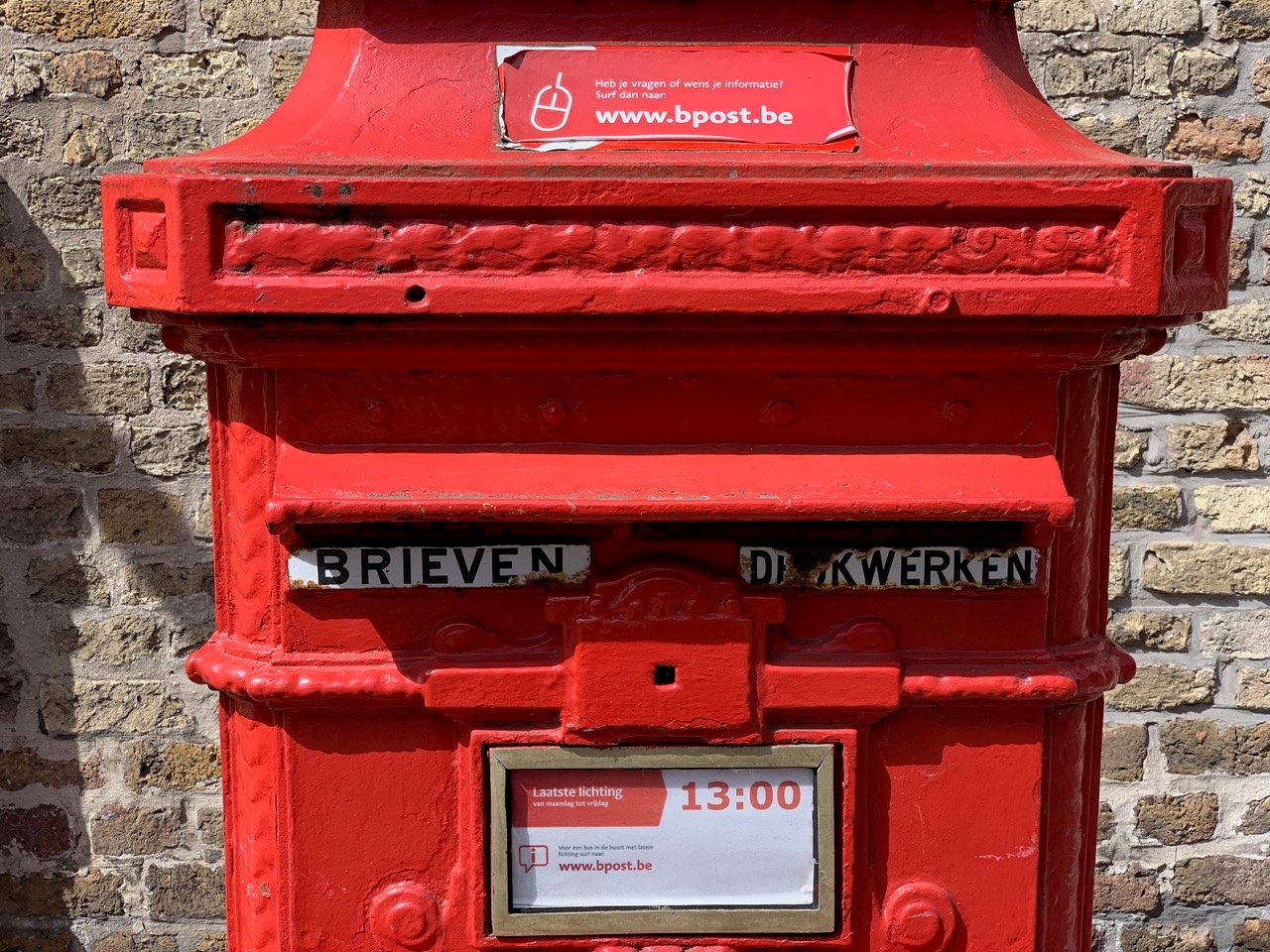
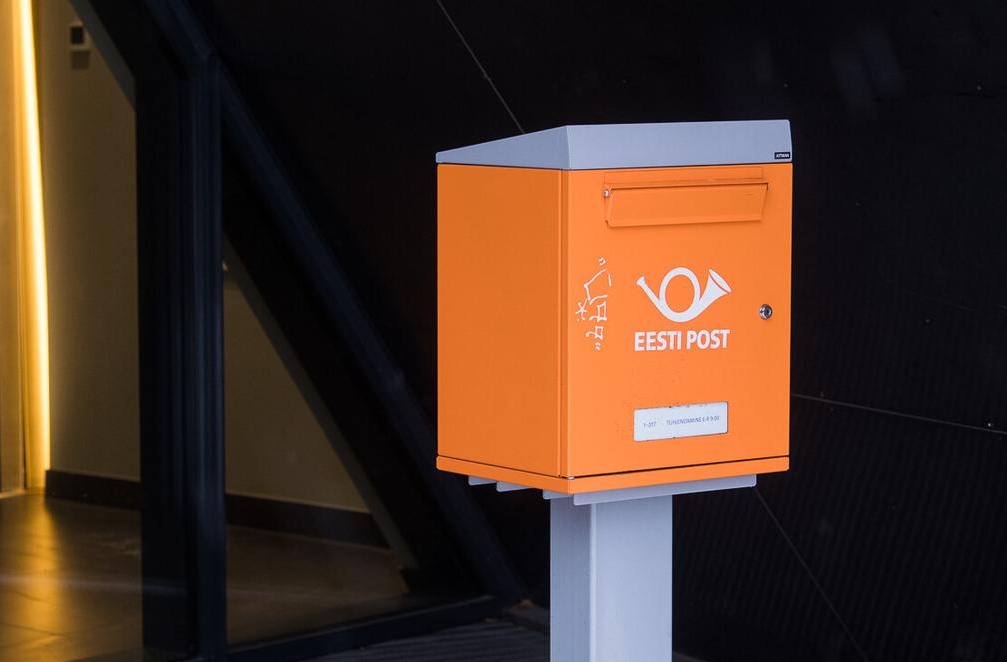
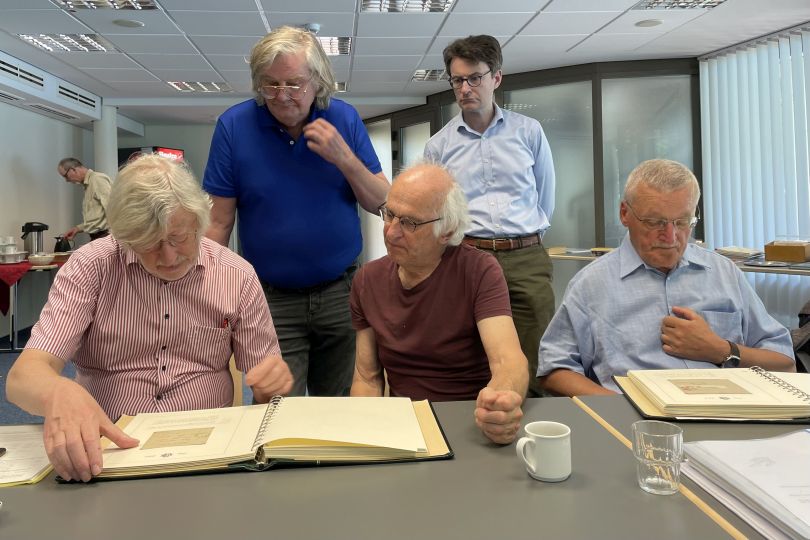
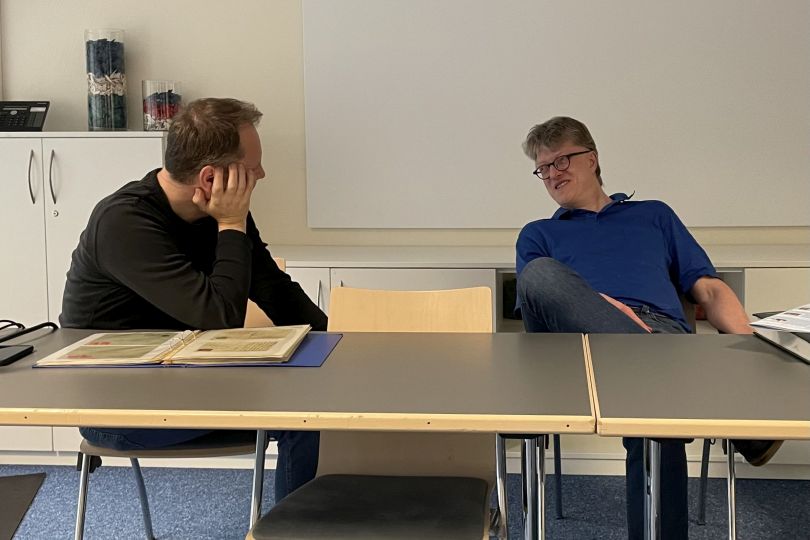
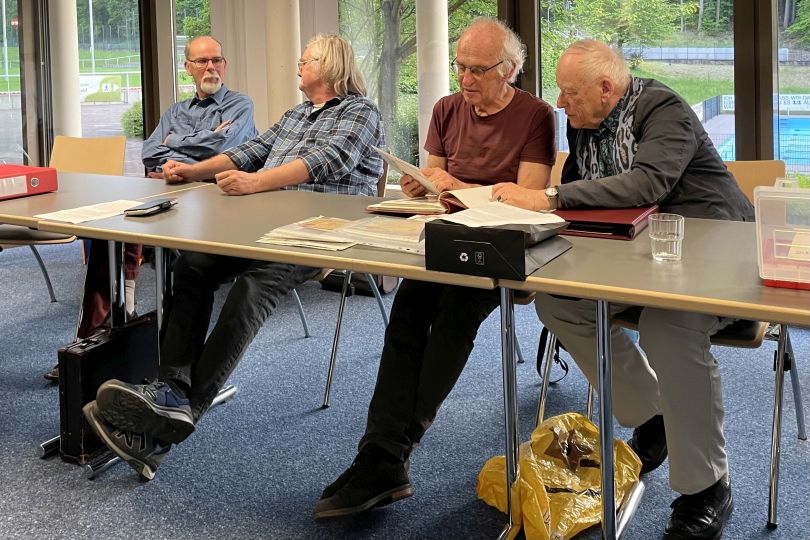
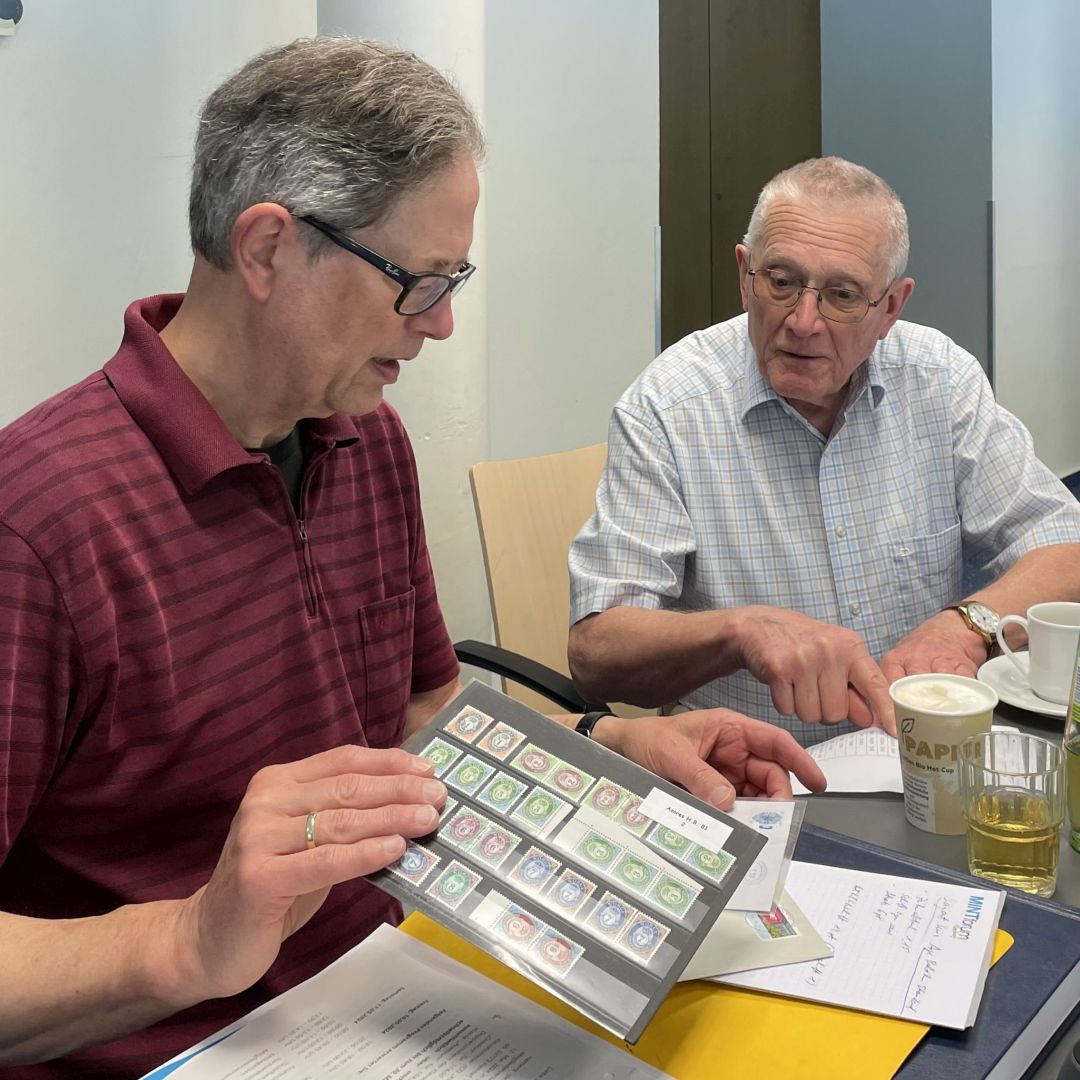
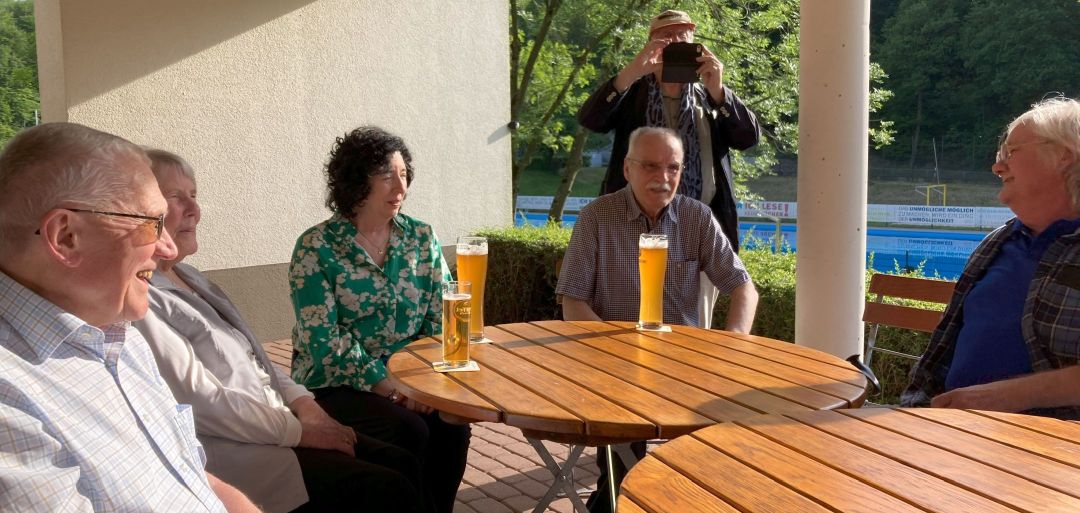
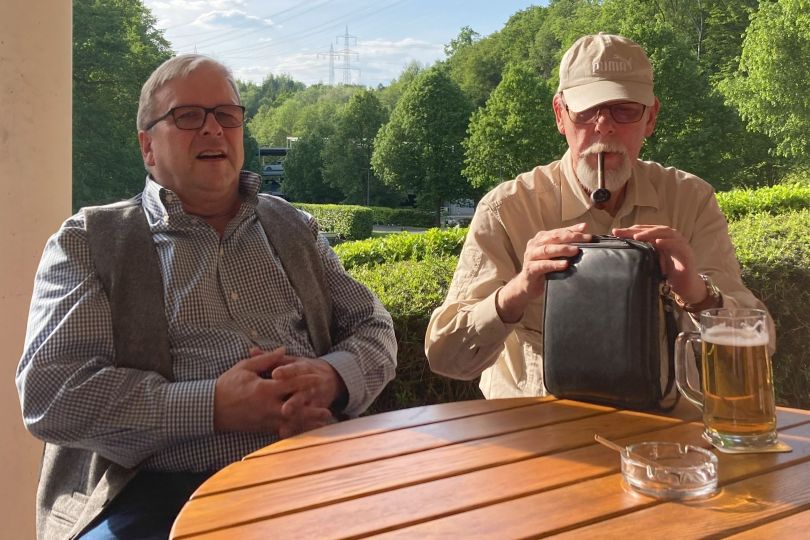
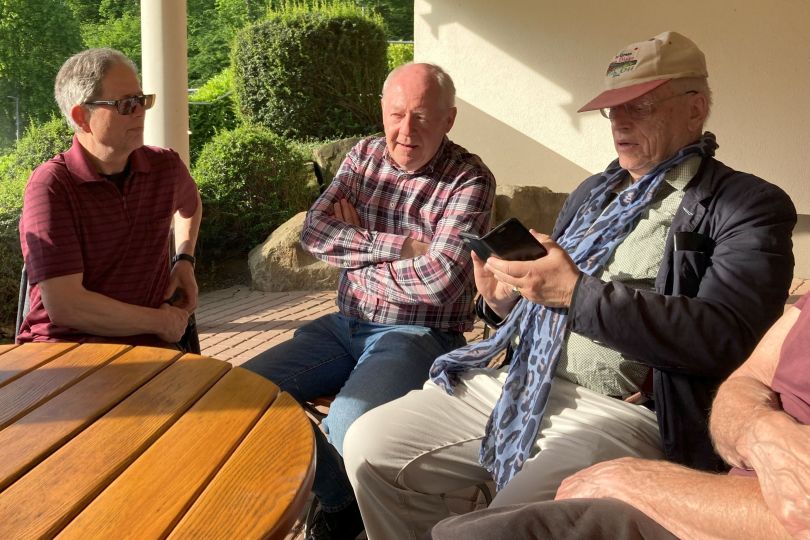



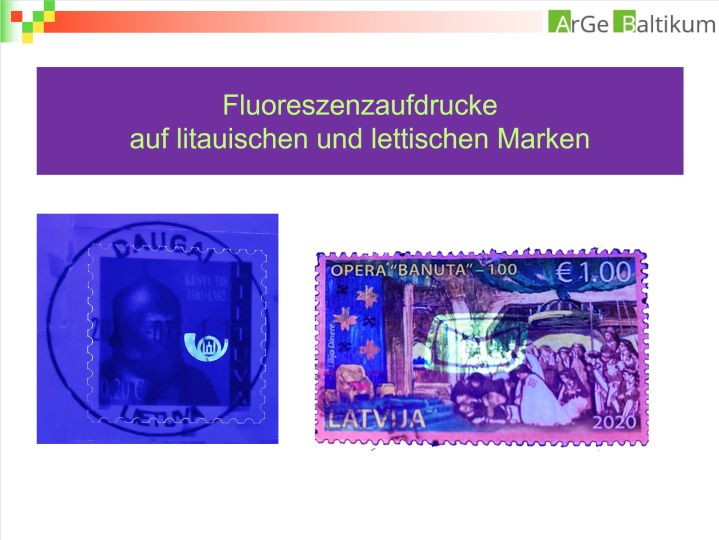




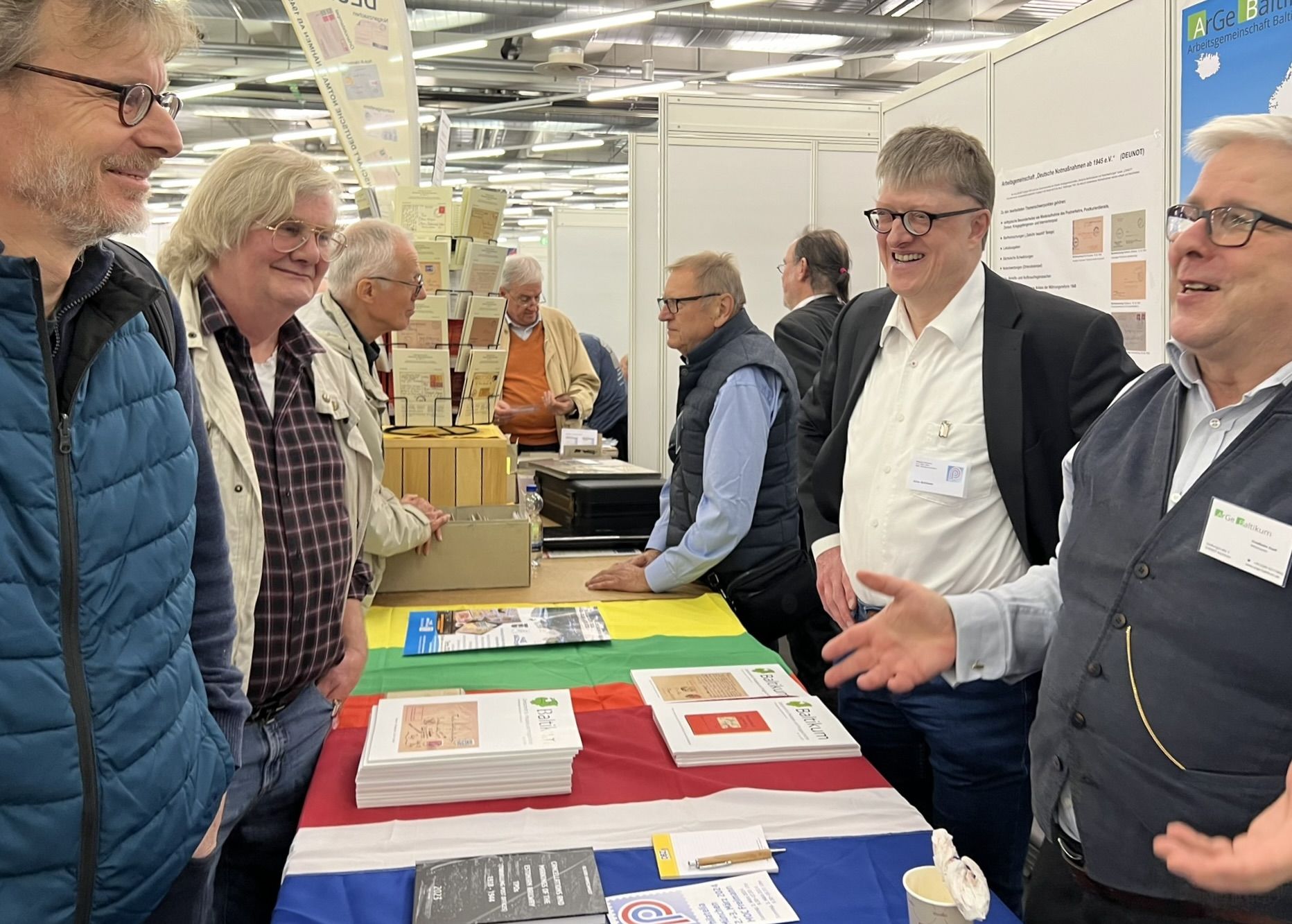
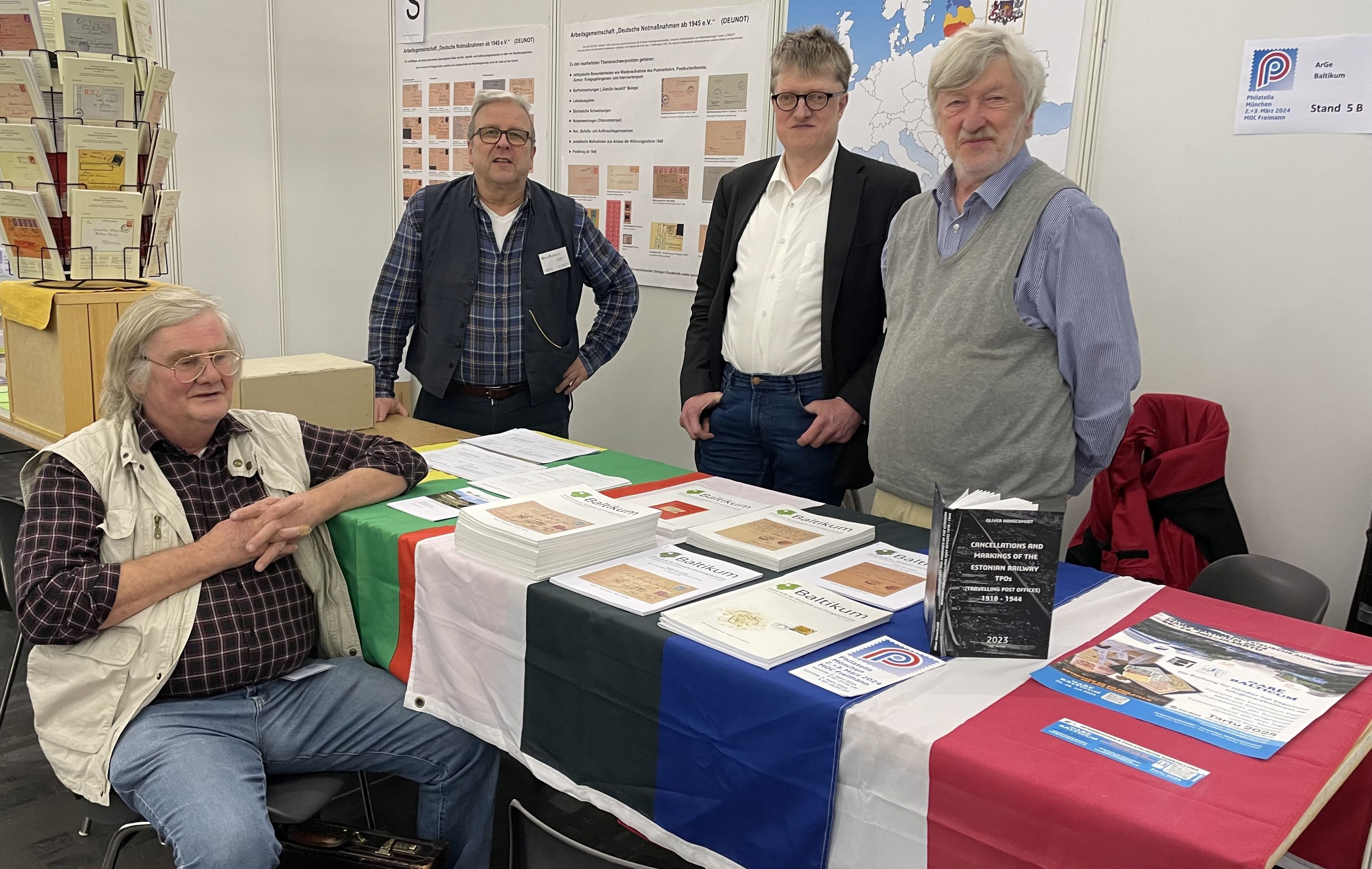
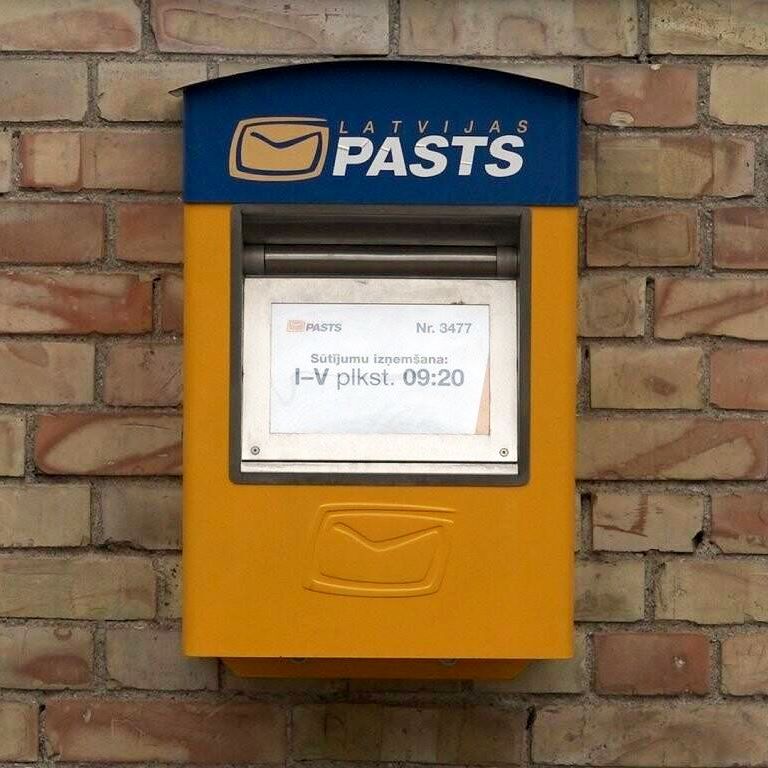
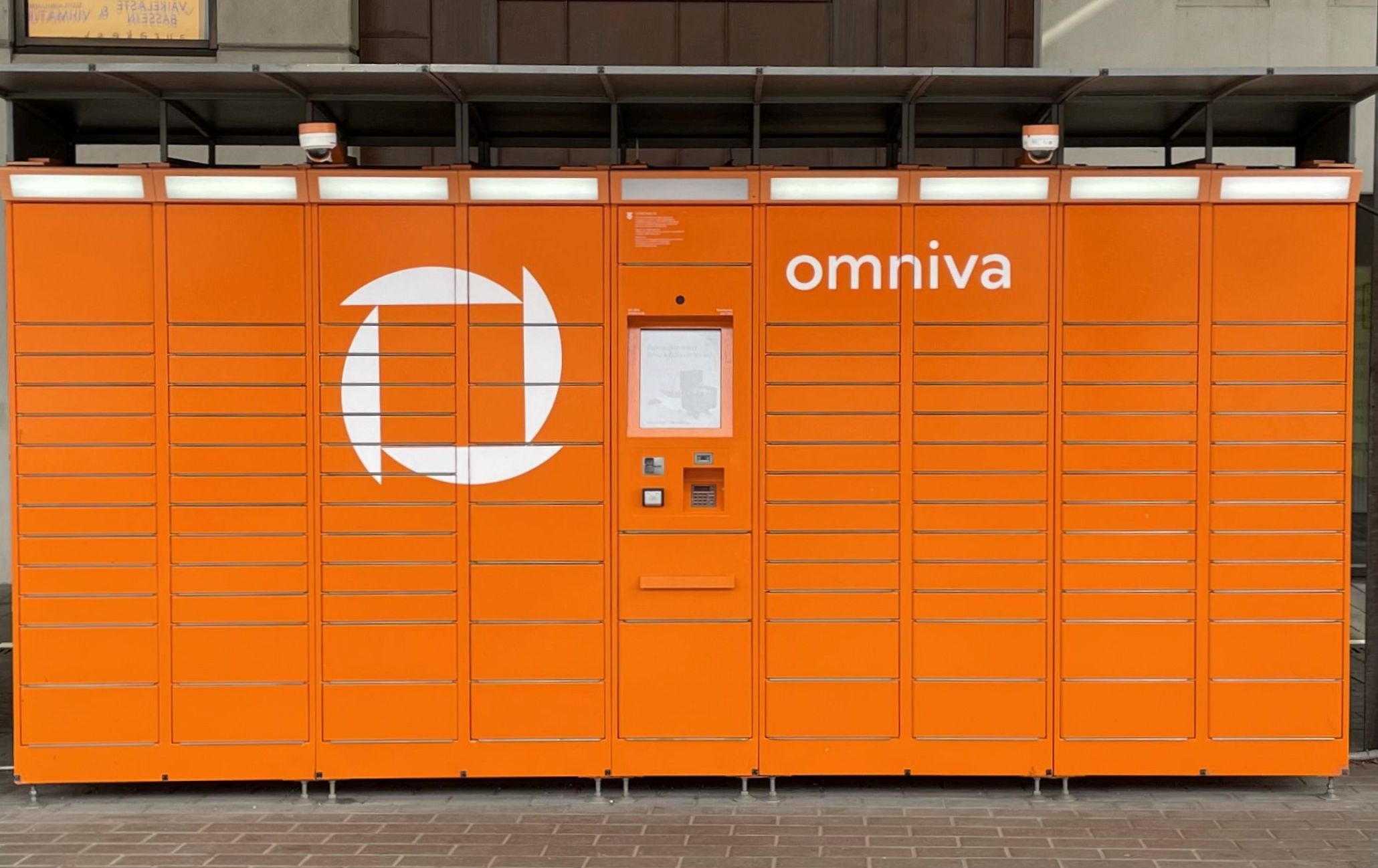
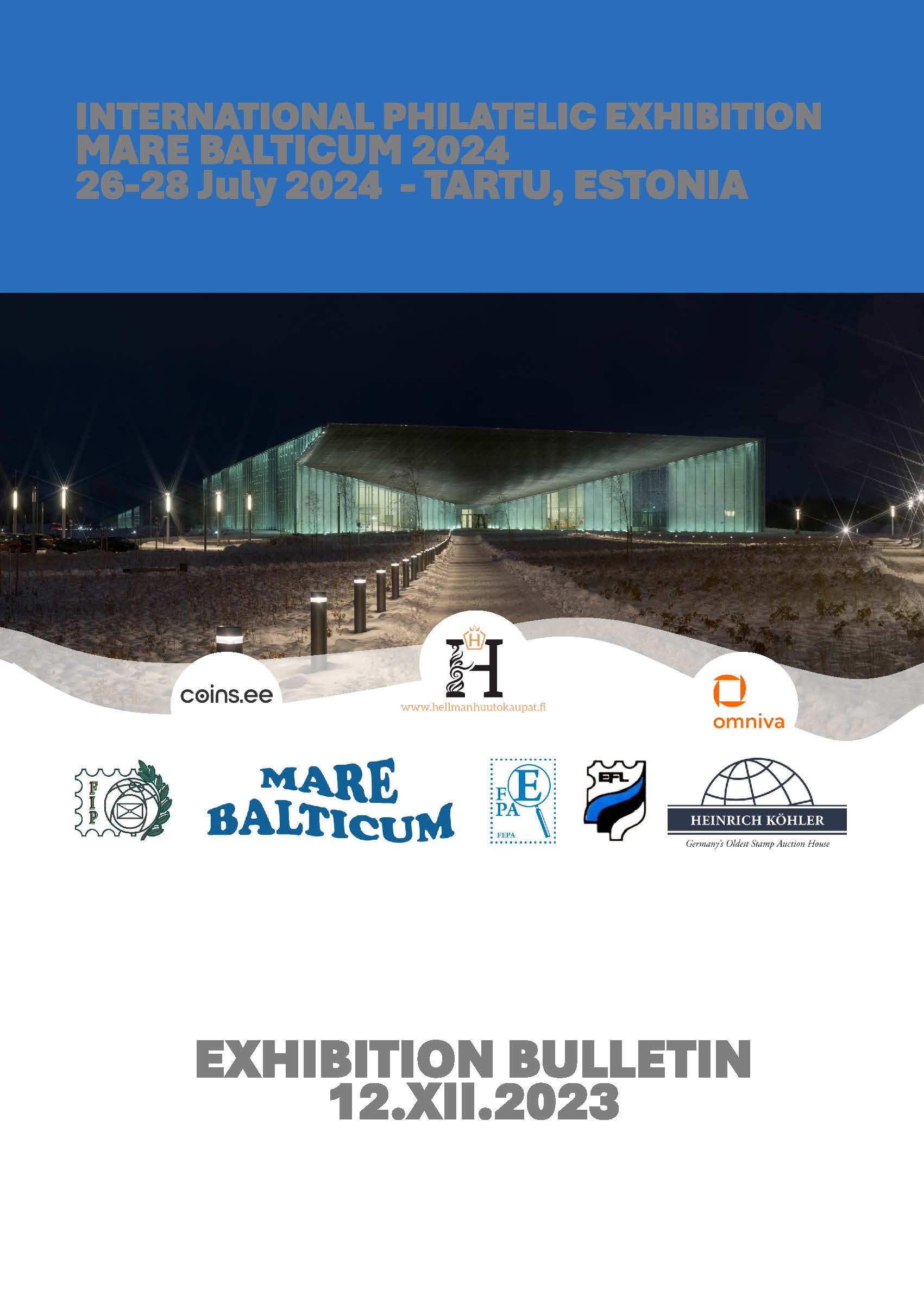
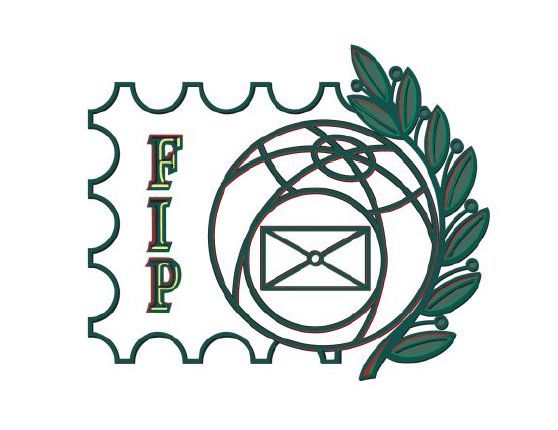

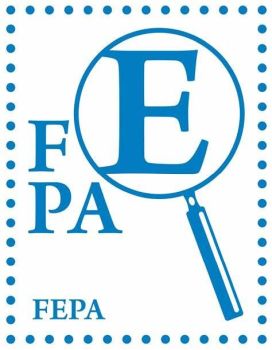
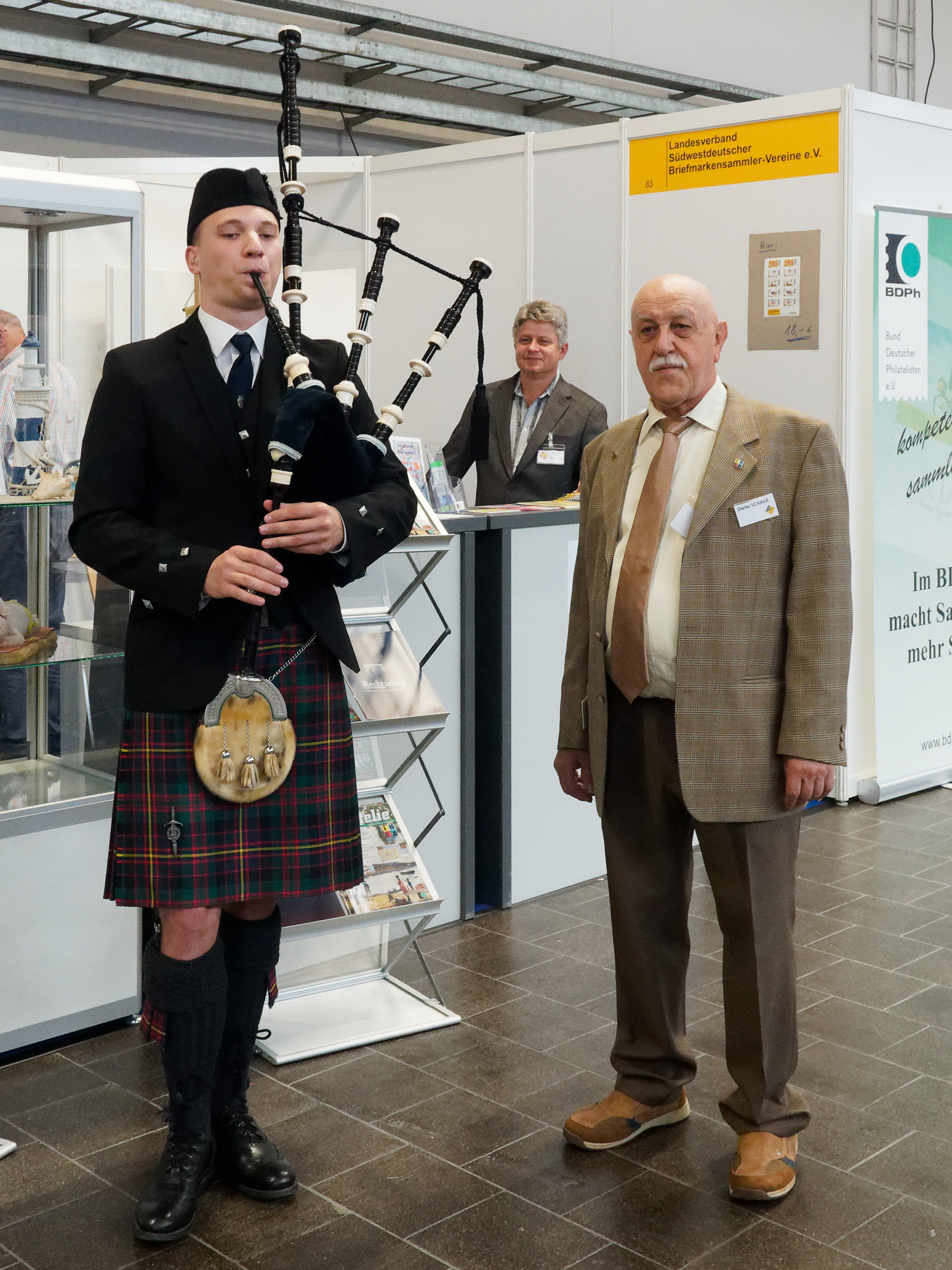
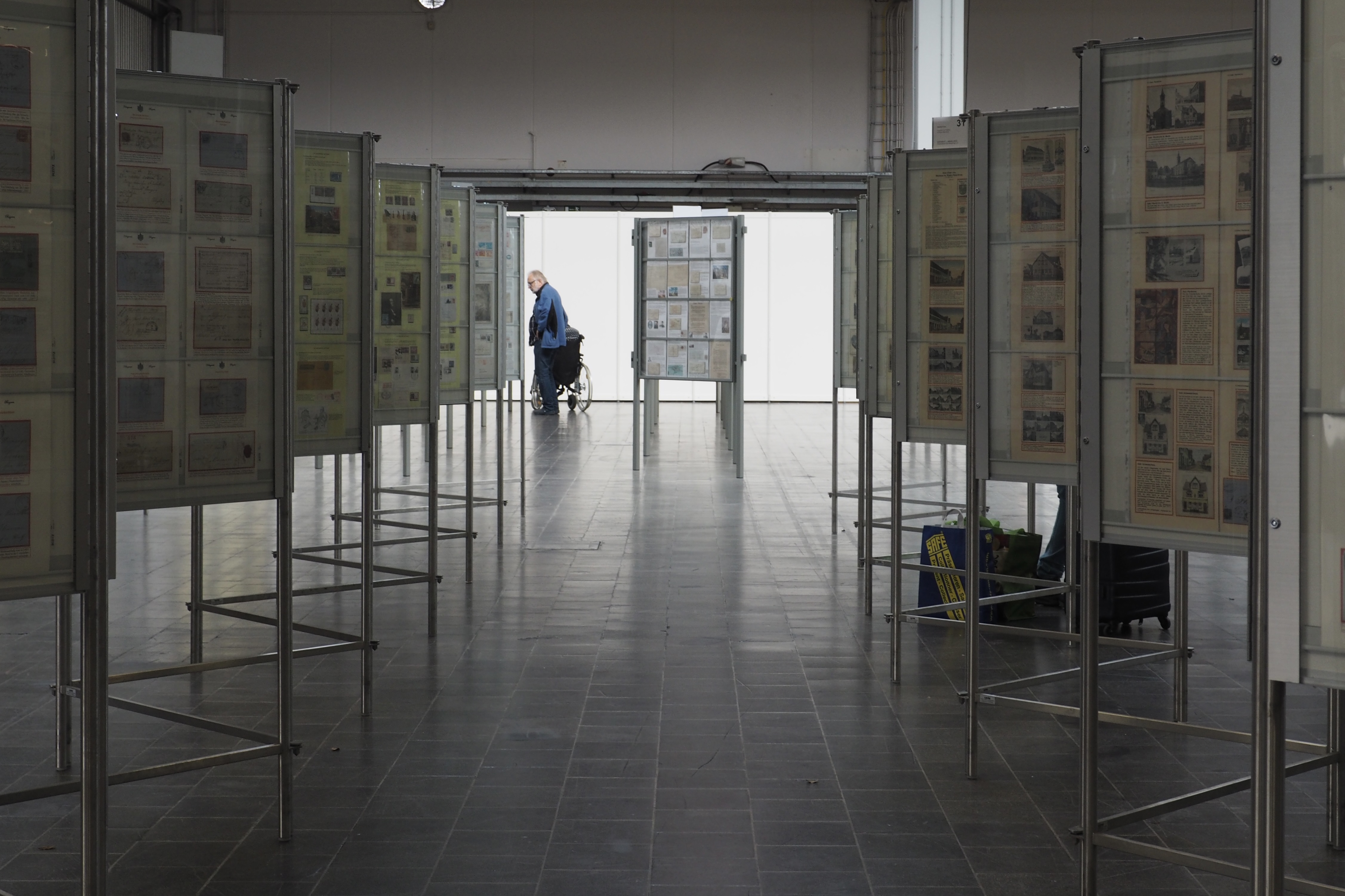
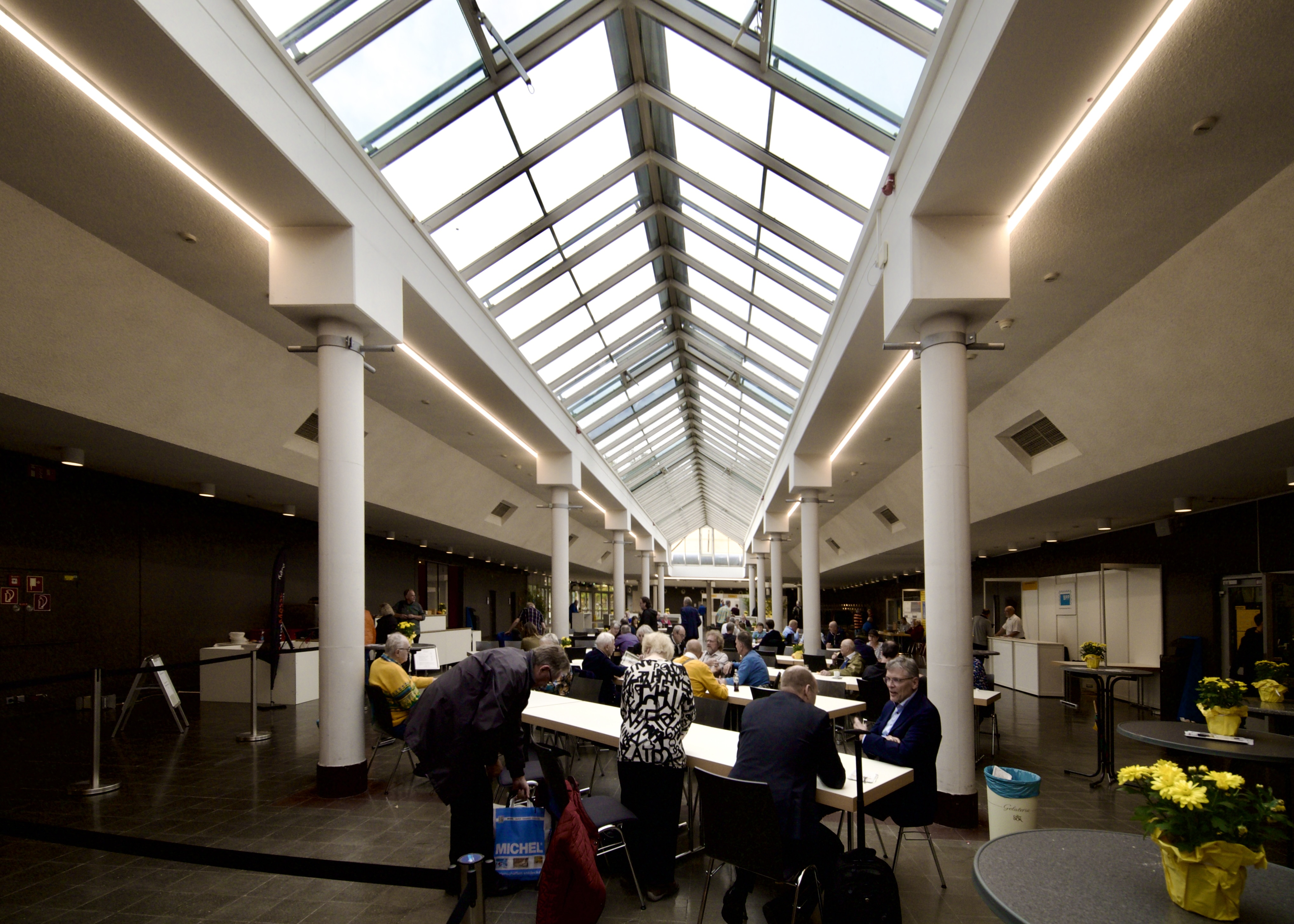

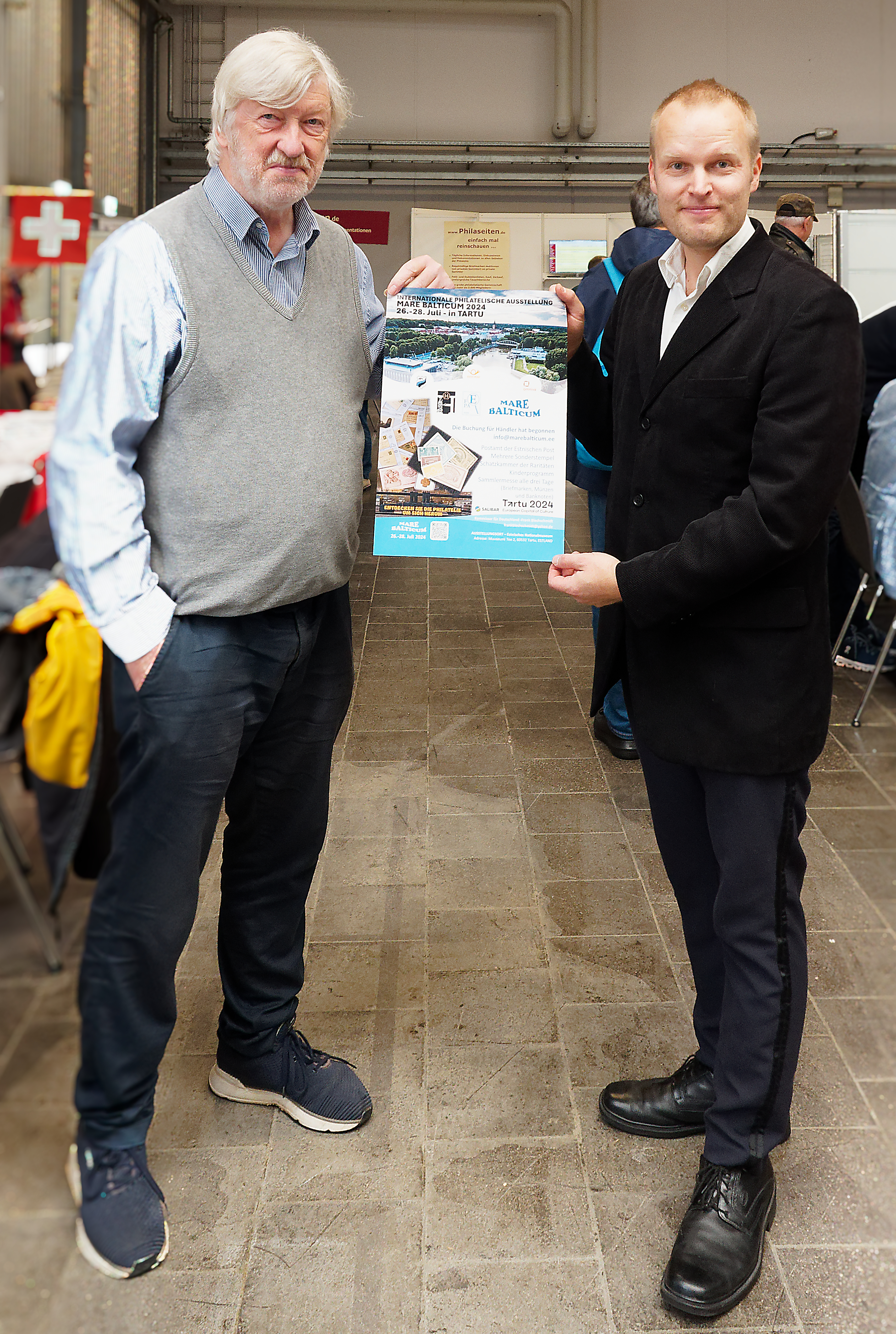

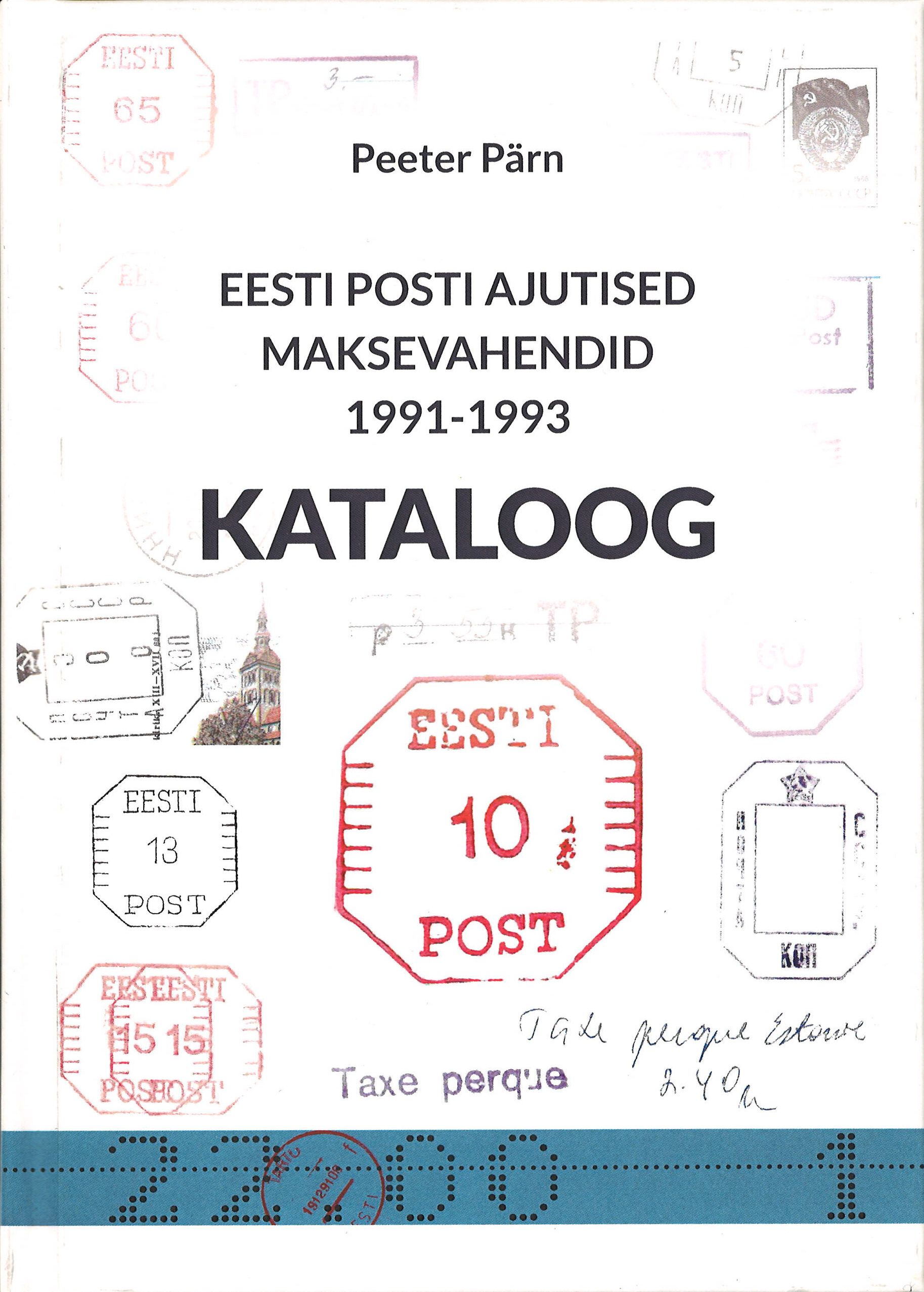
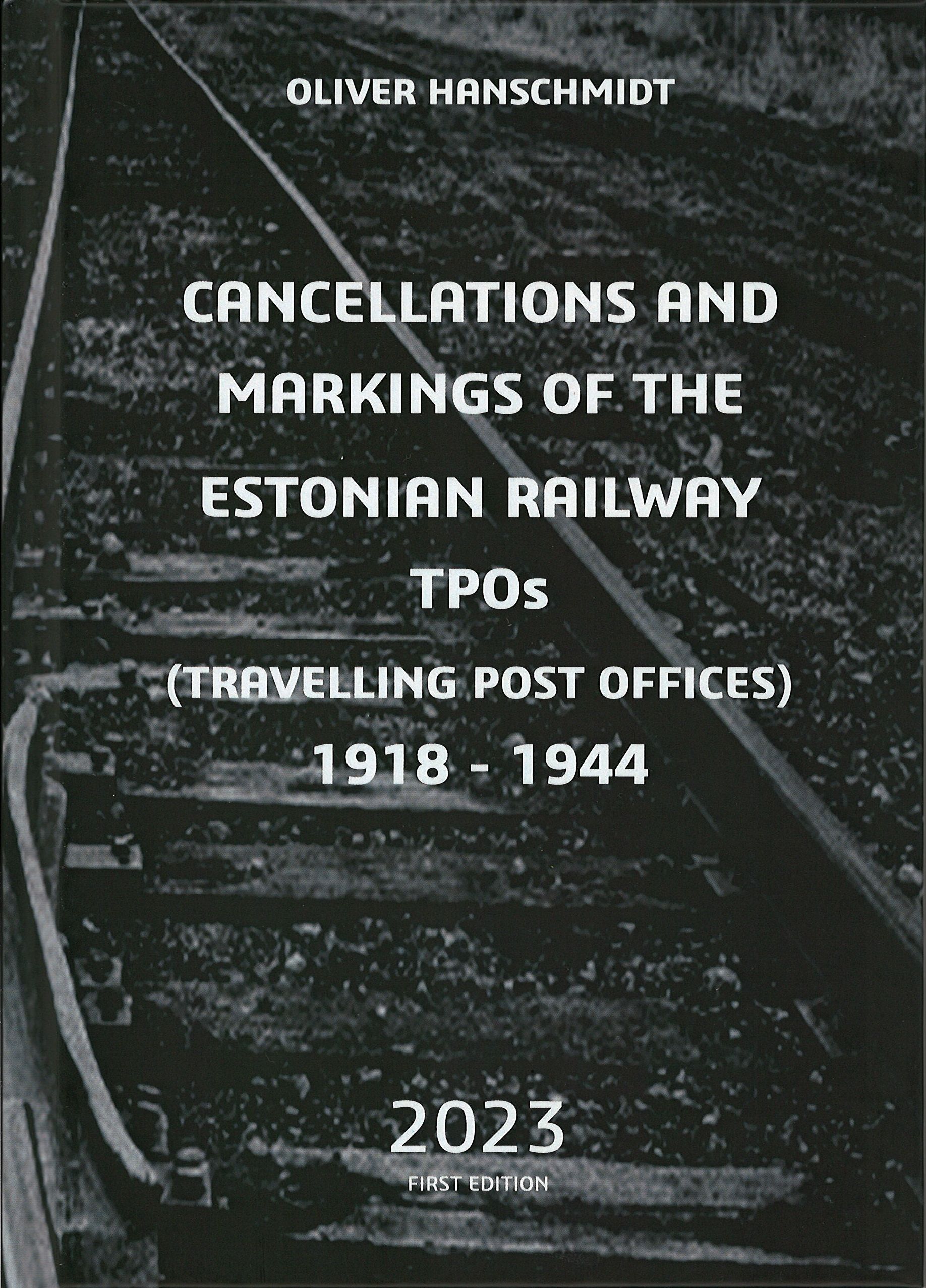

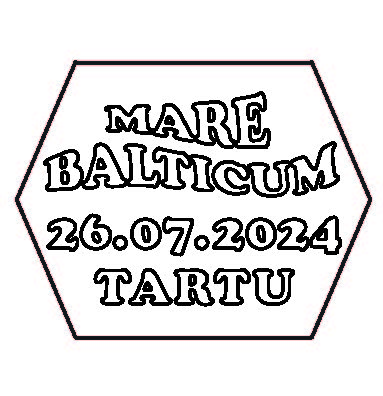


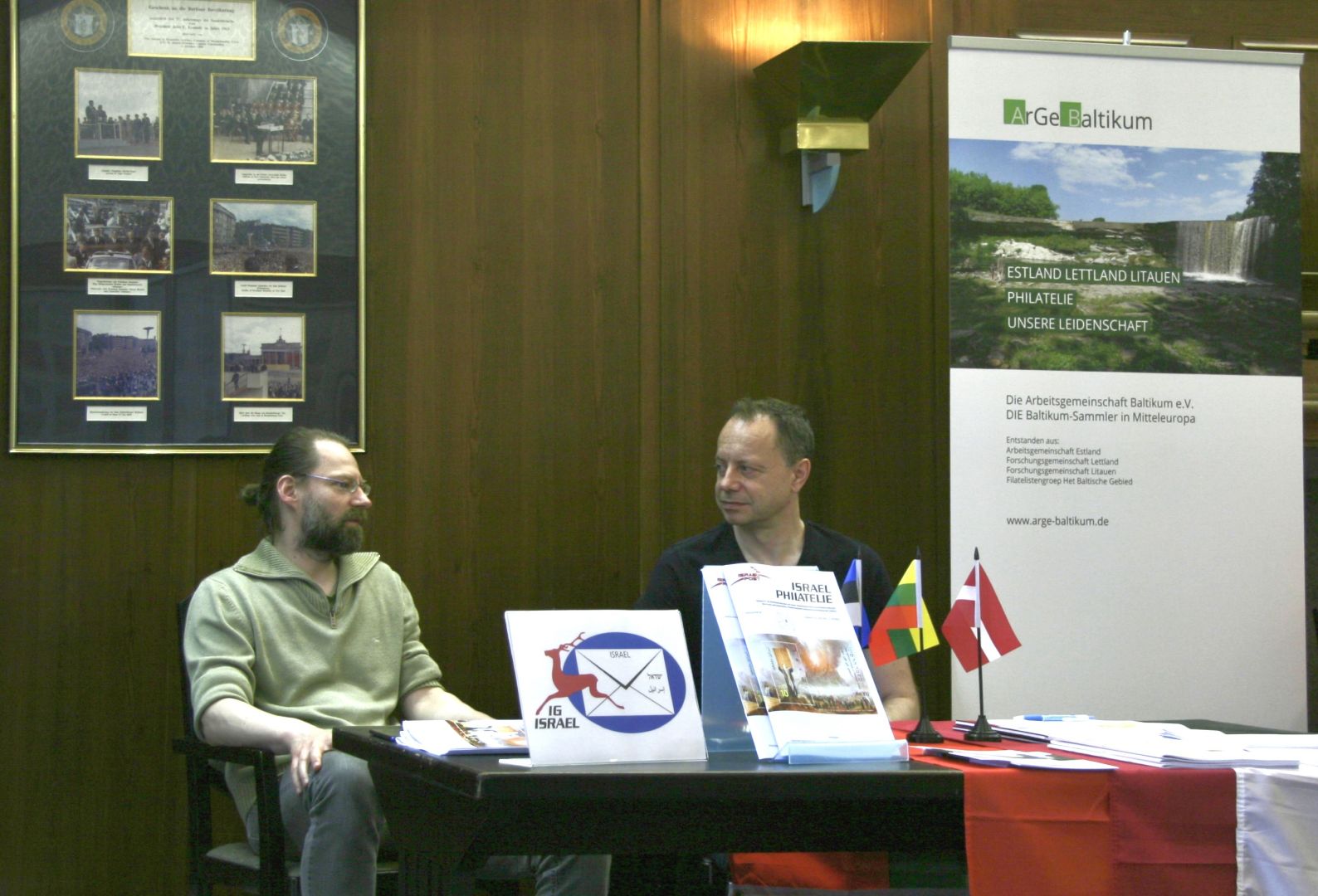
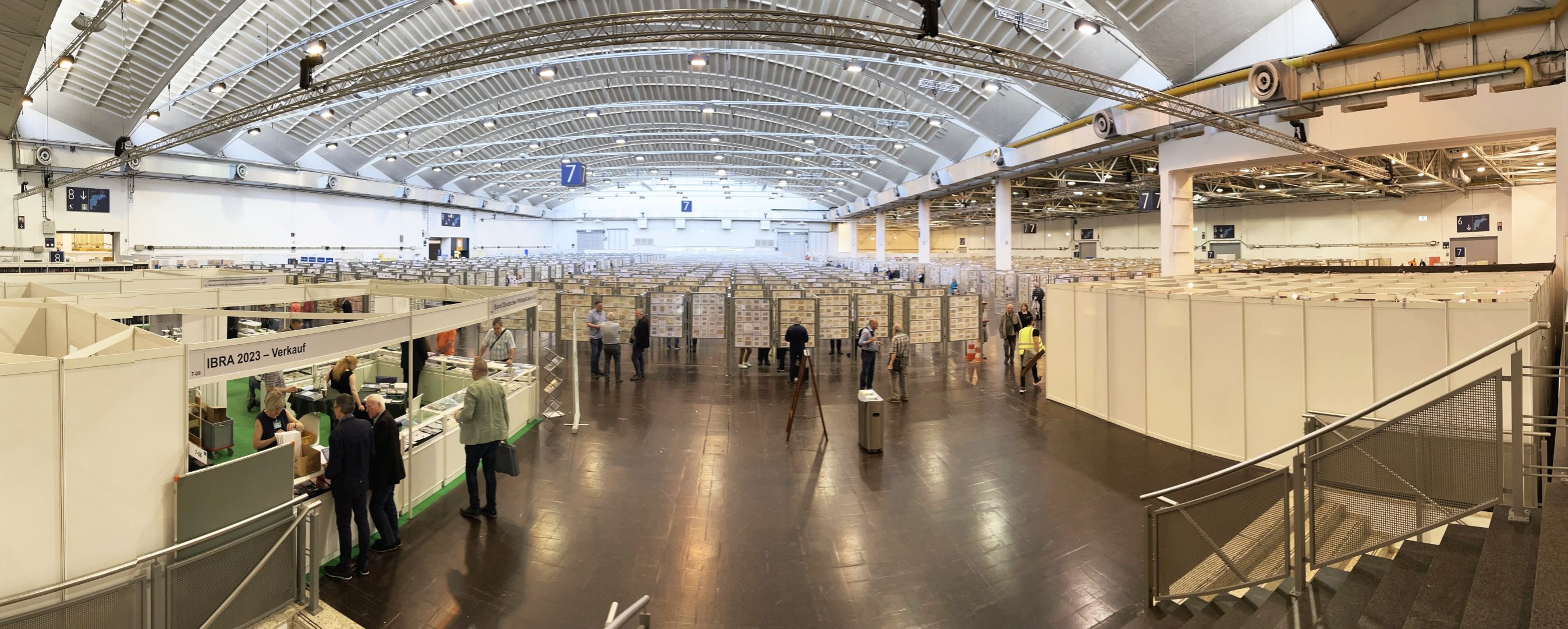


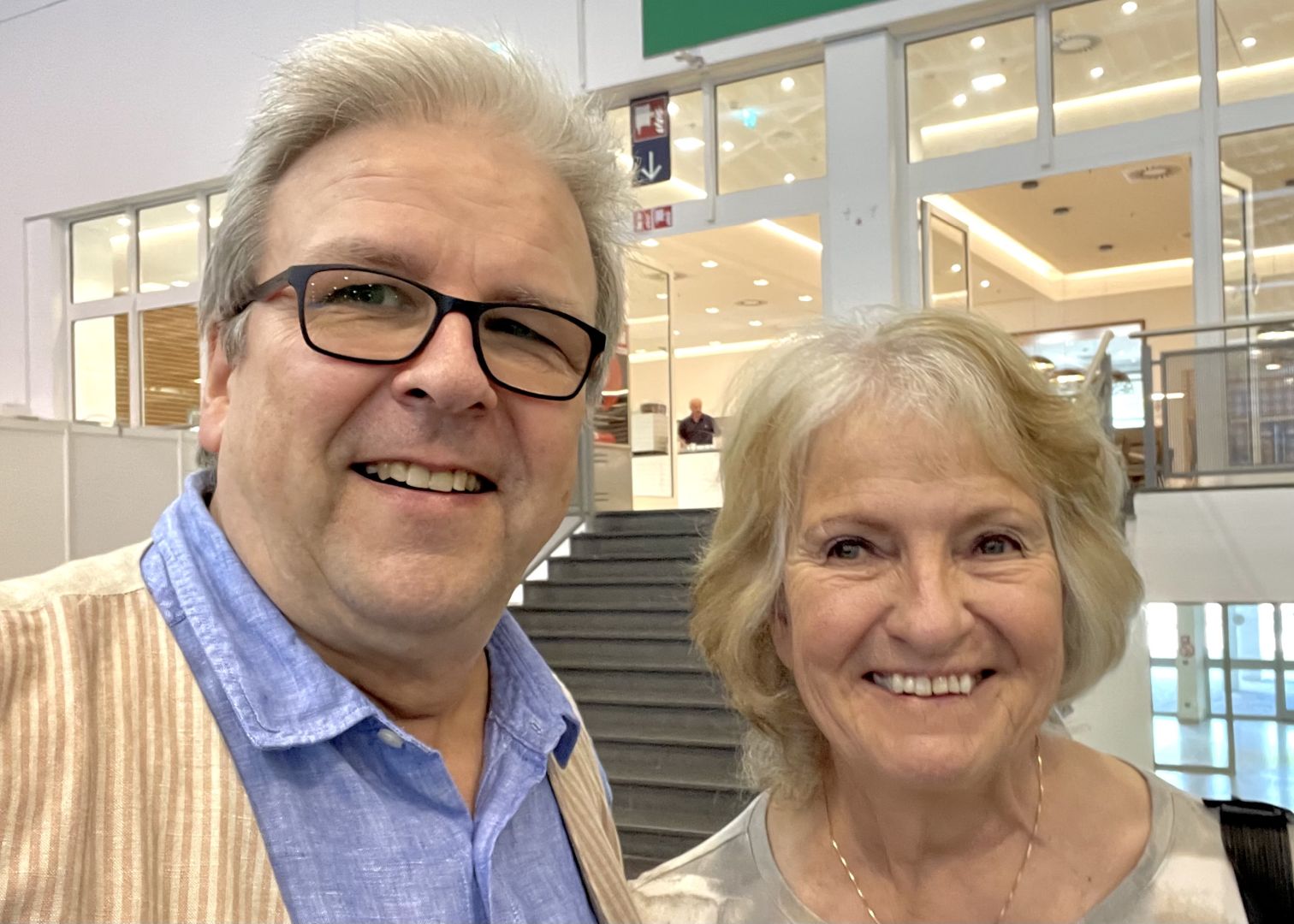
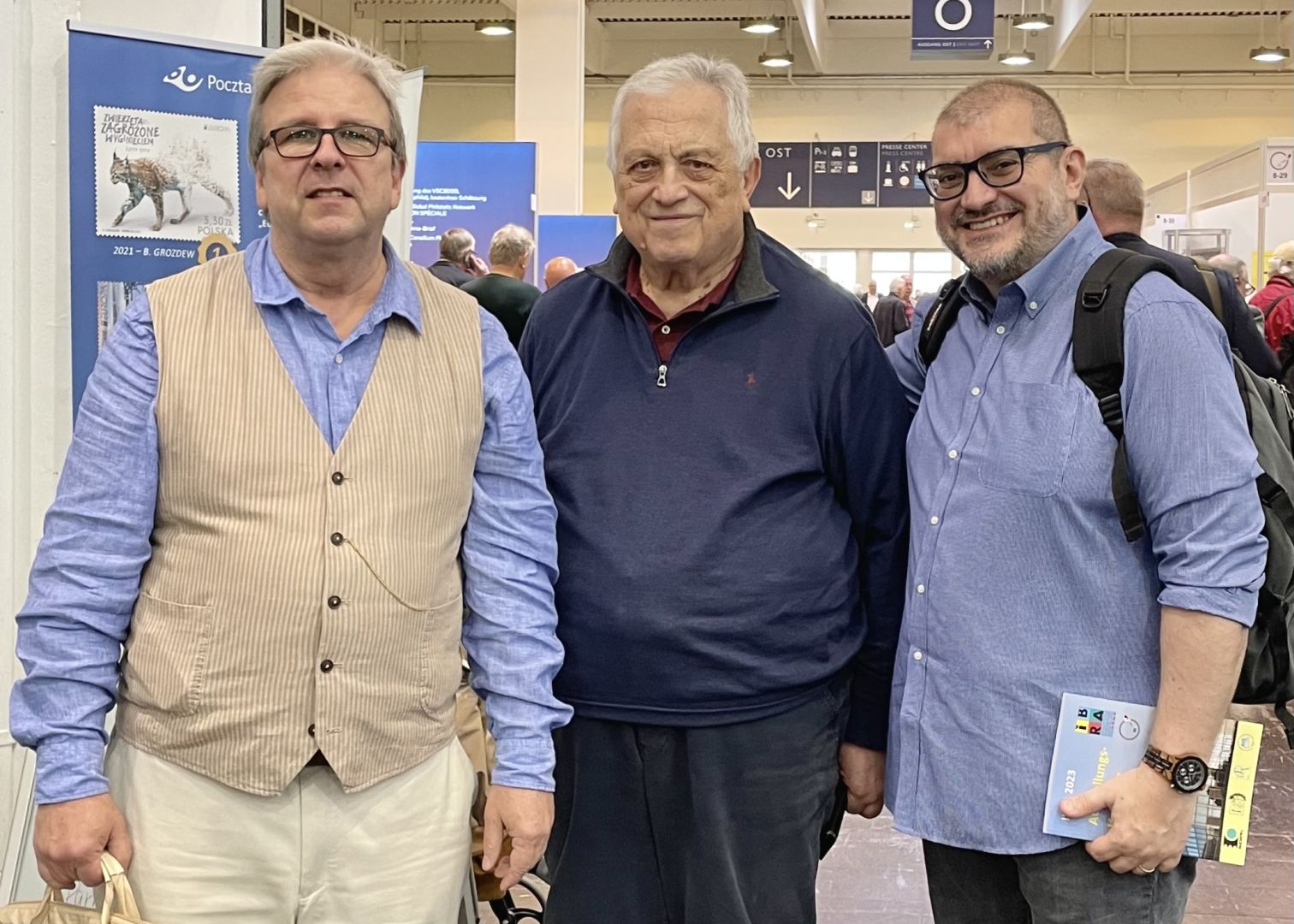
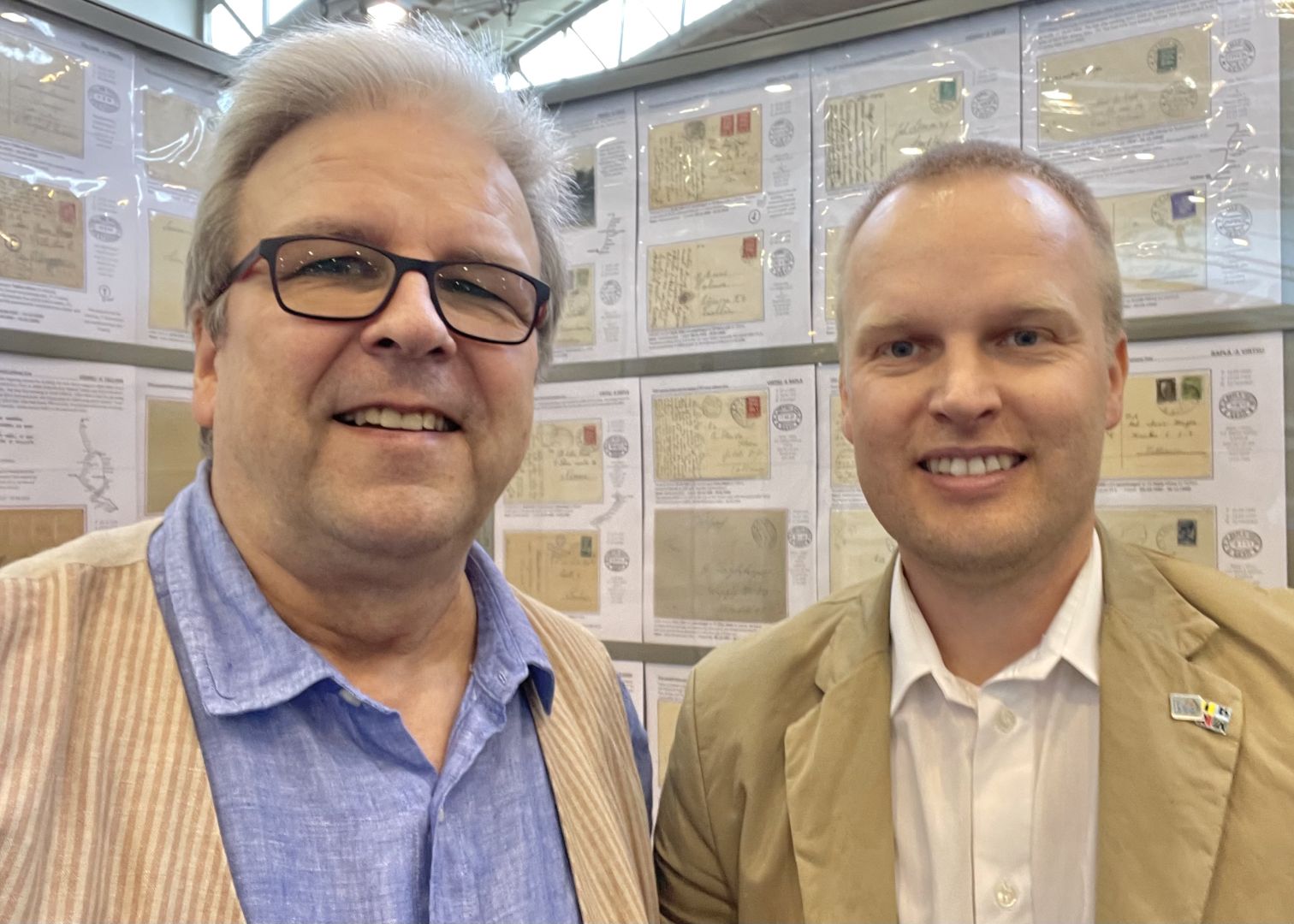
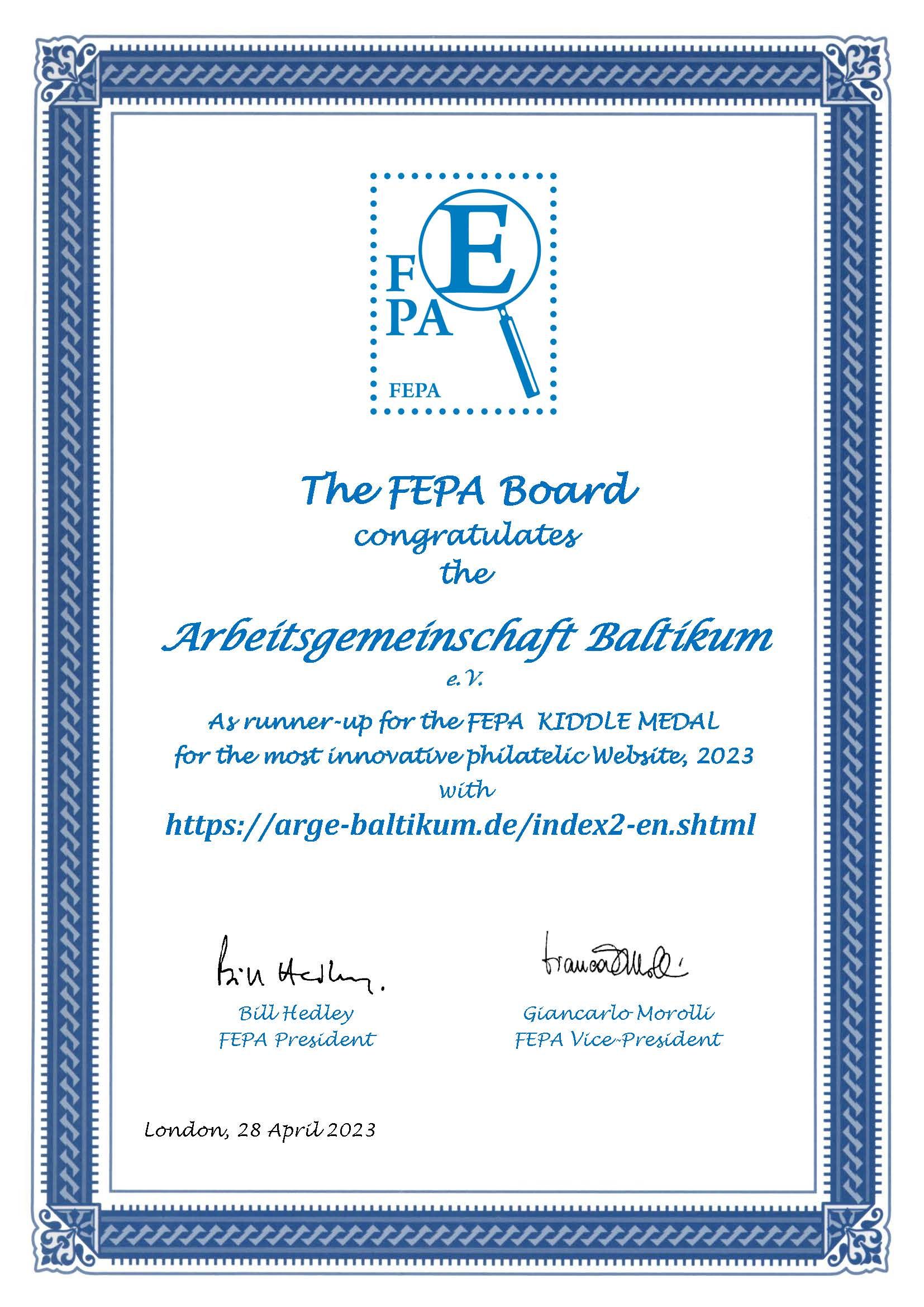

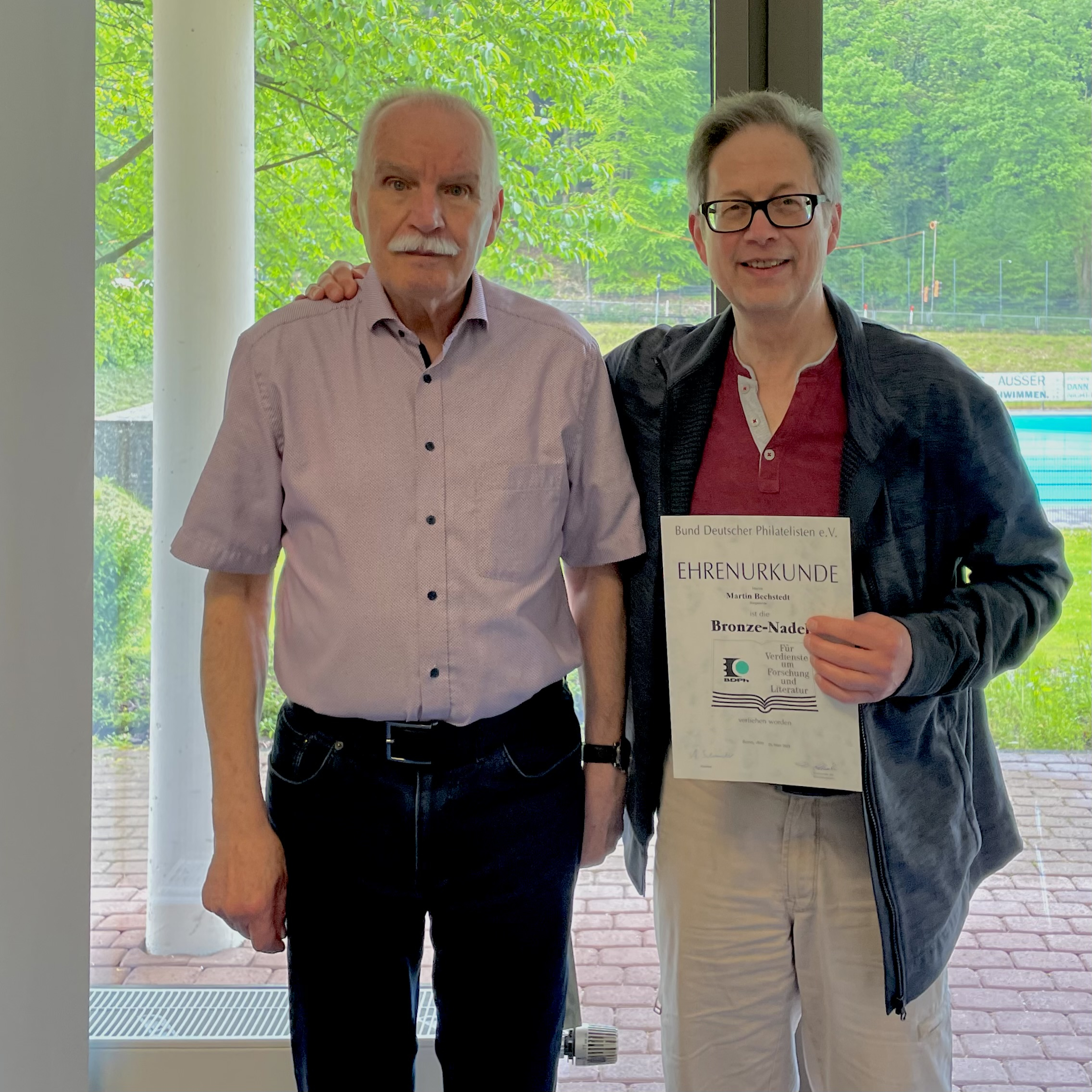


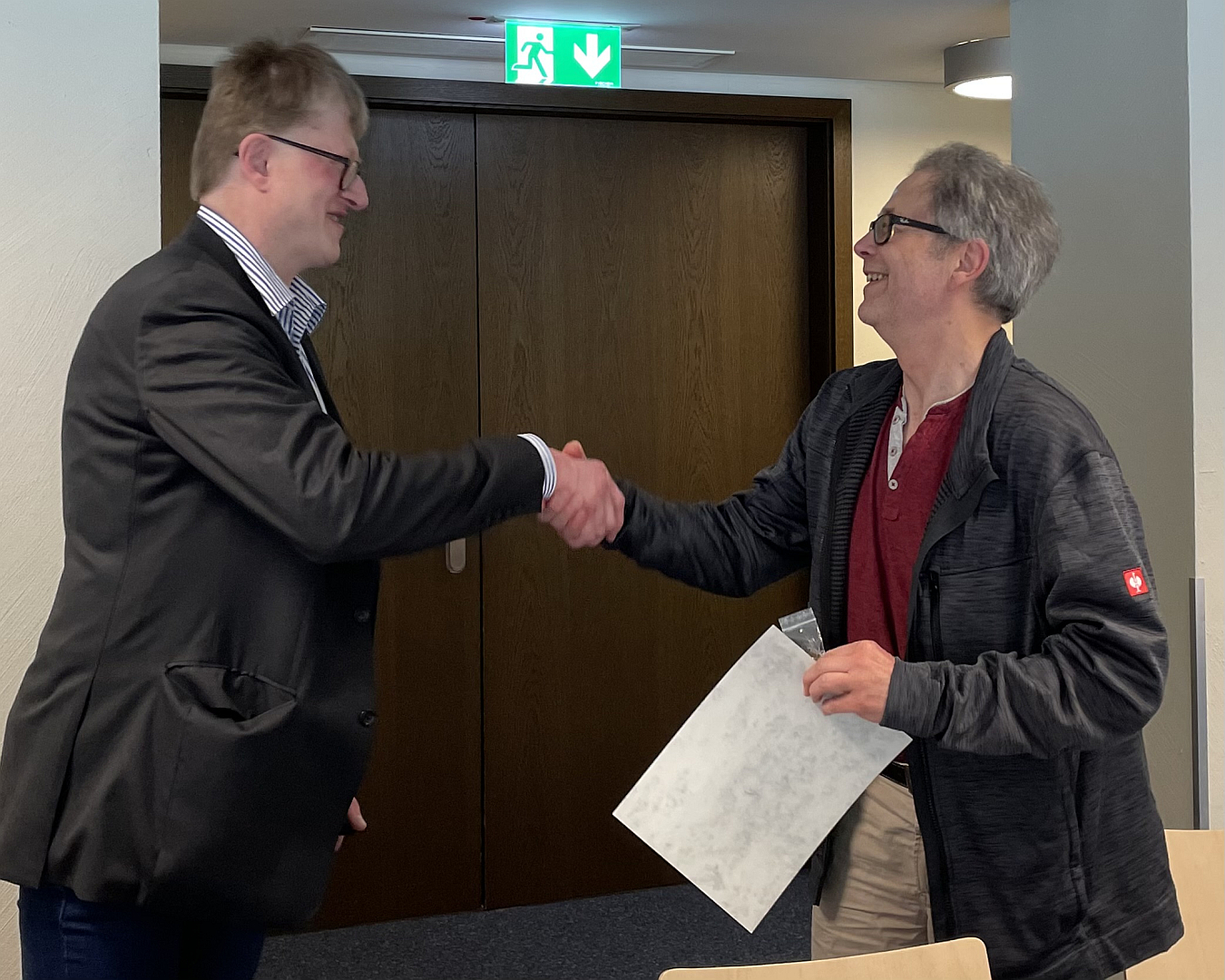




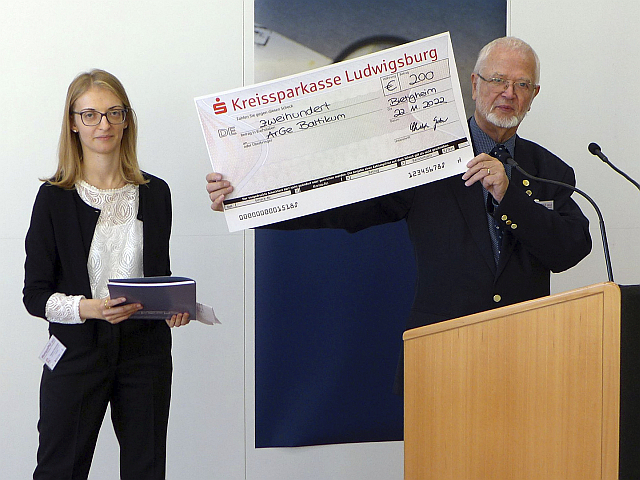
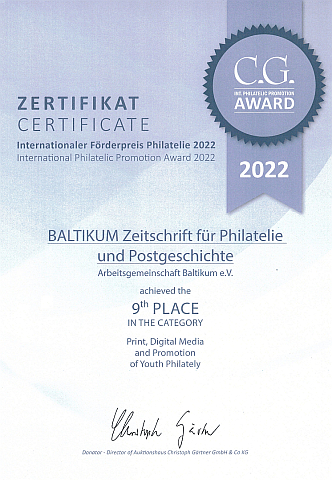
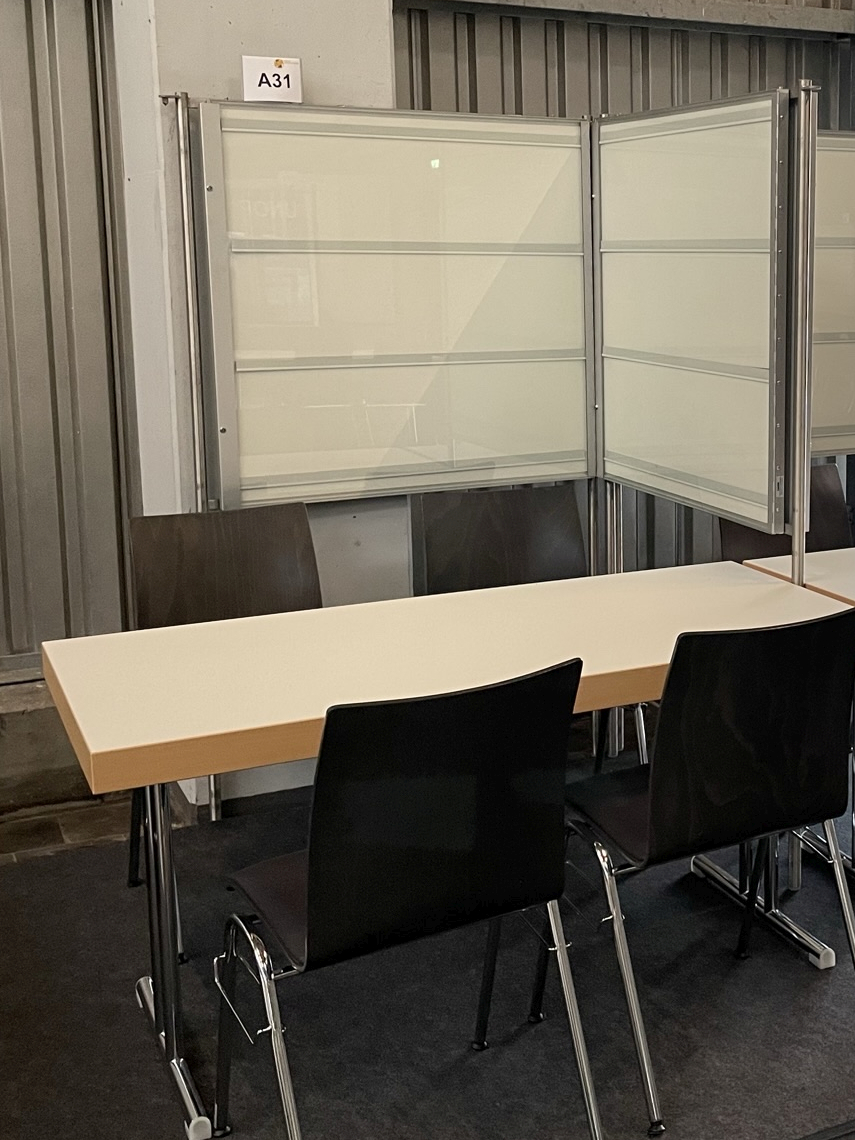

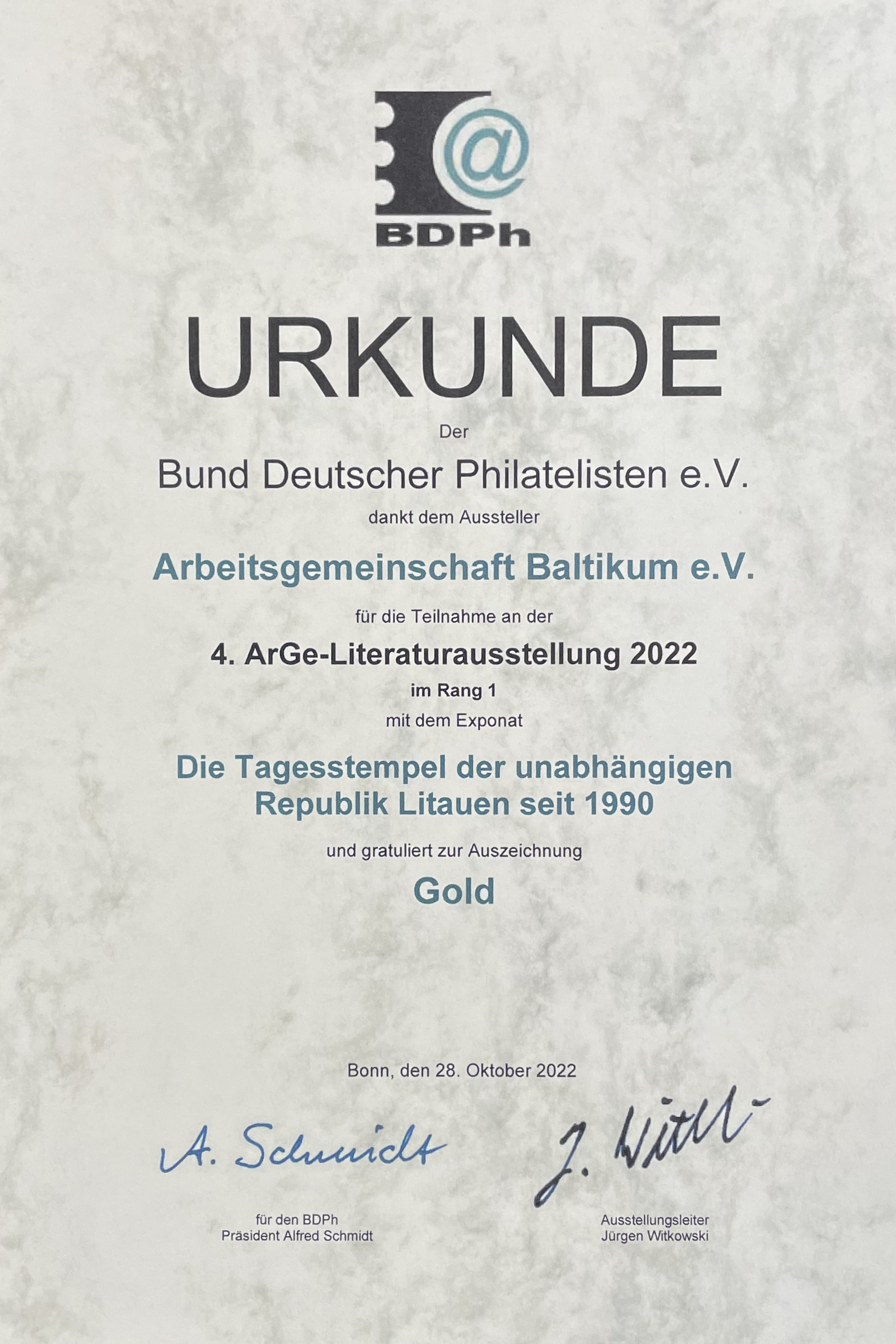
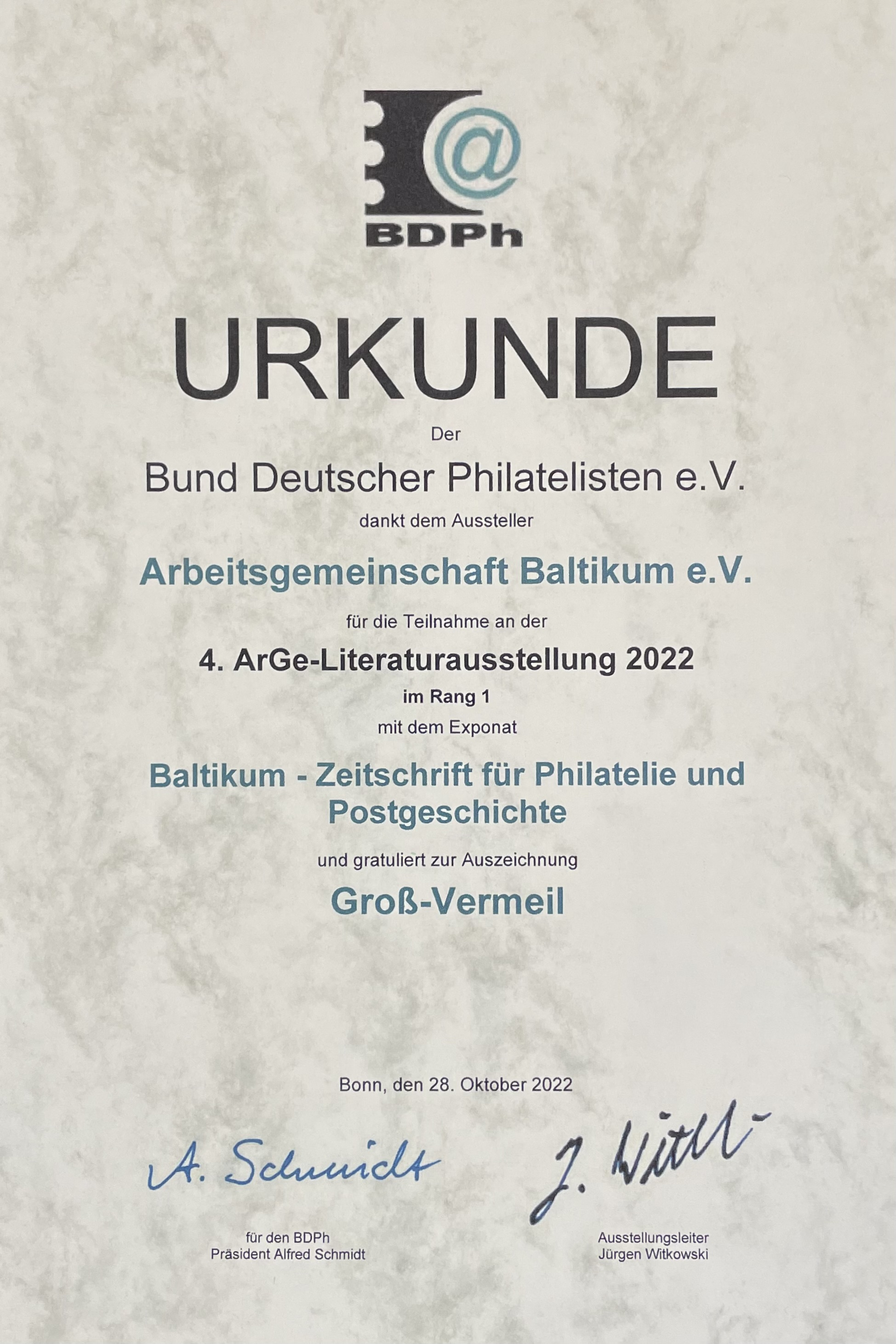

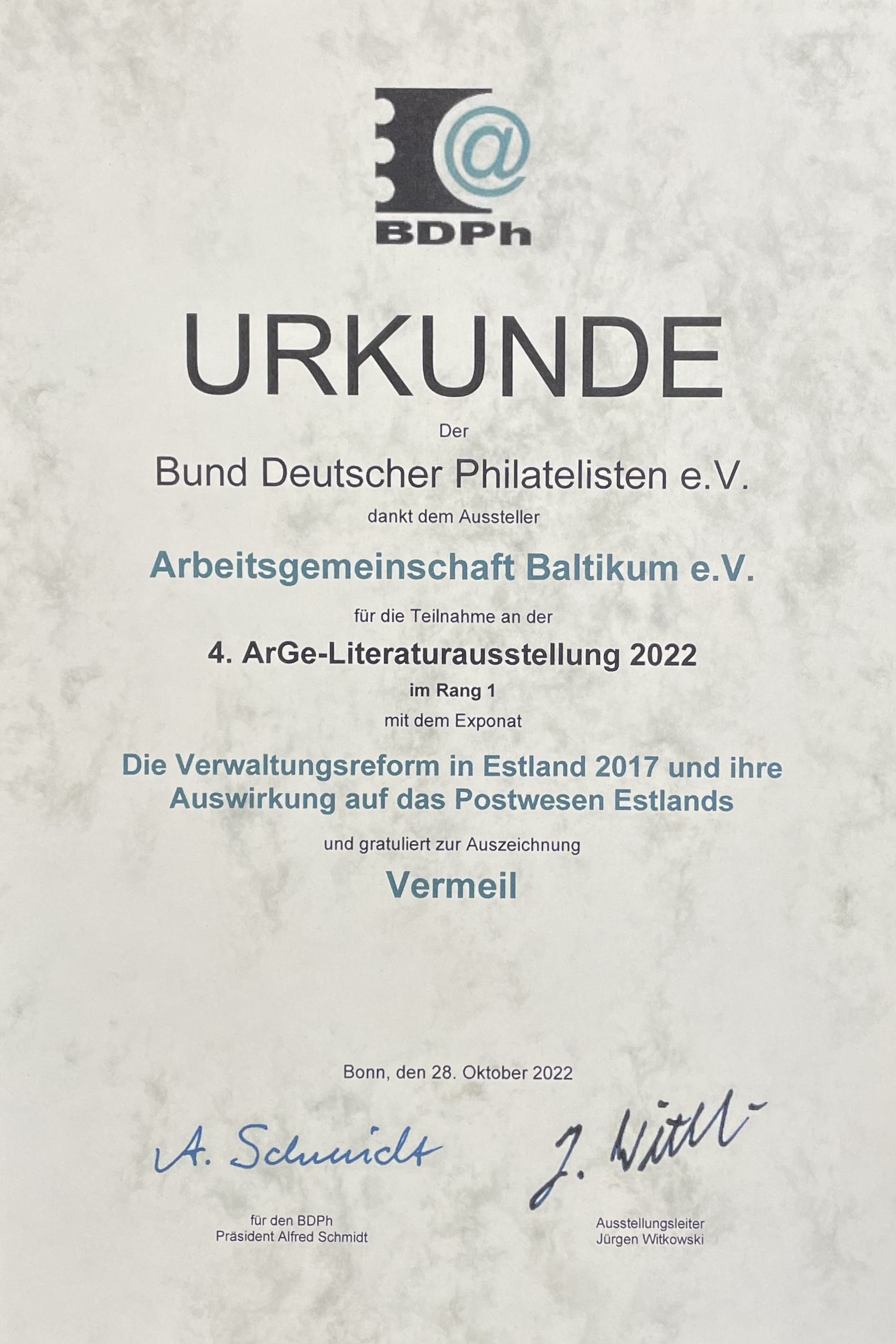

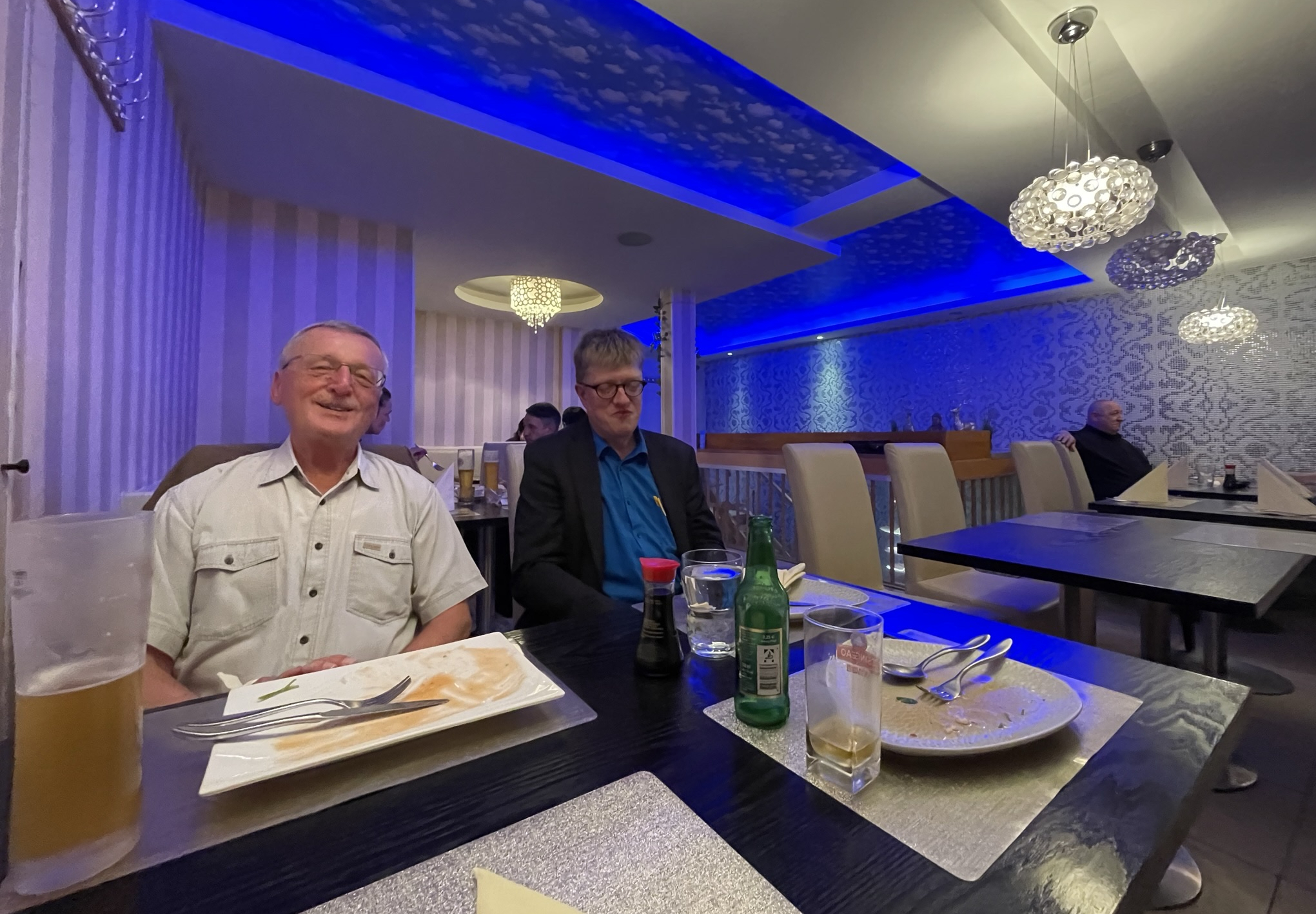


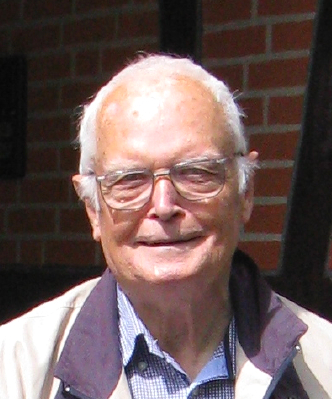

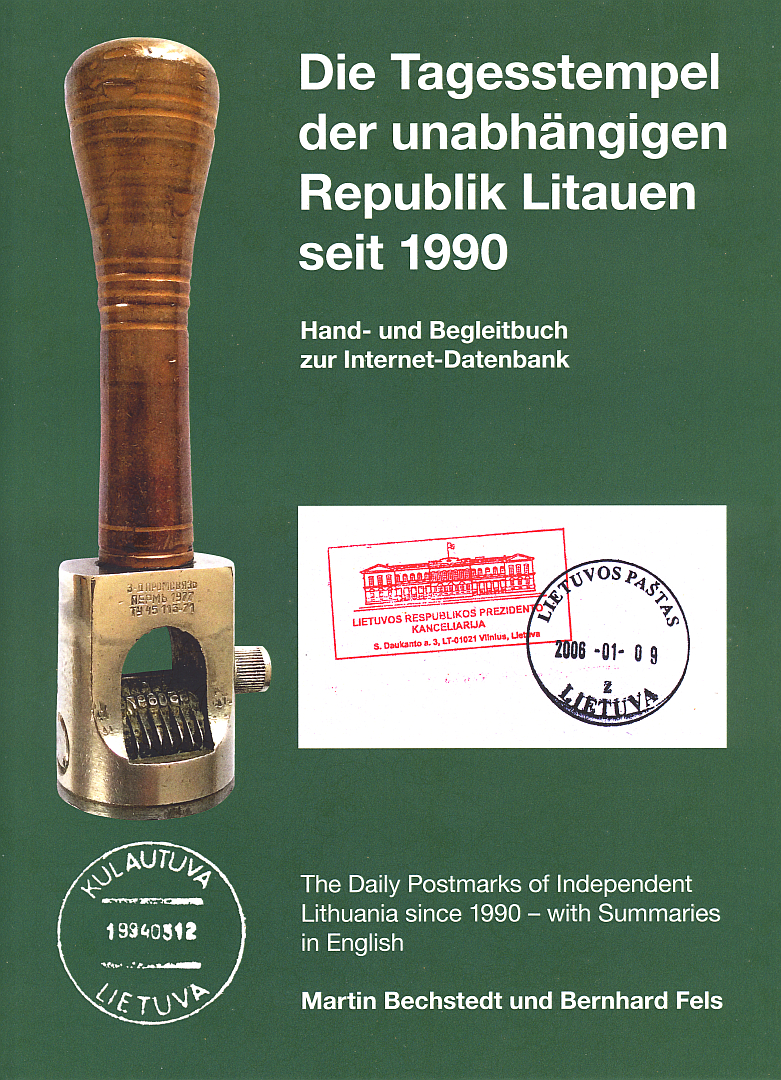






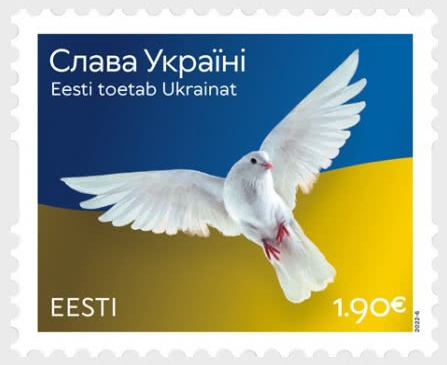




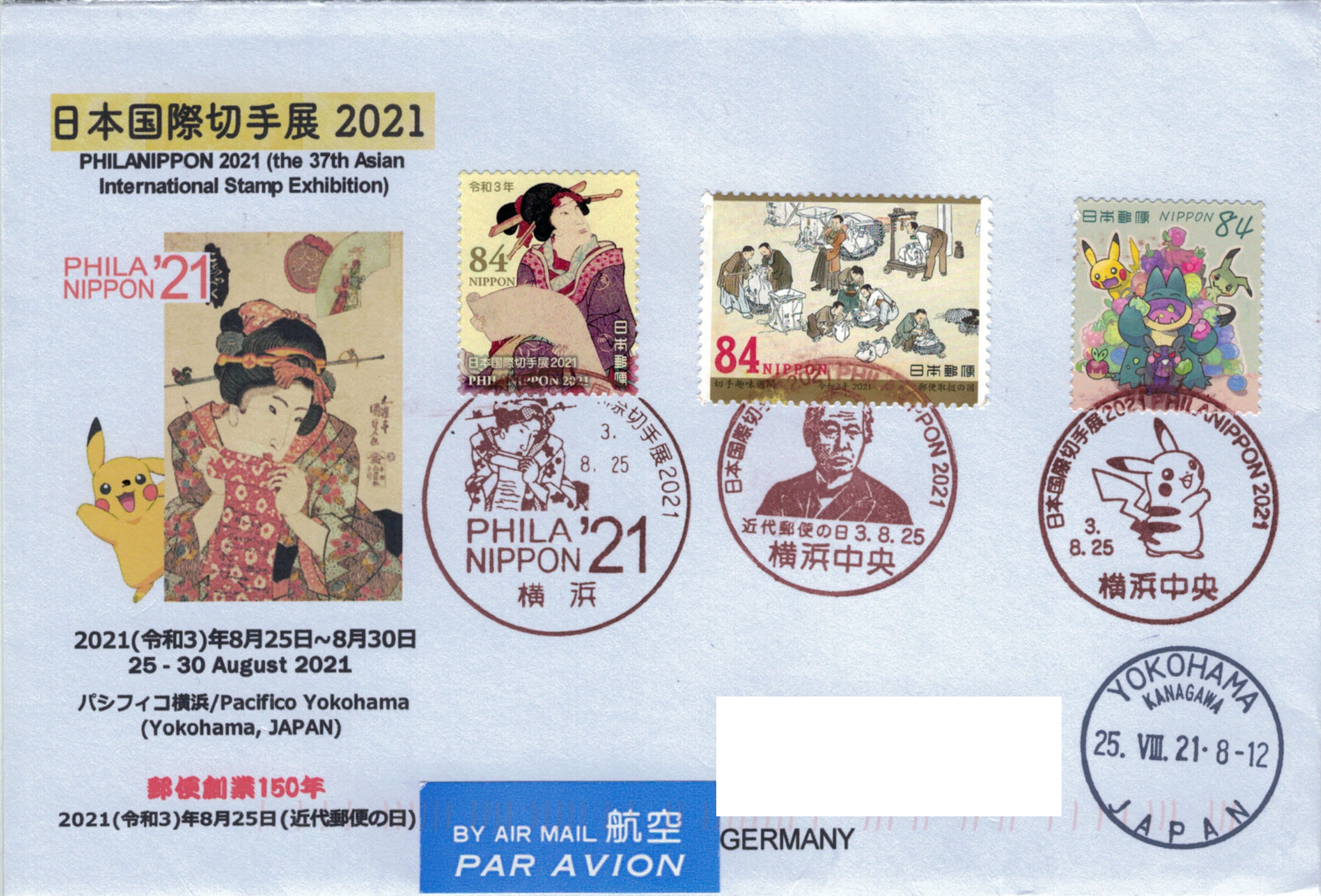


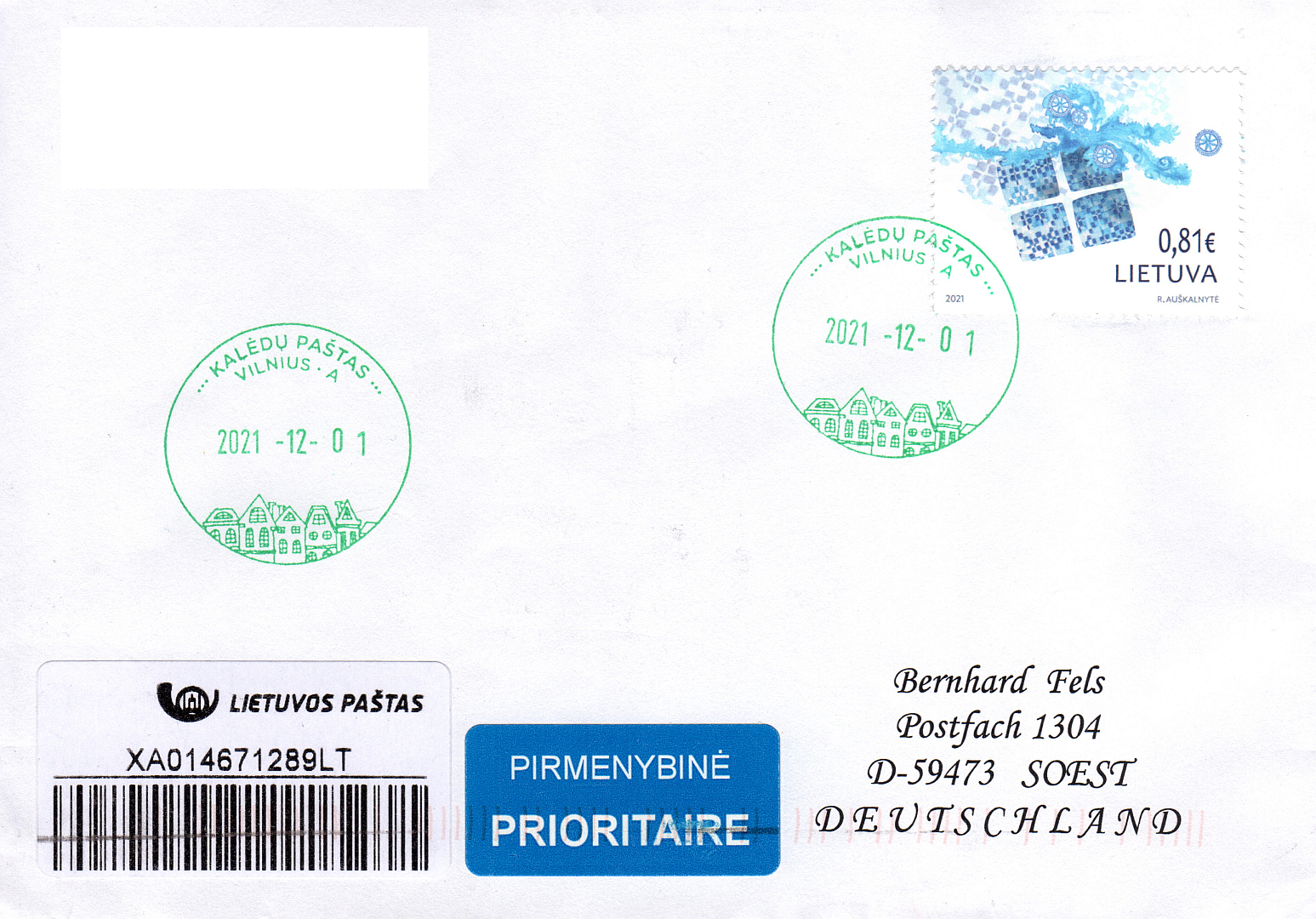
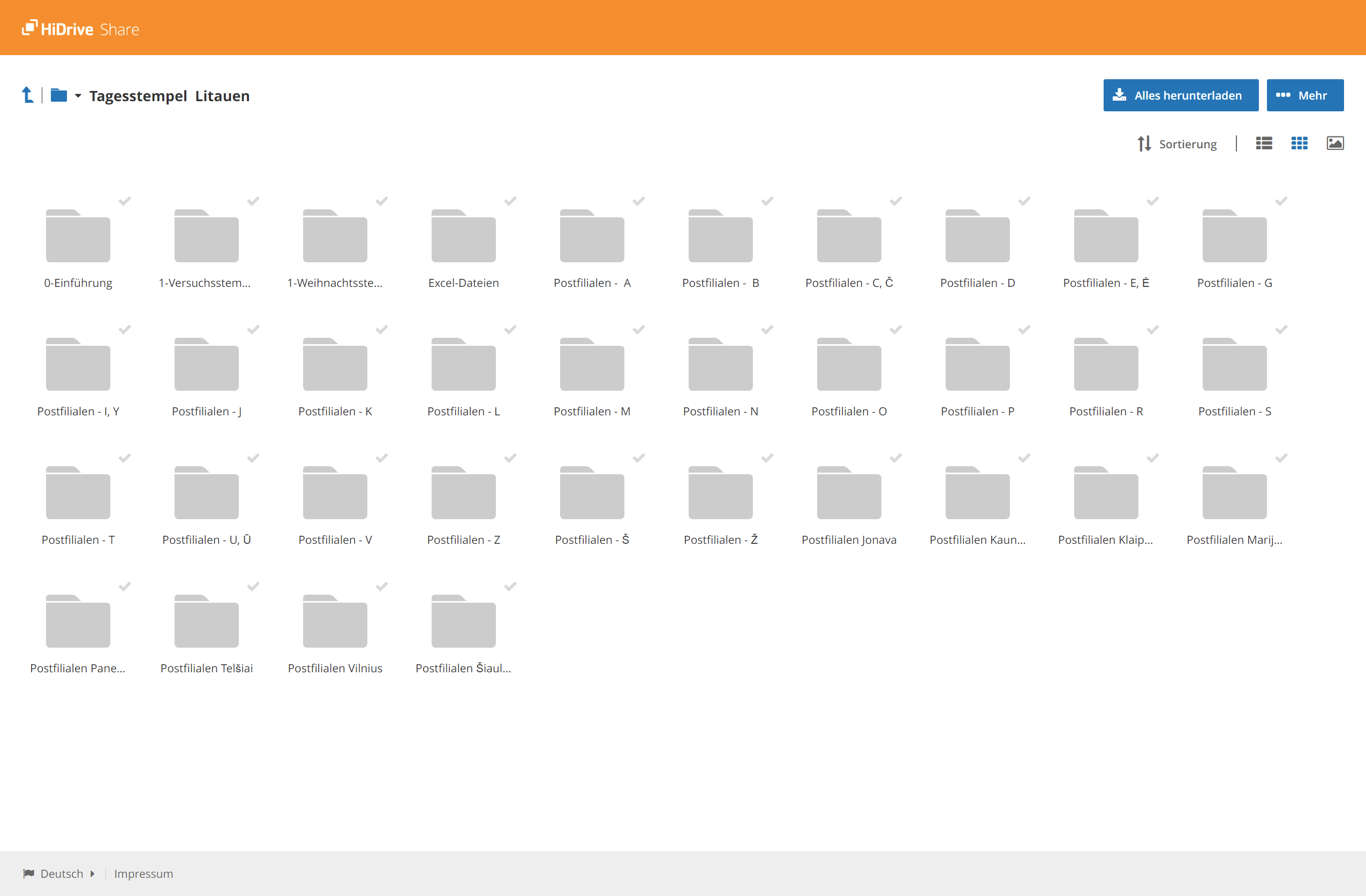
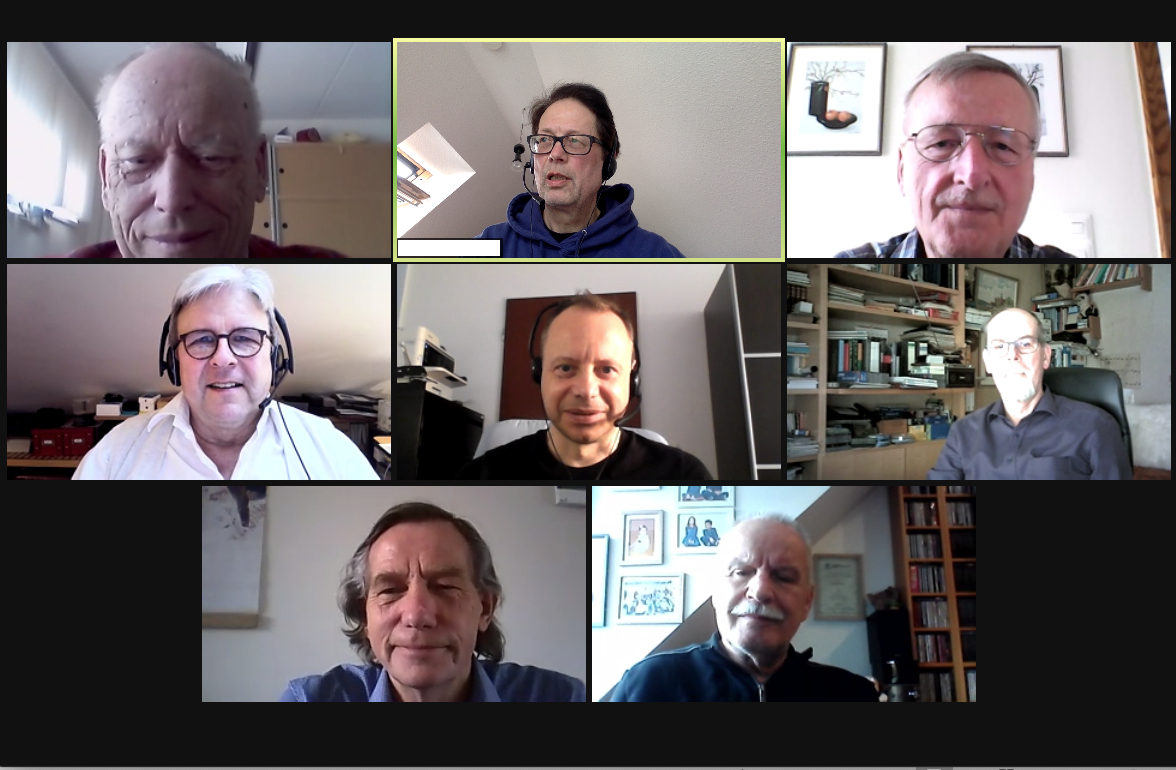


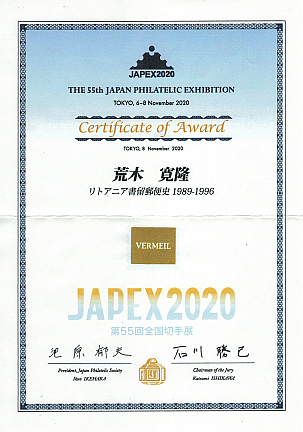

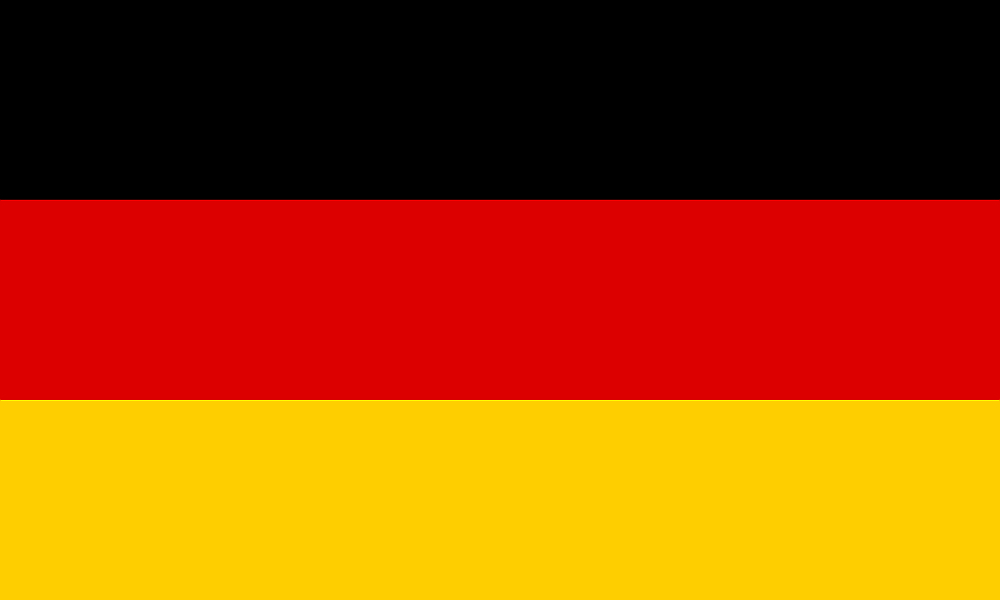

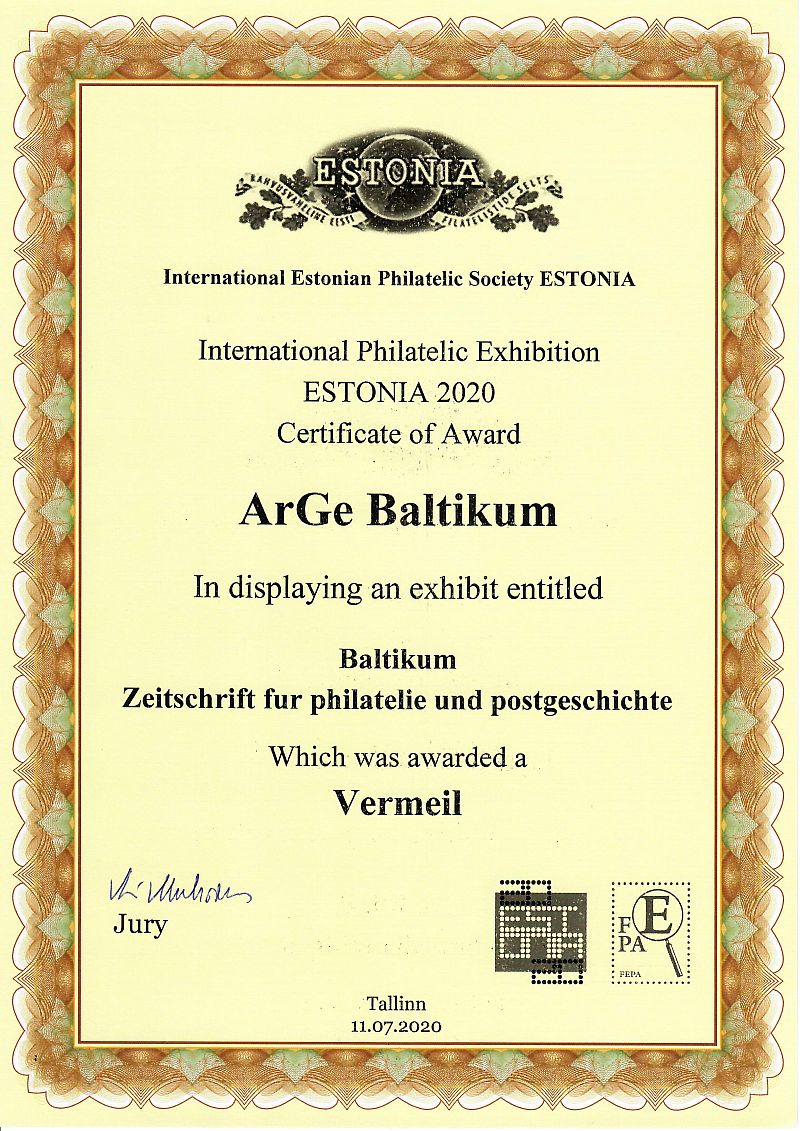


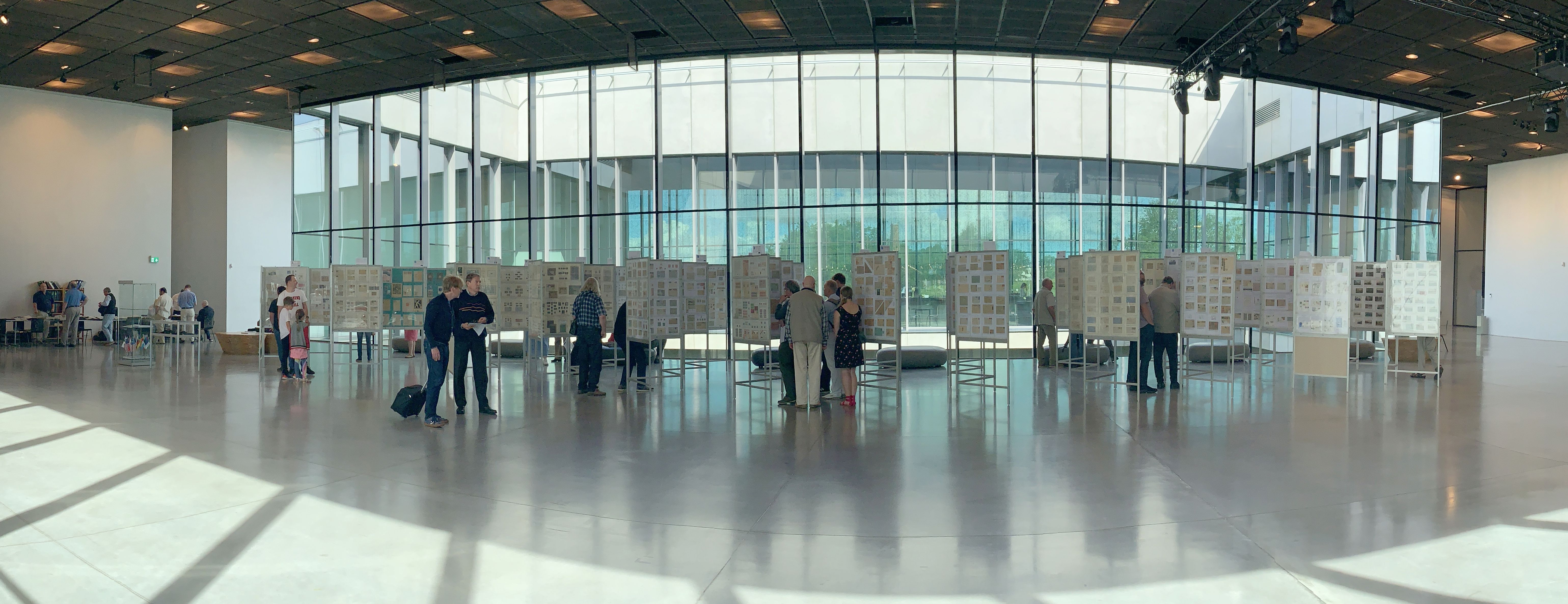



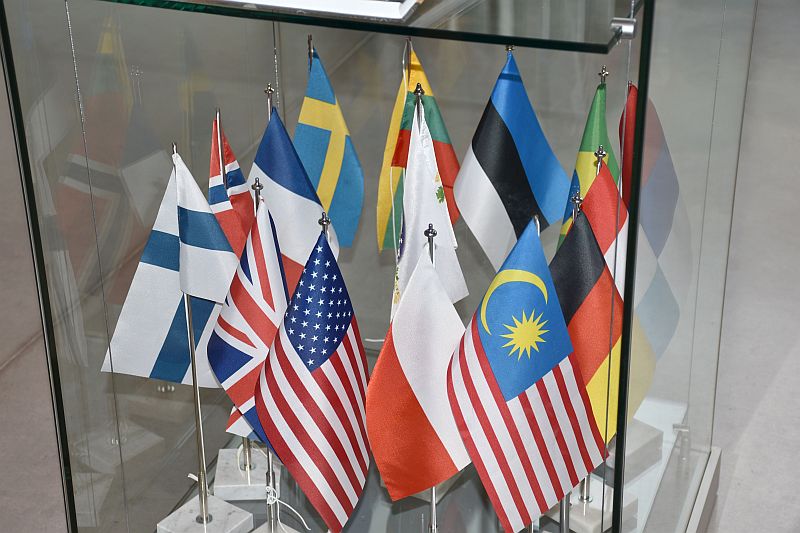



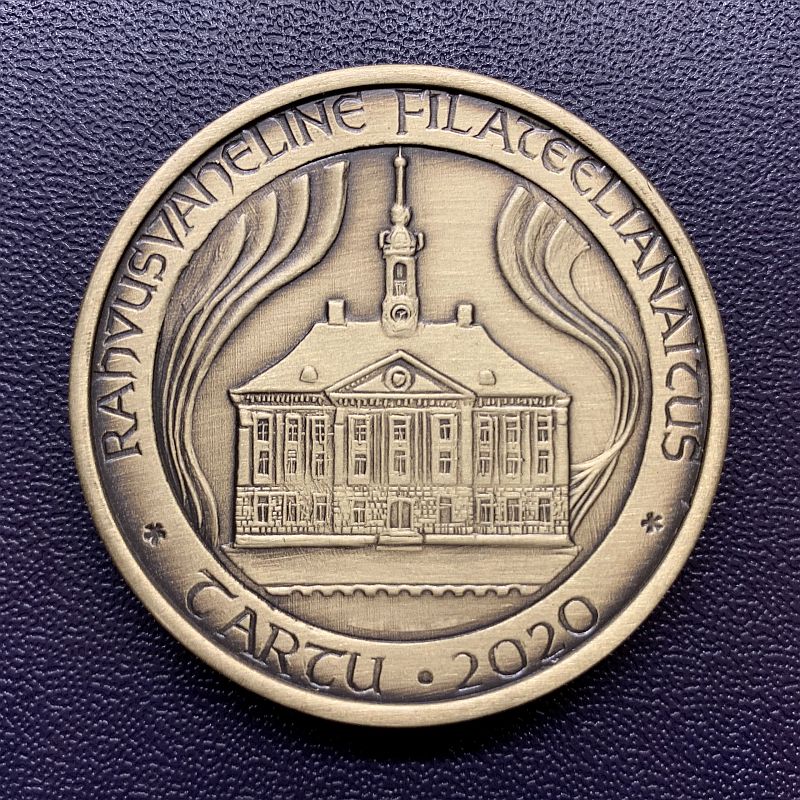



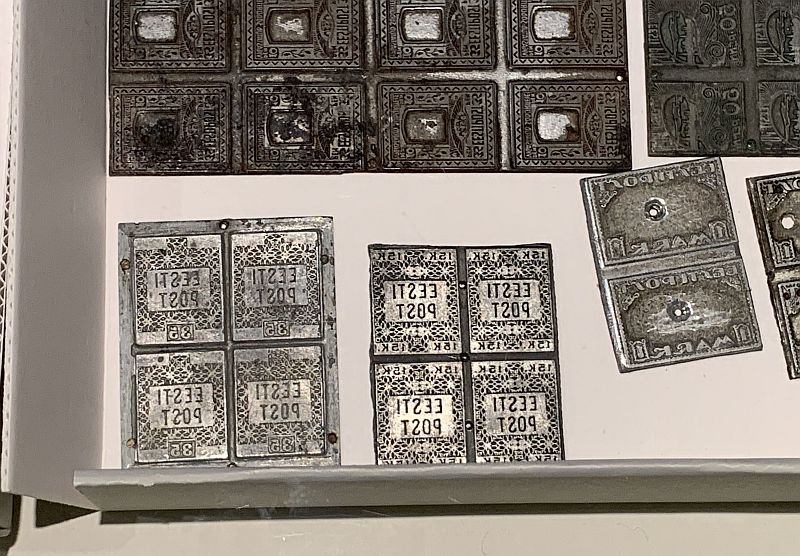
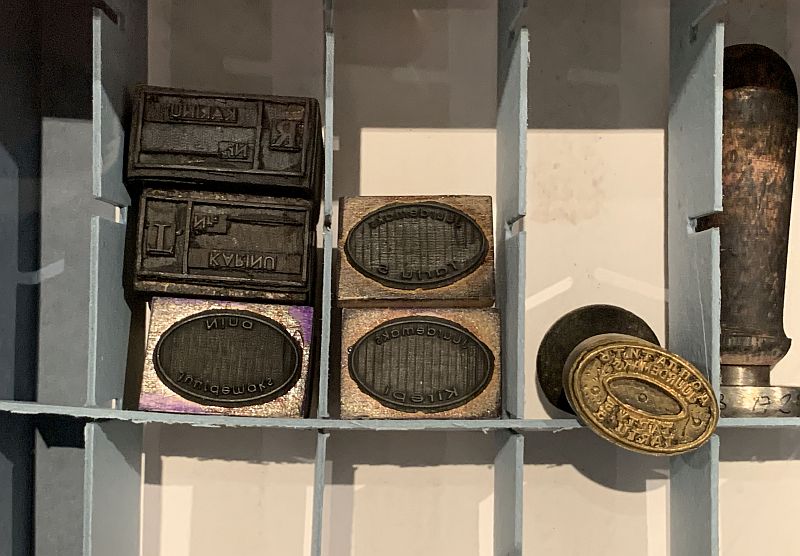
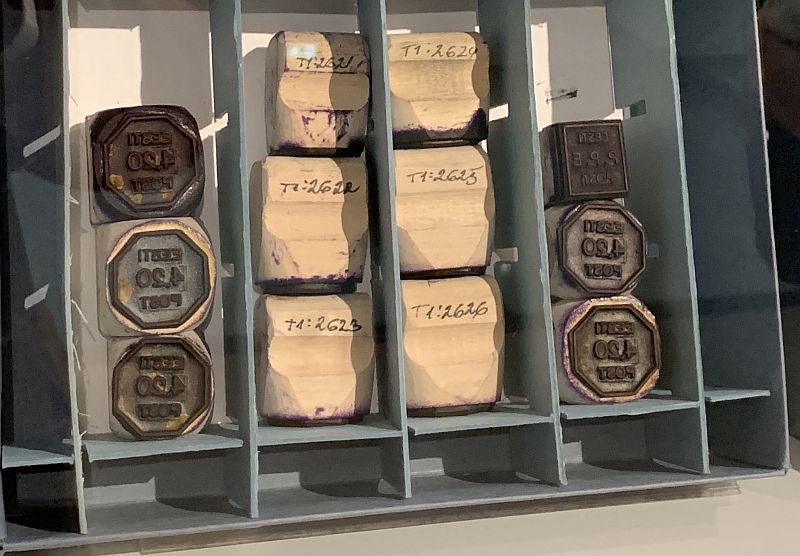
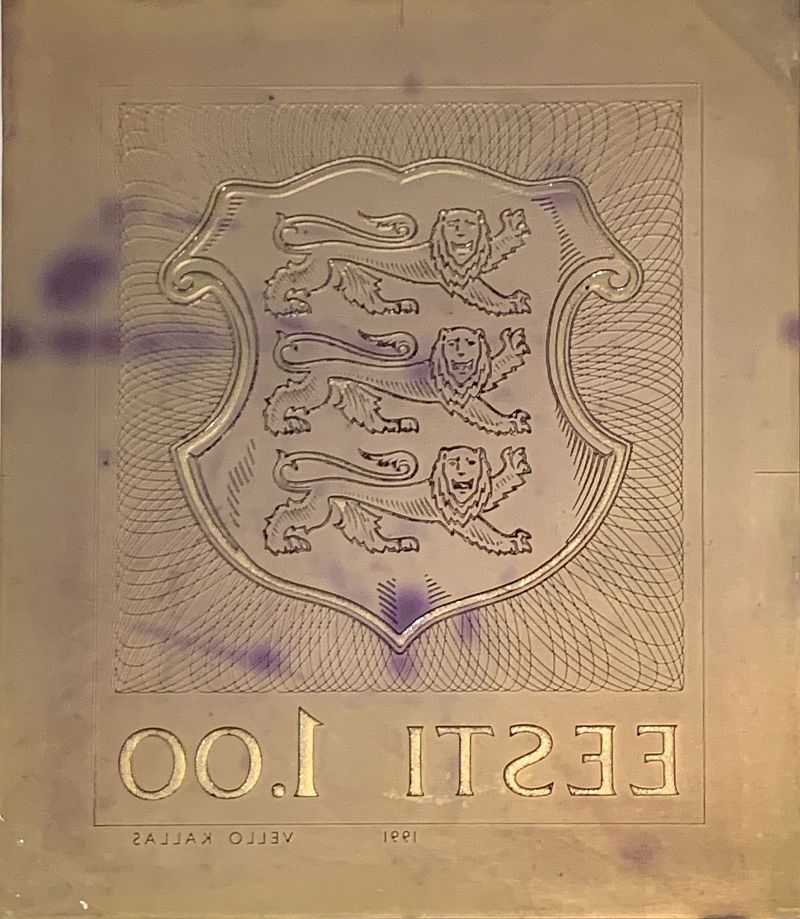
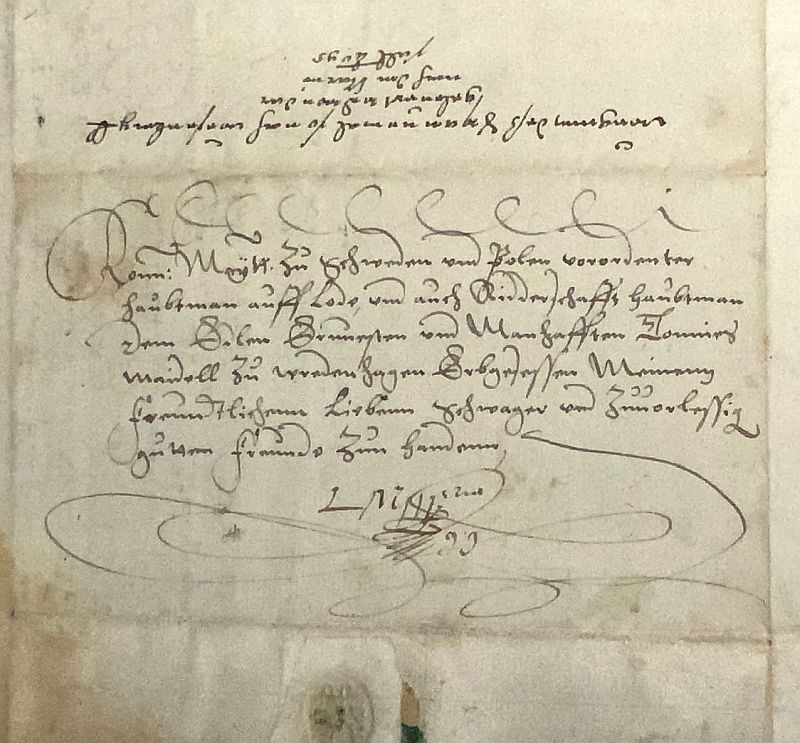


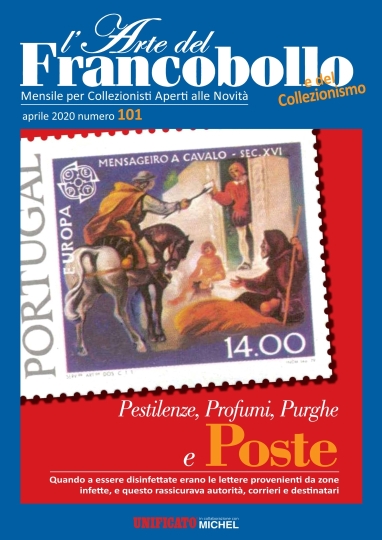
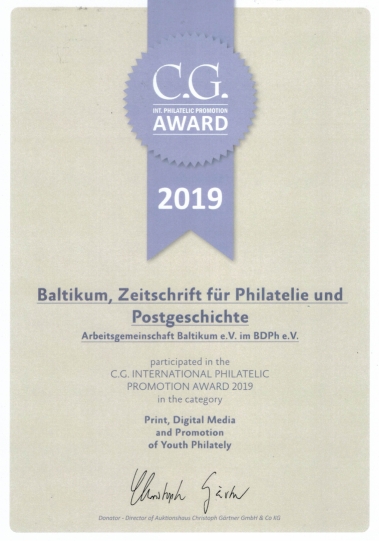


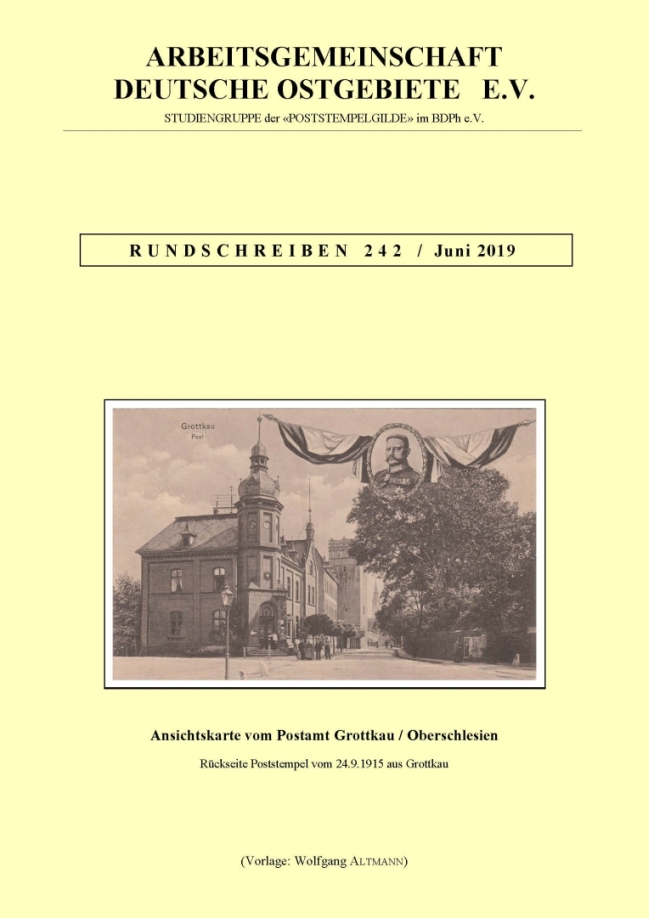
.jpg)
